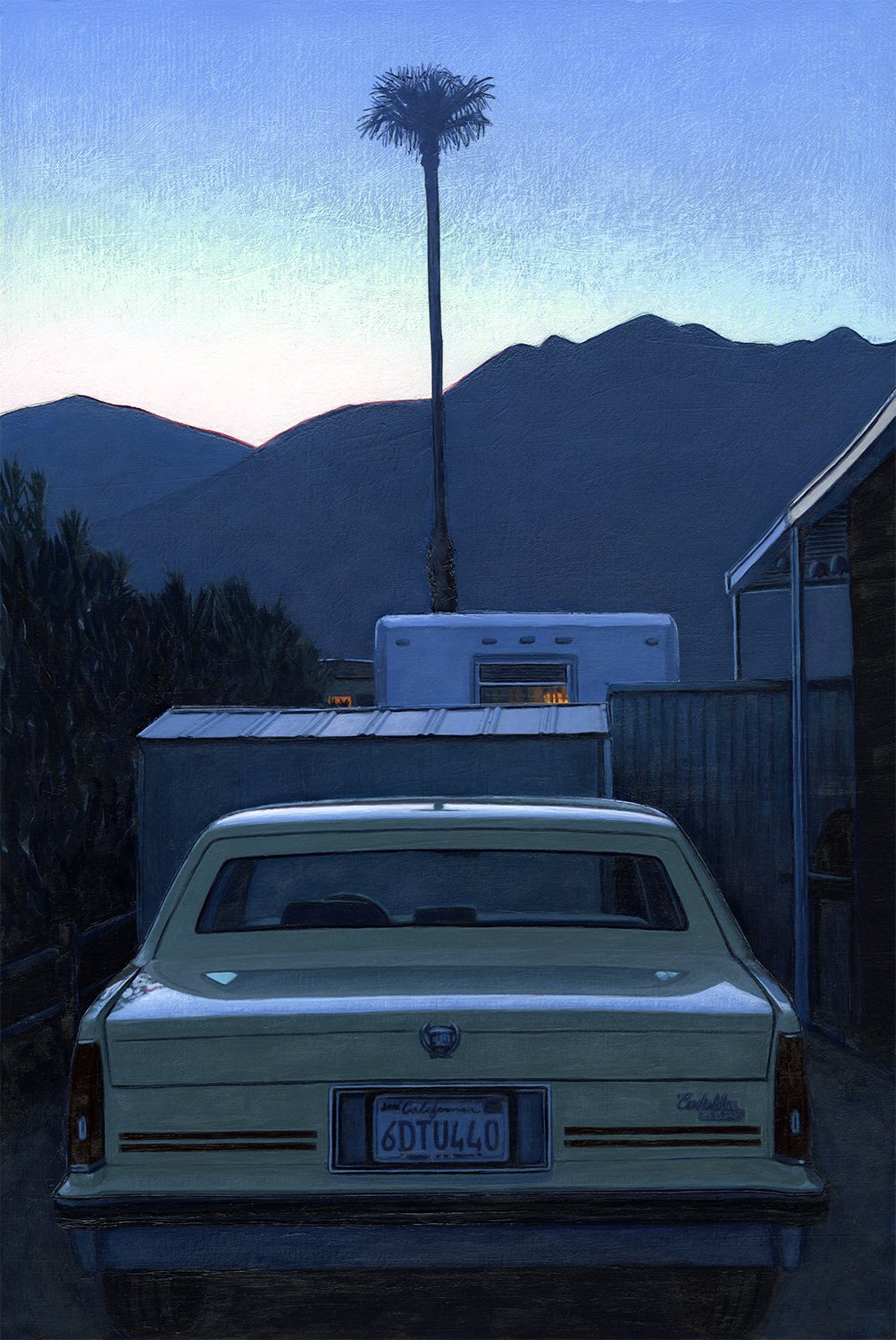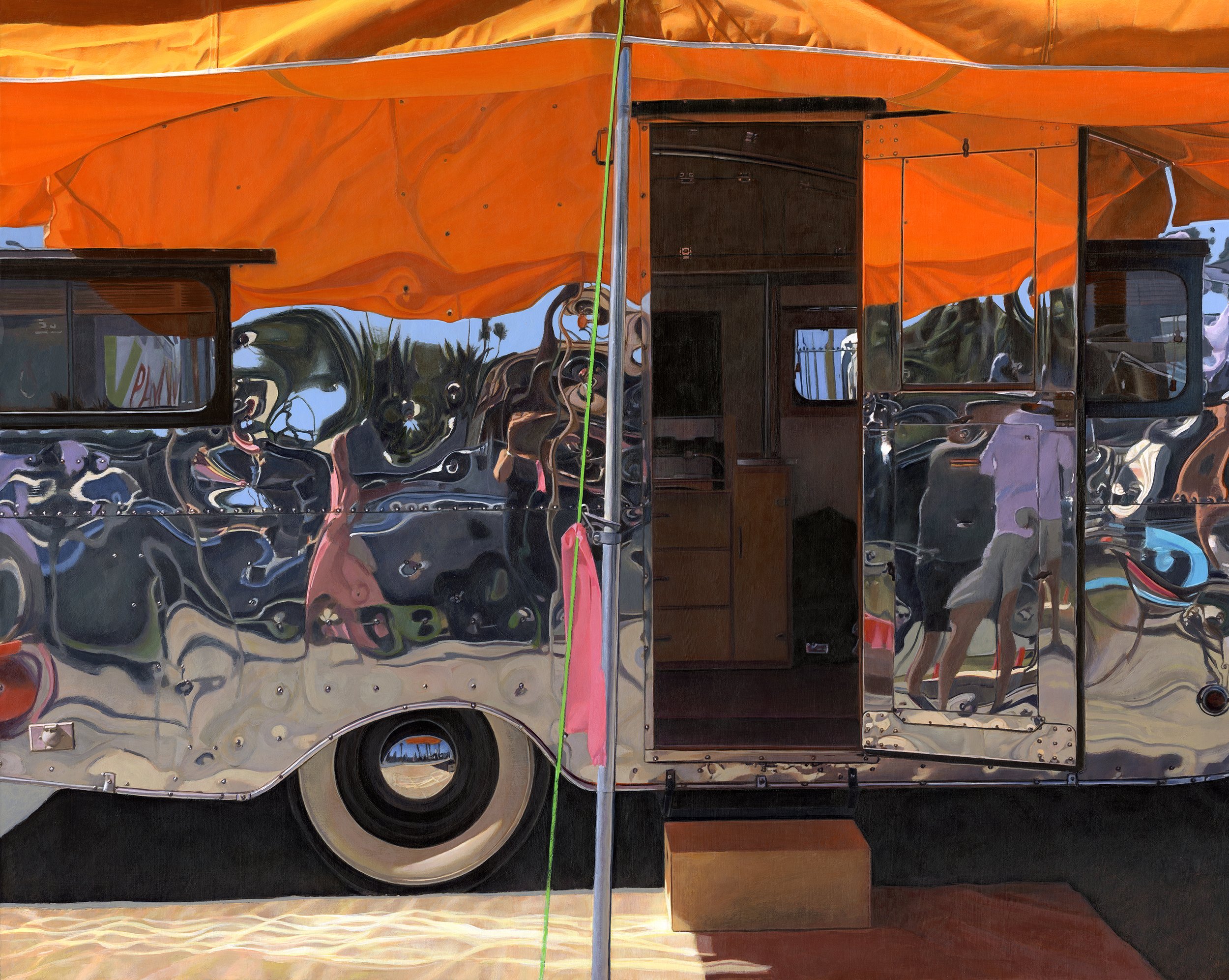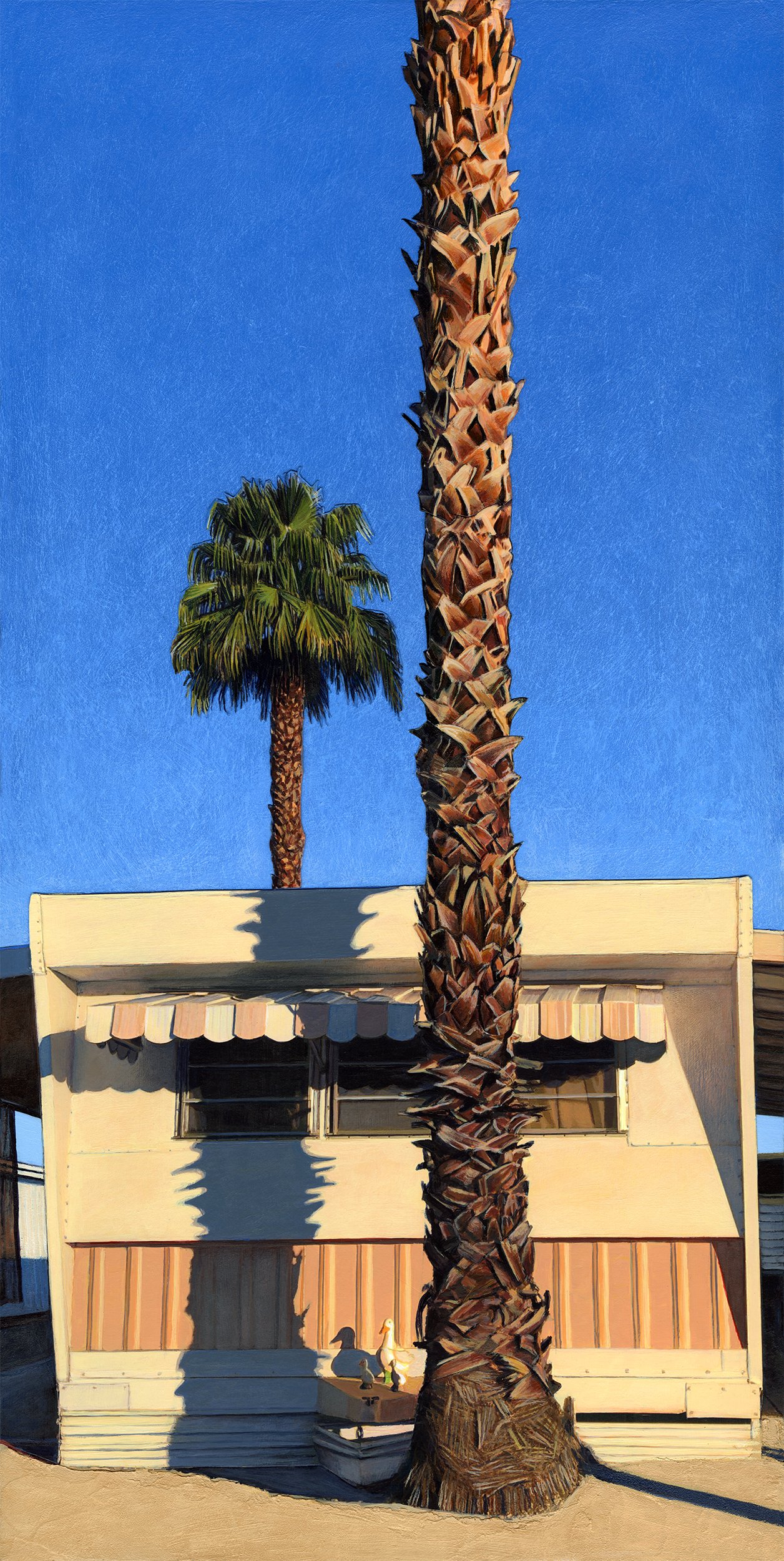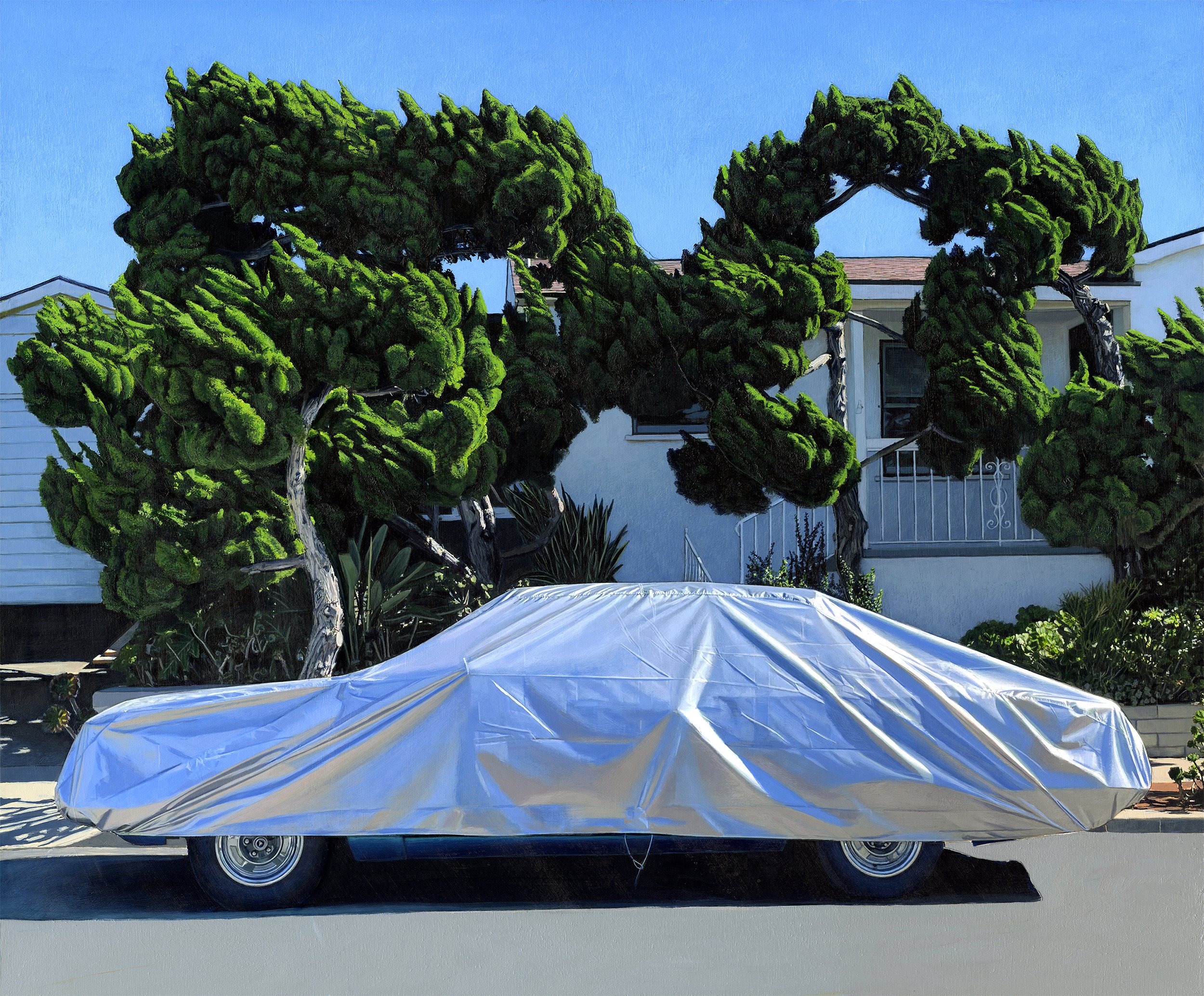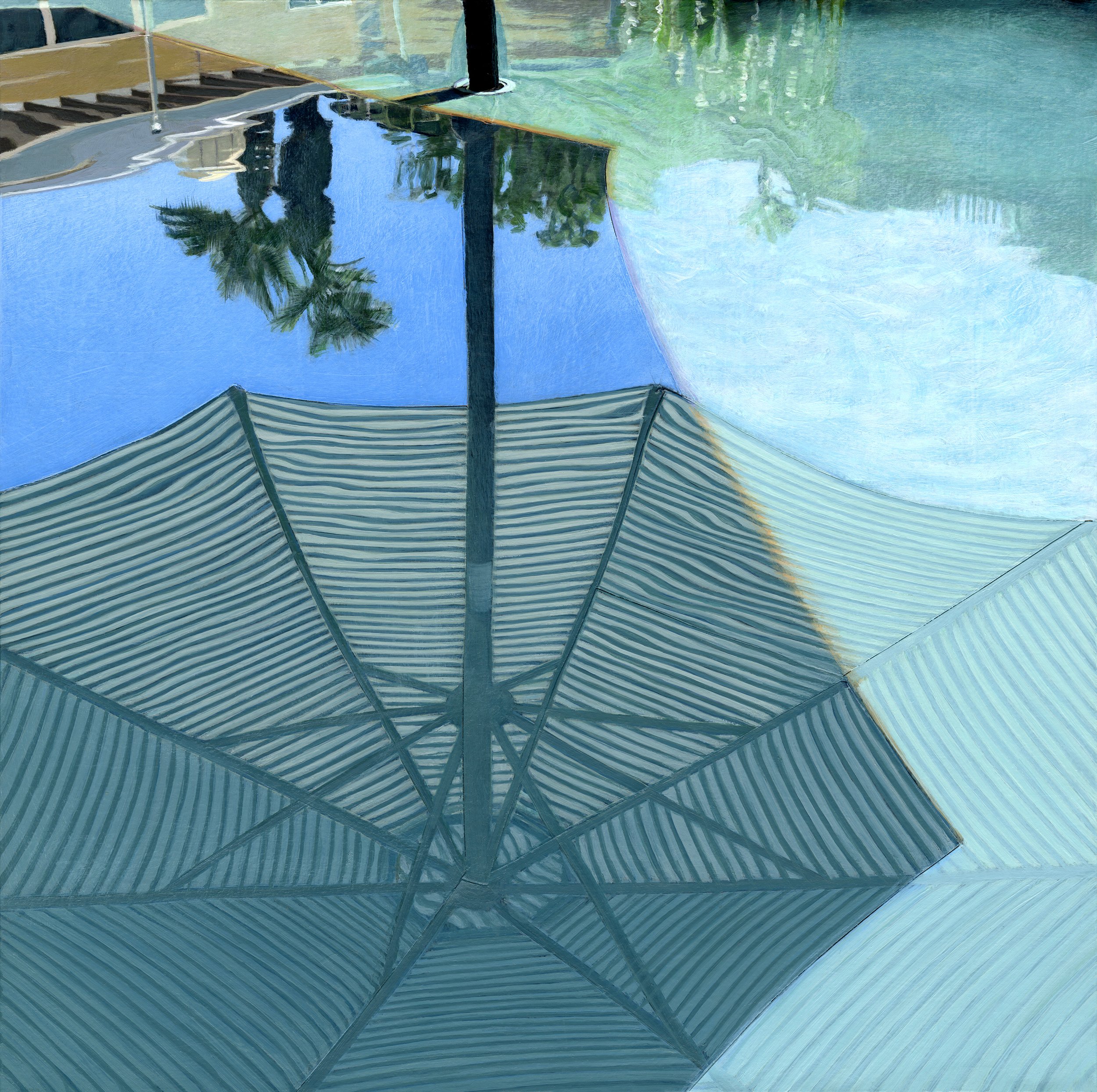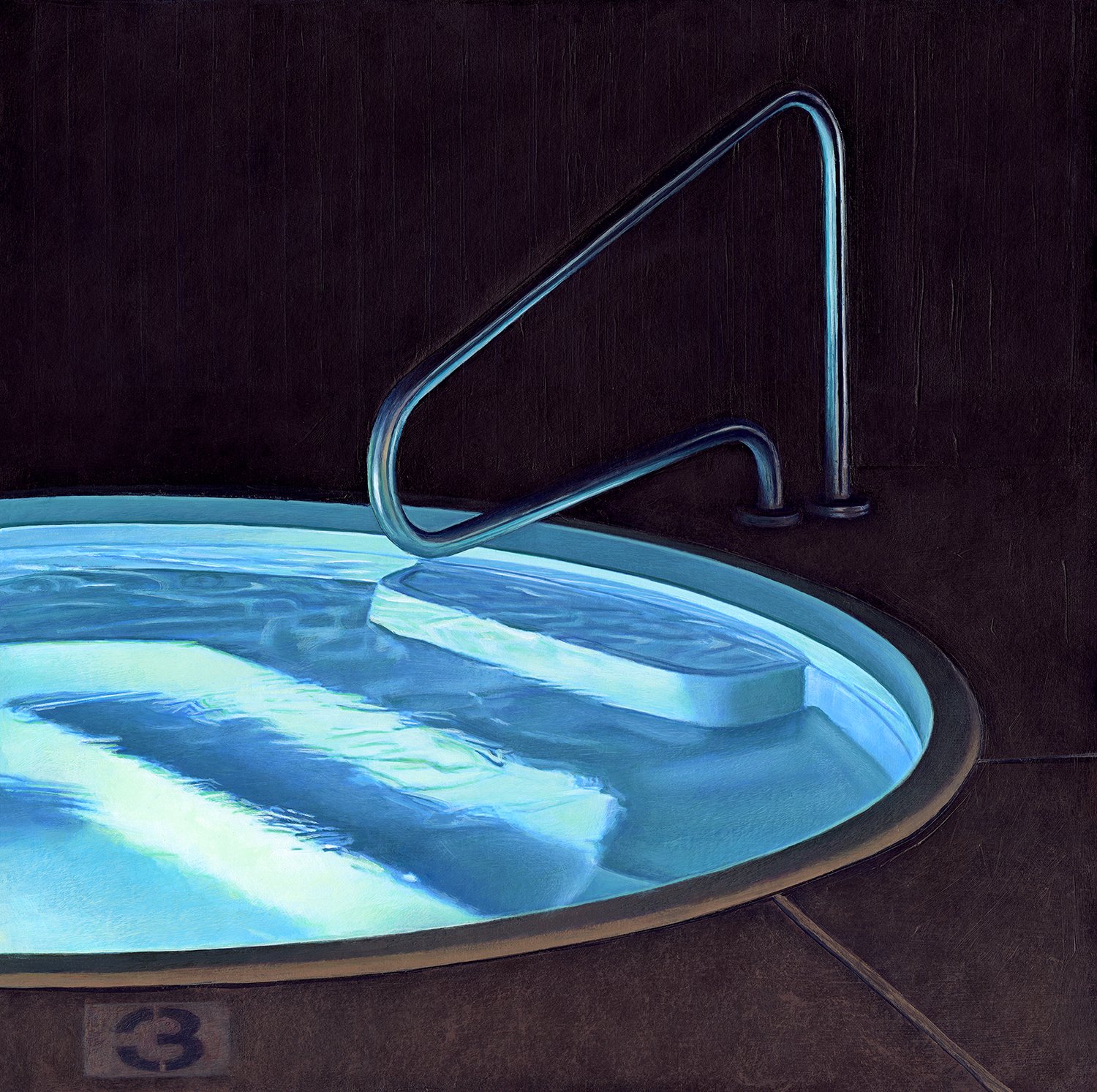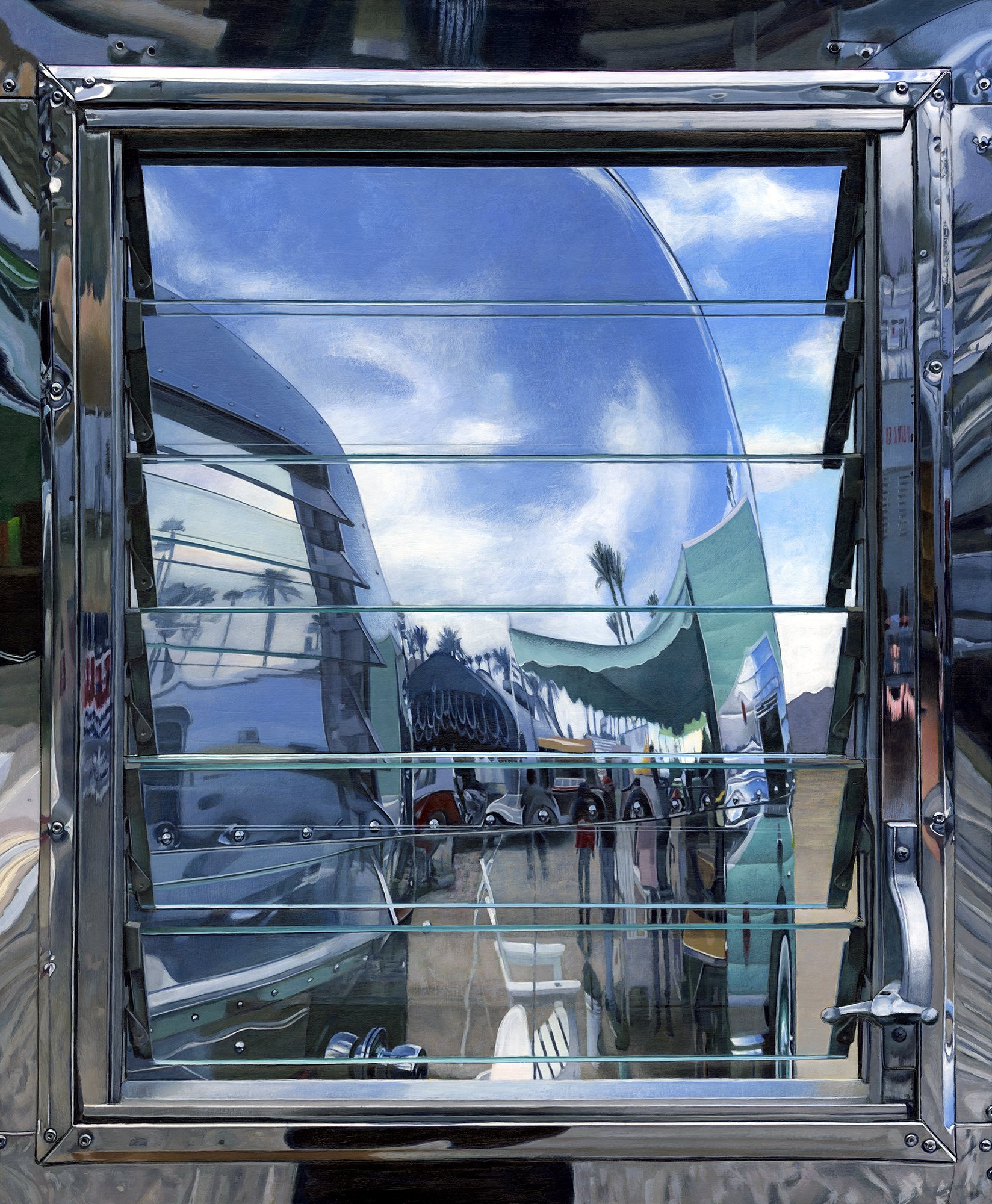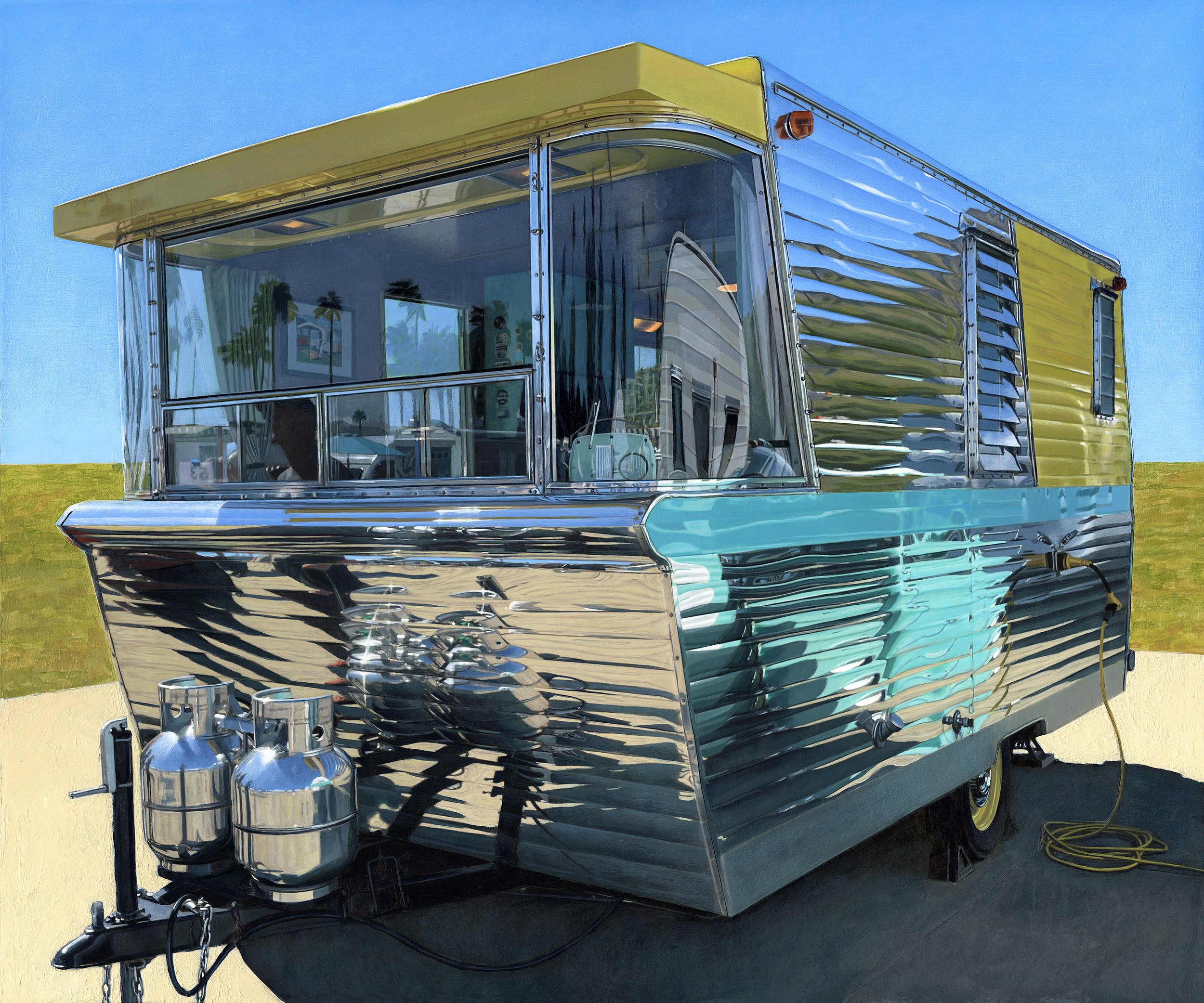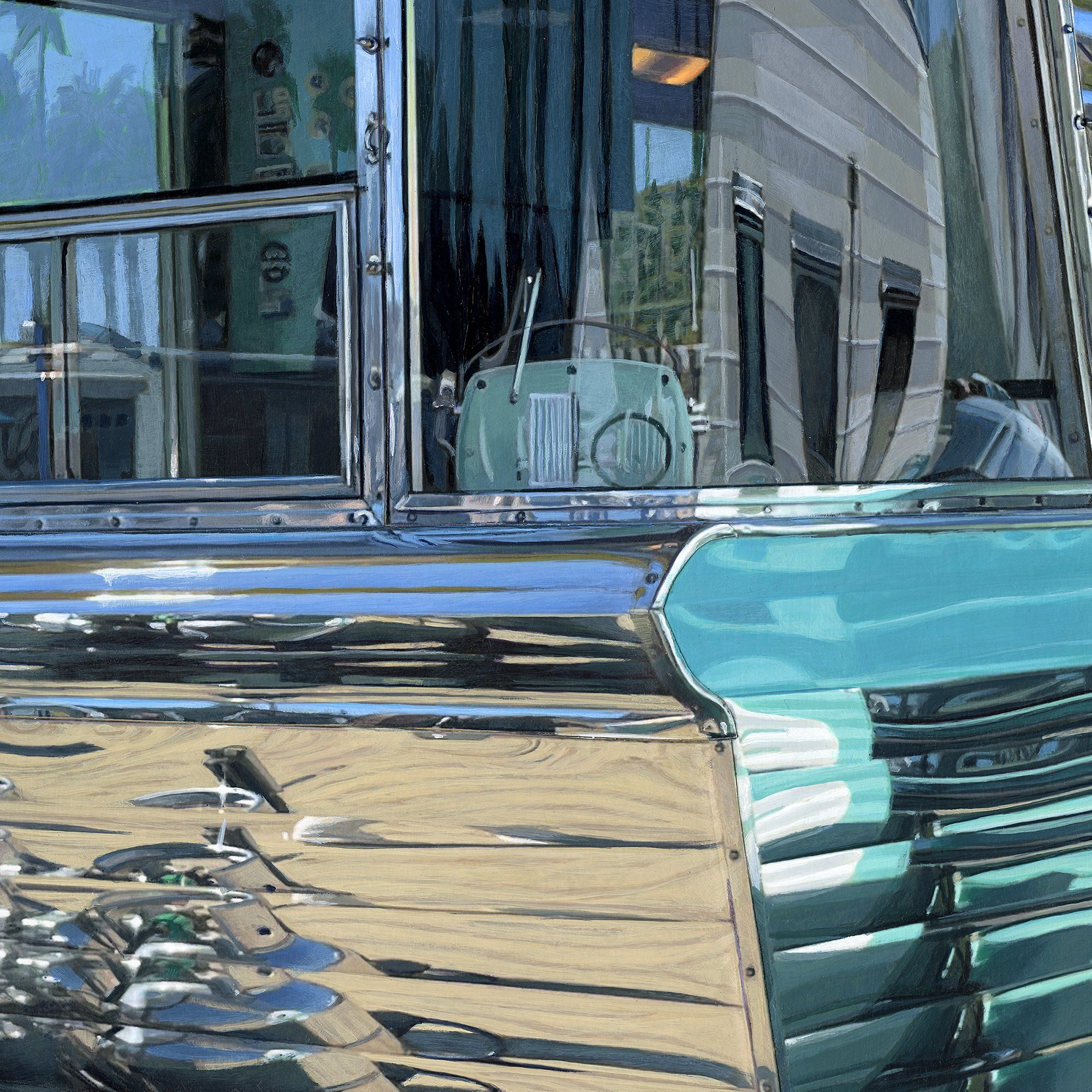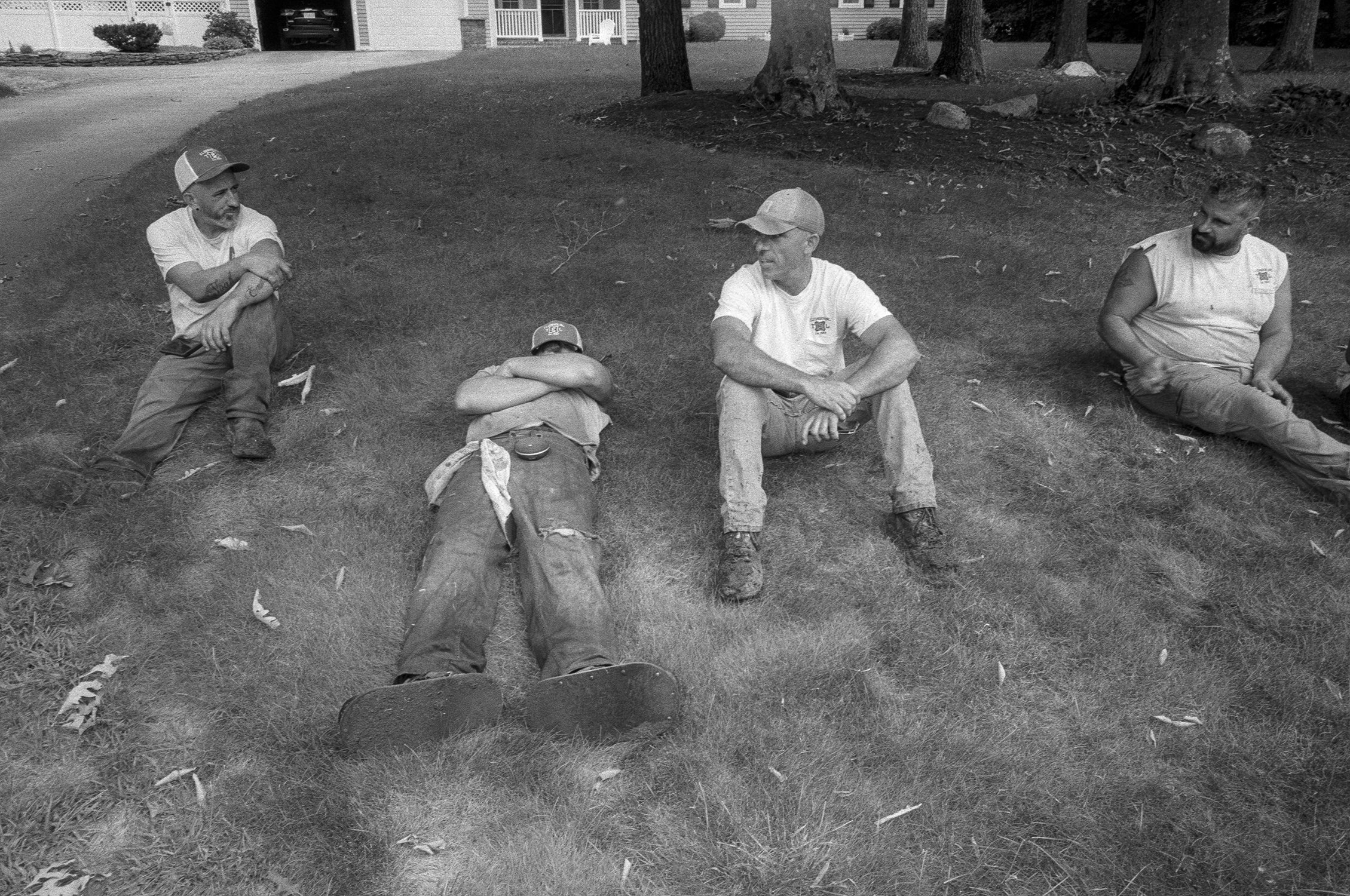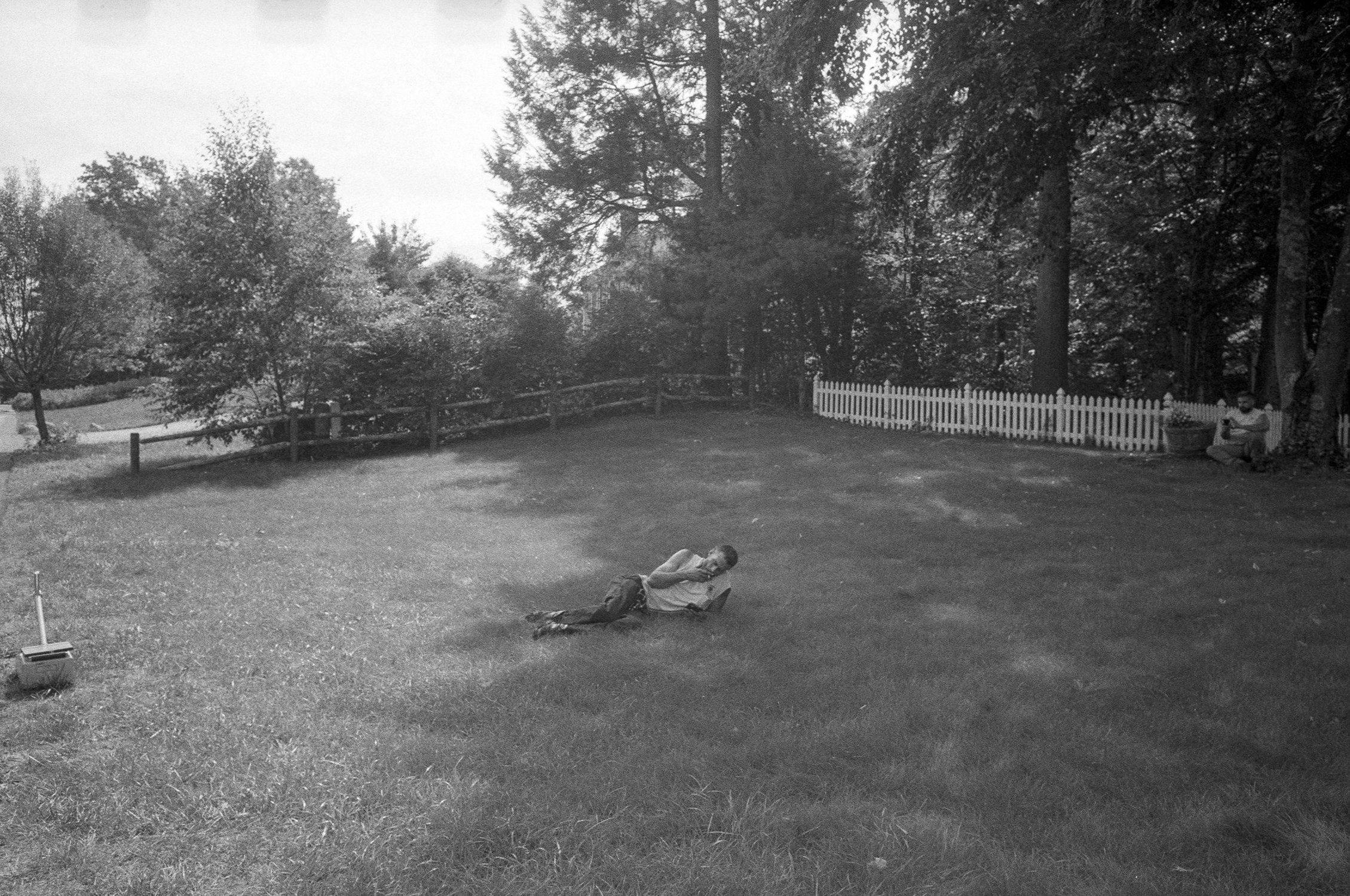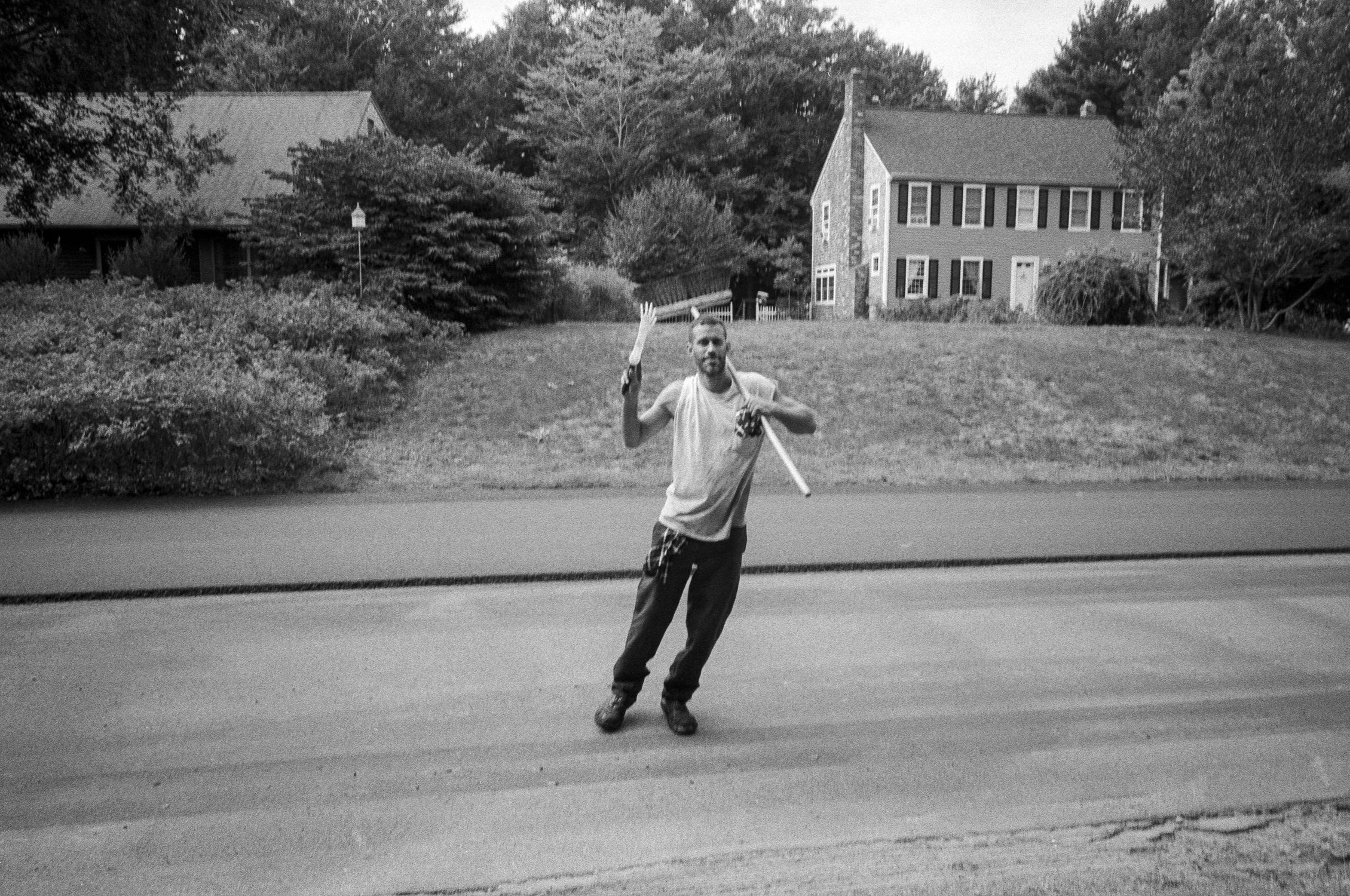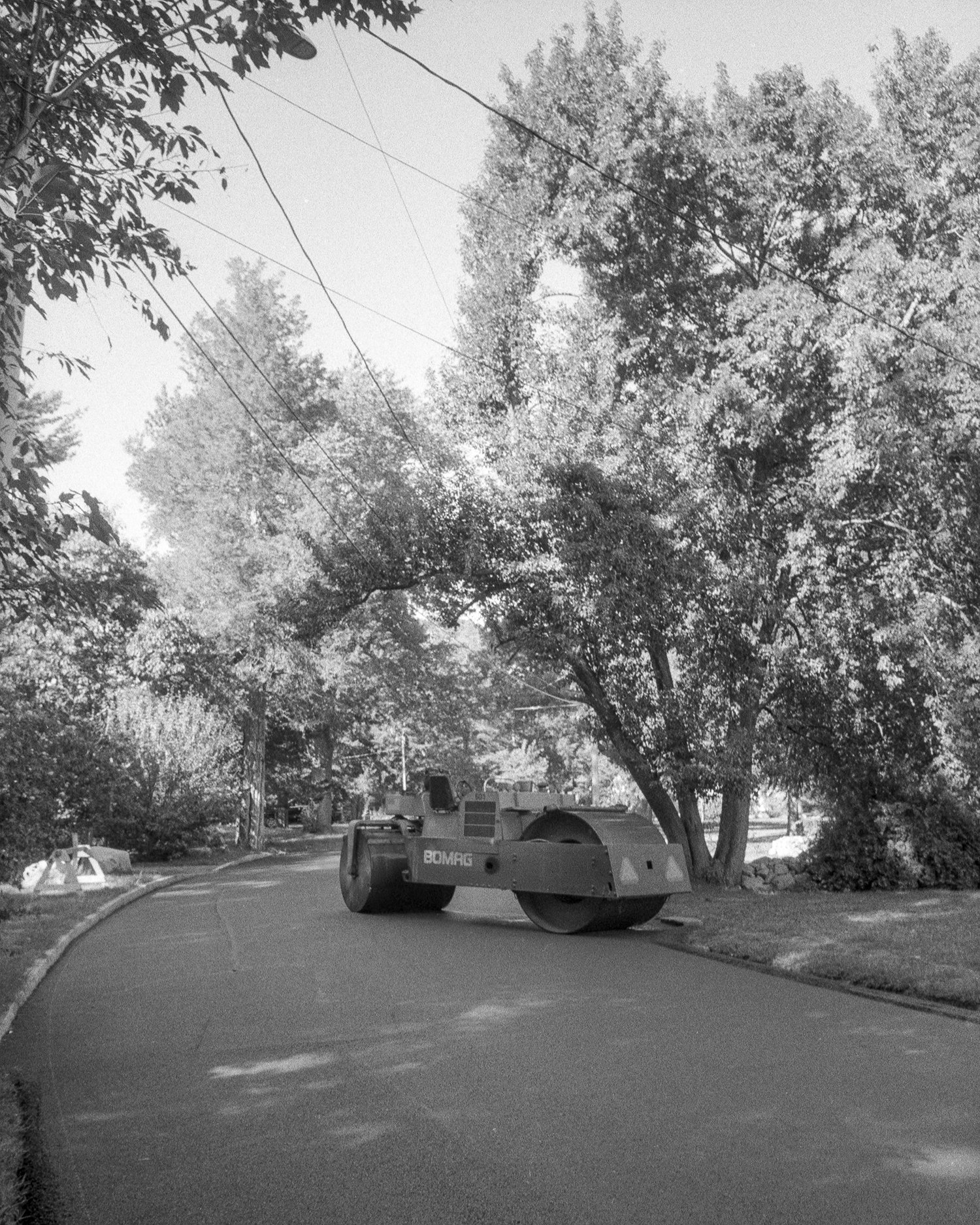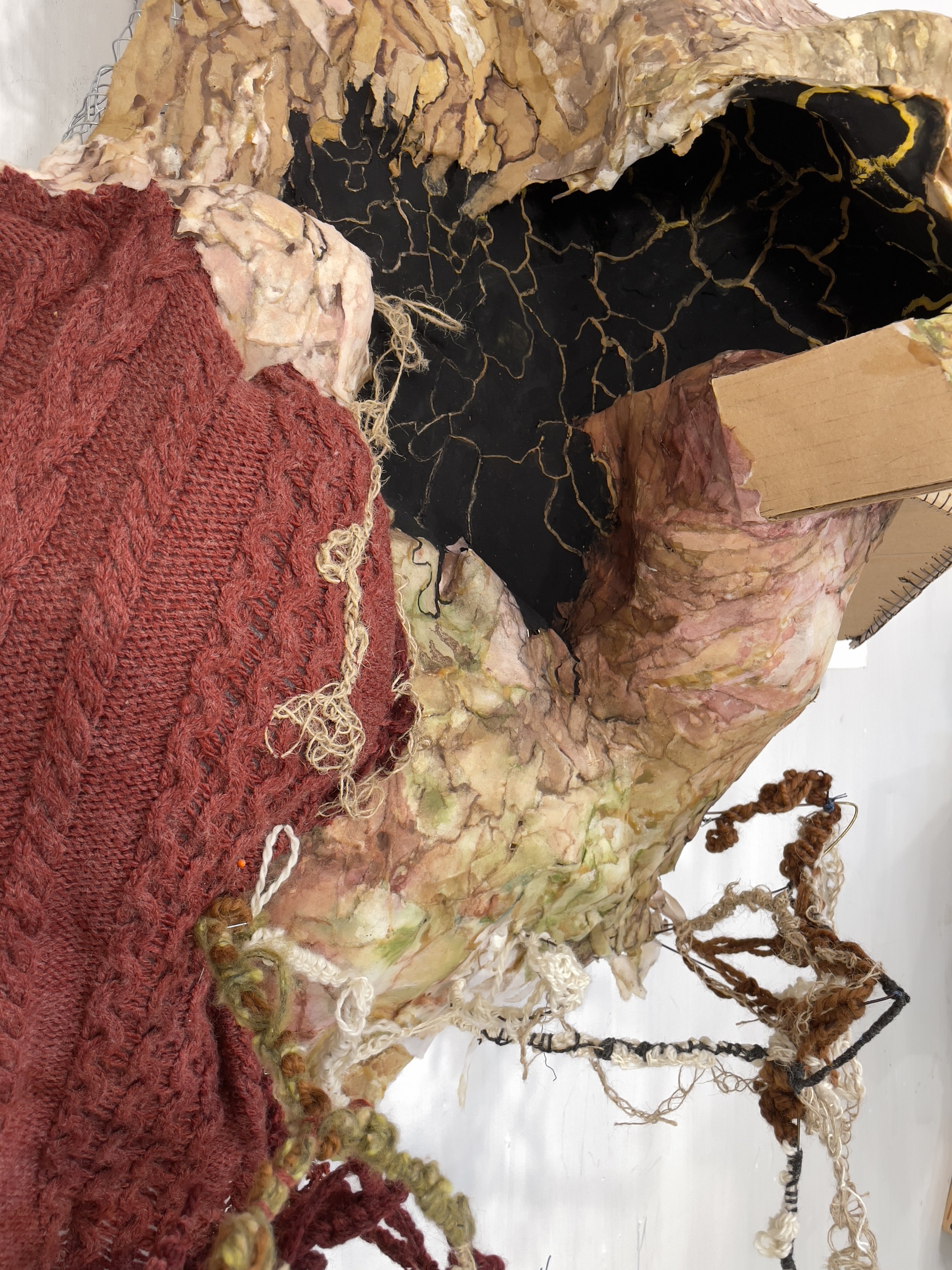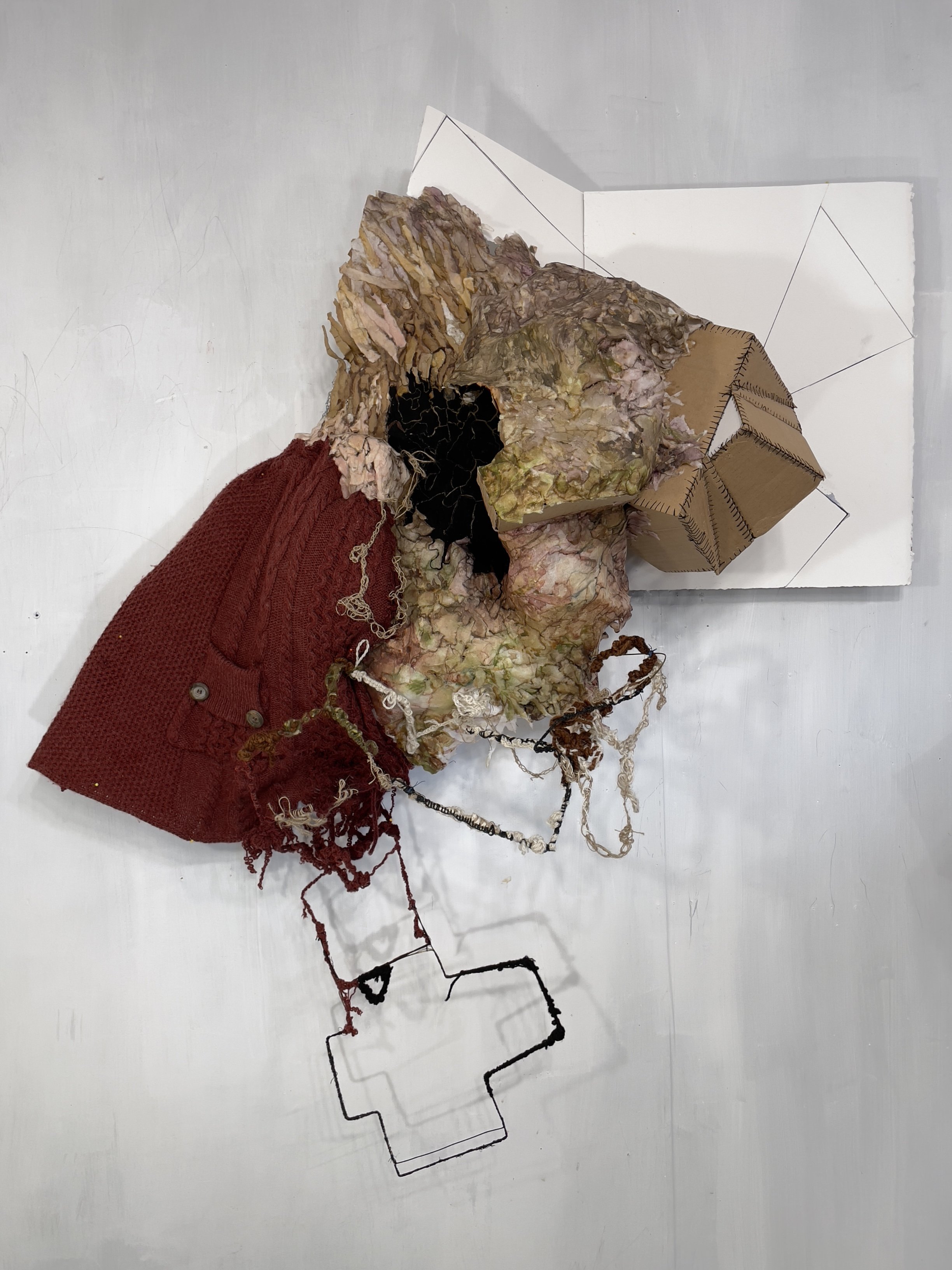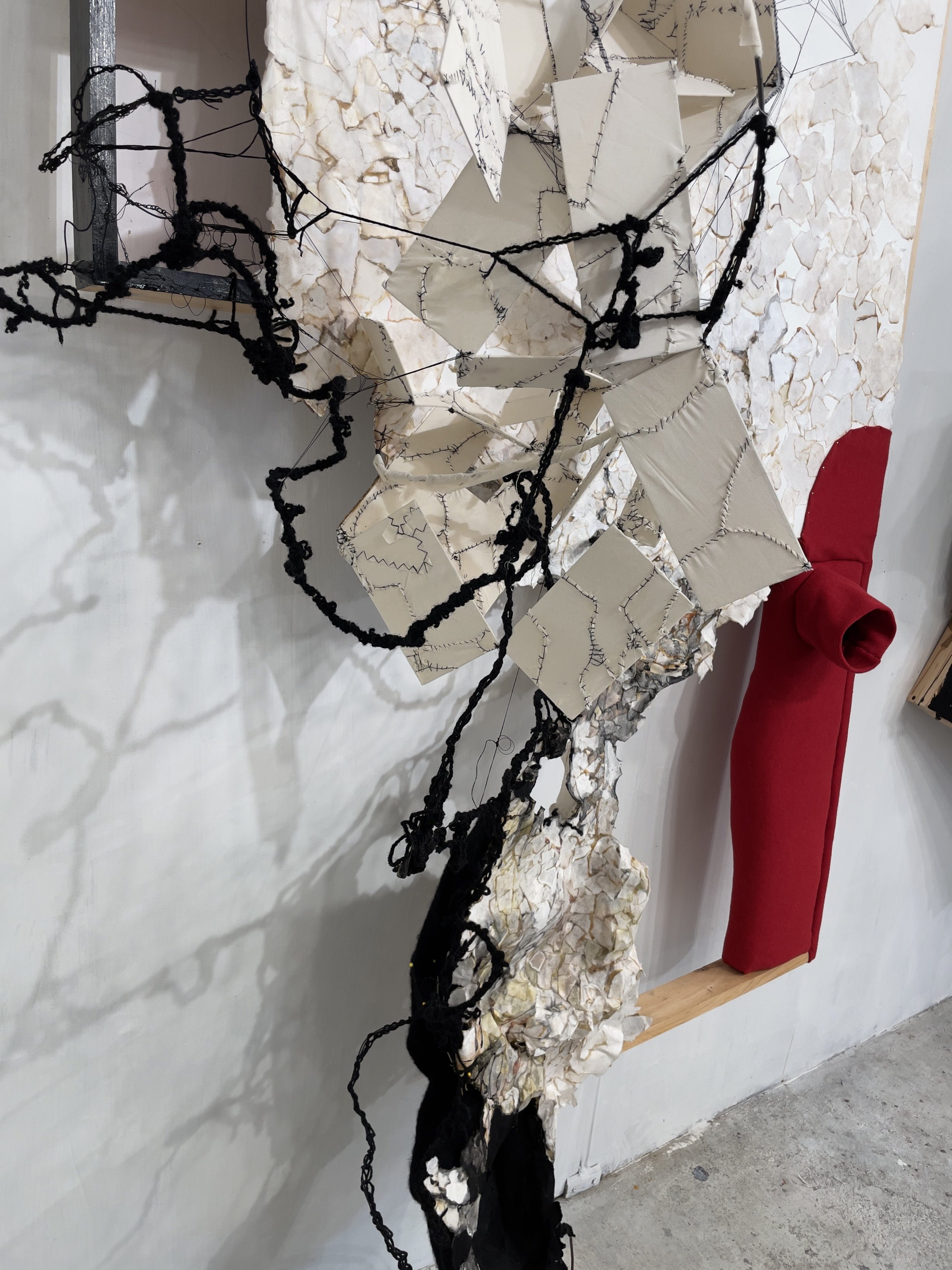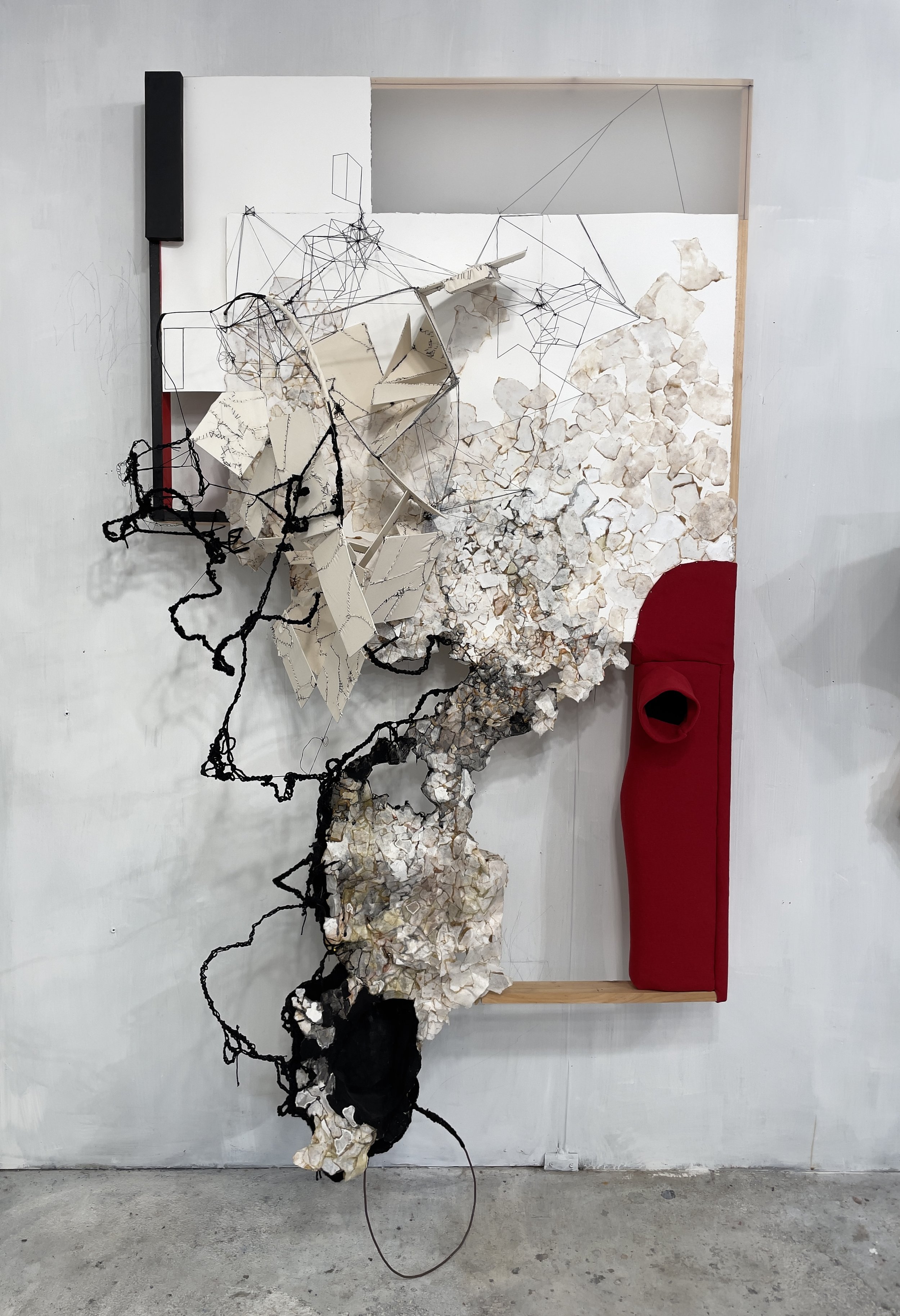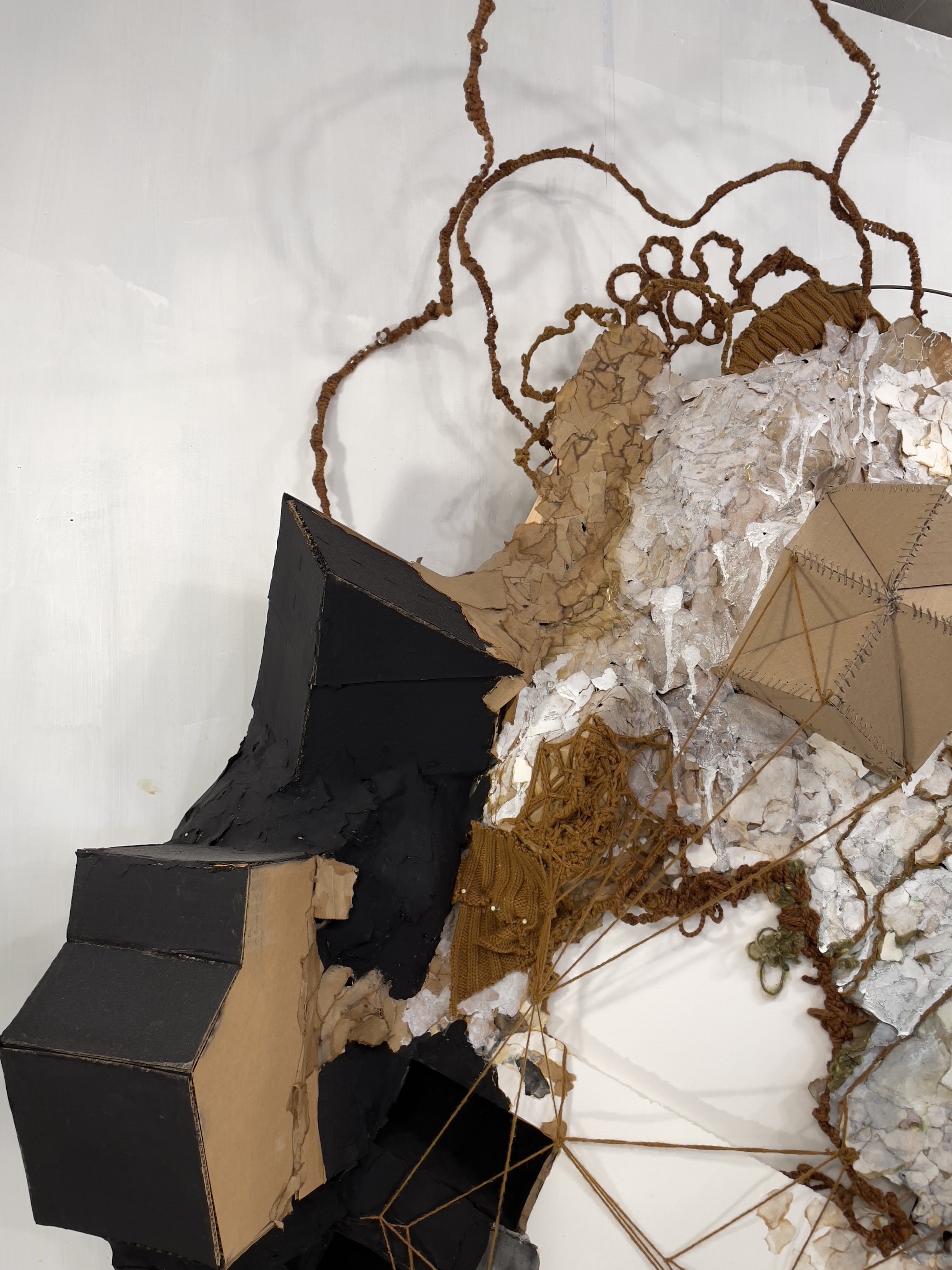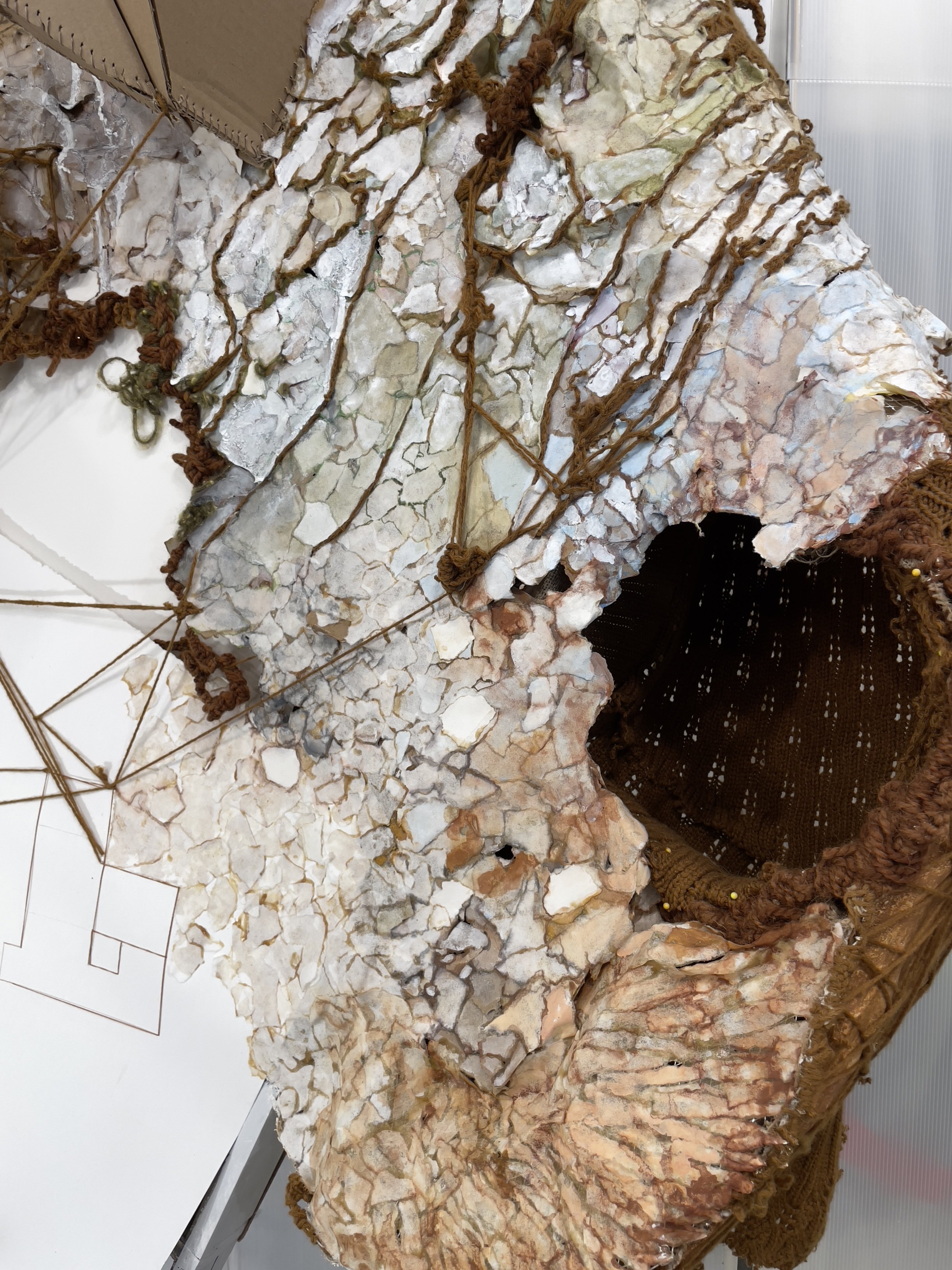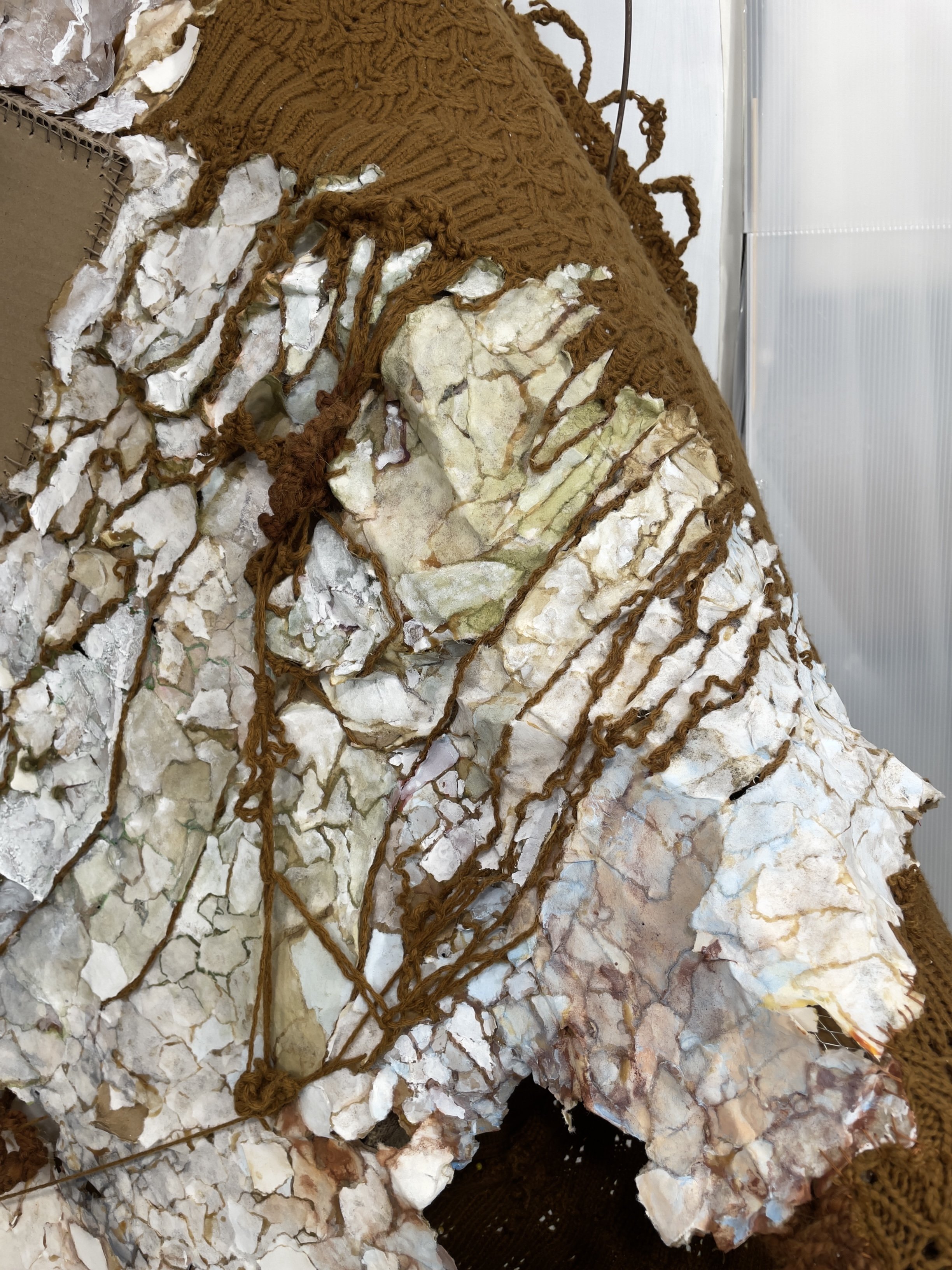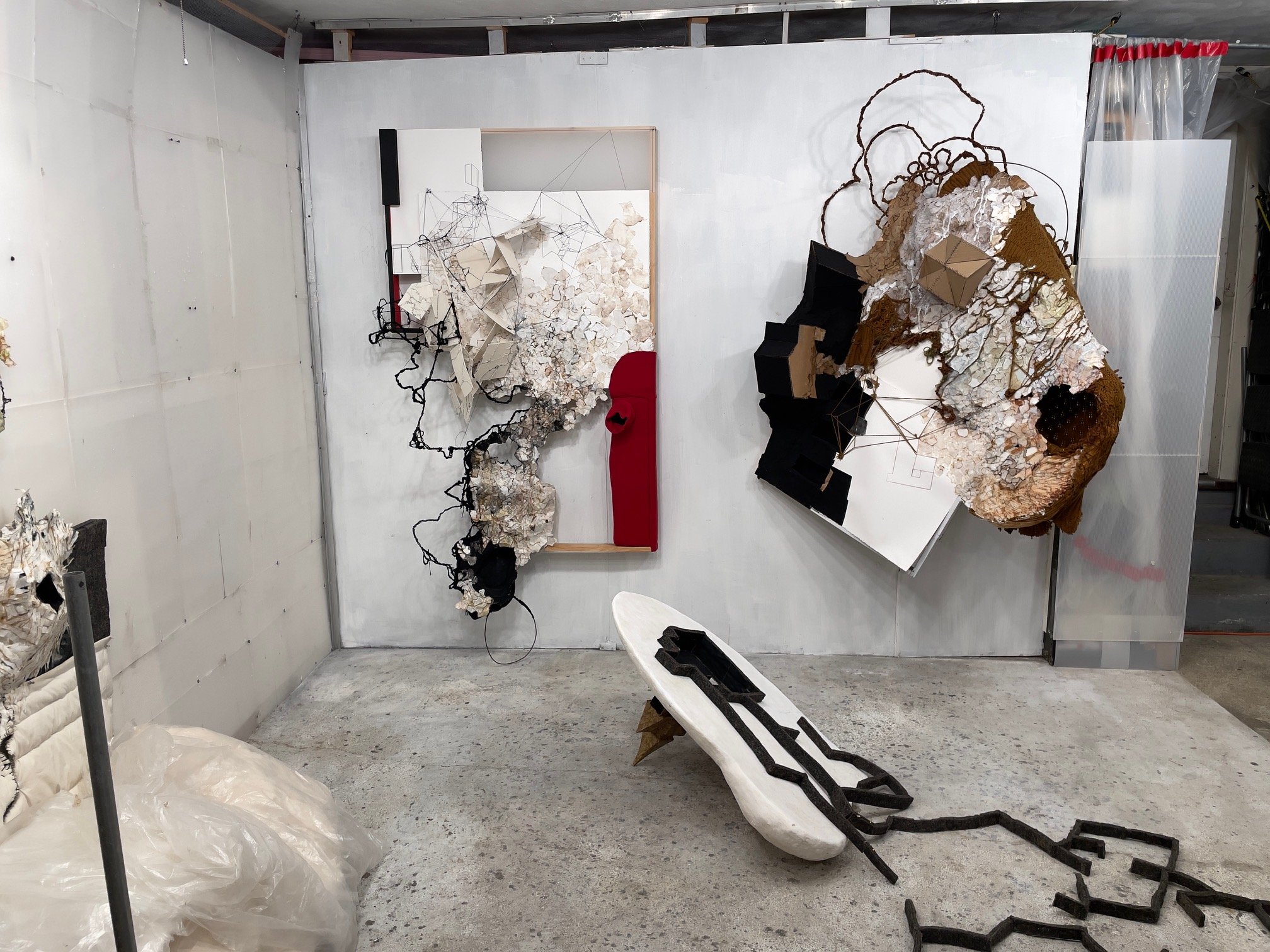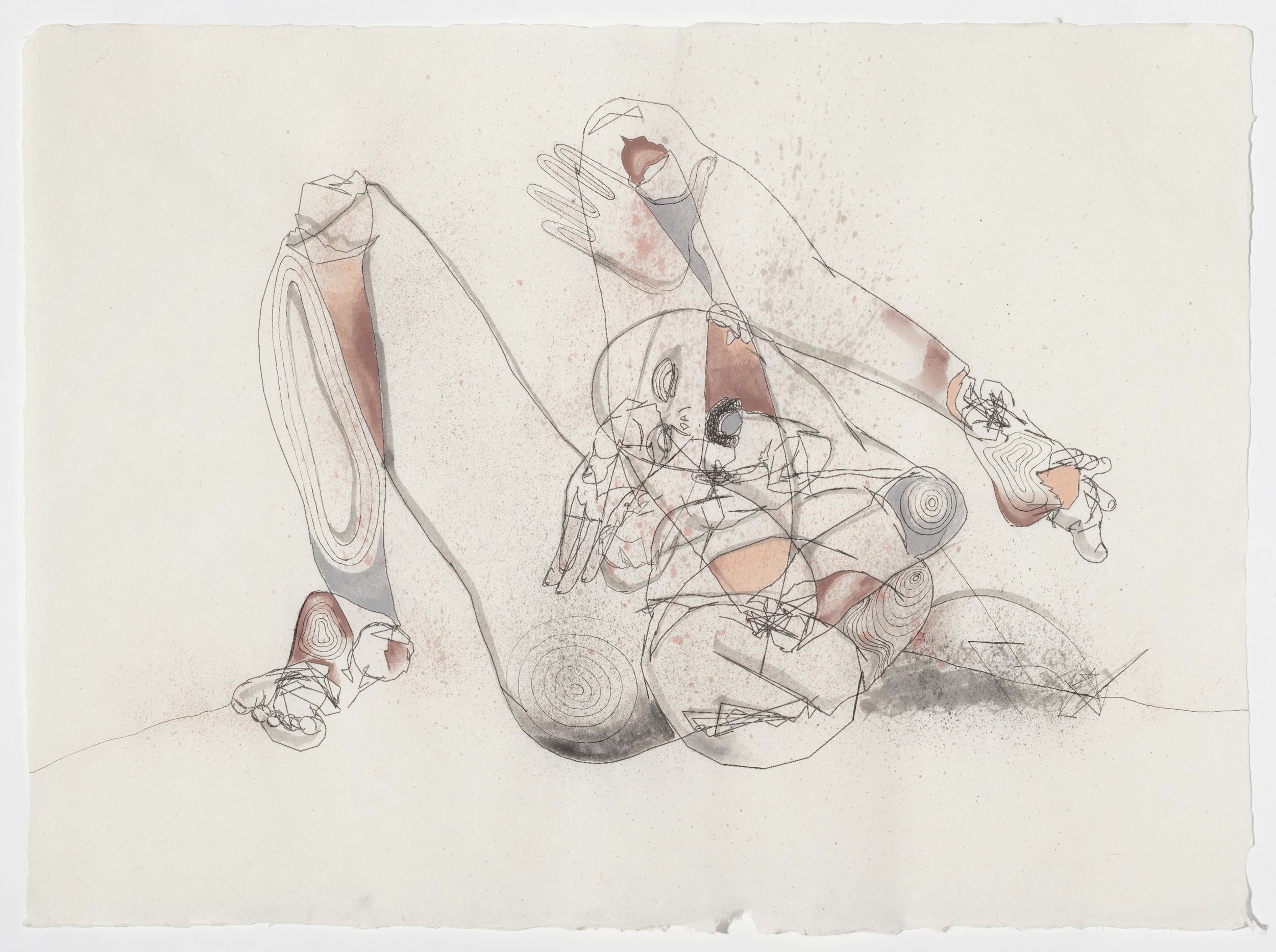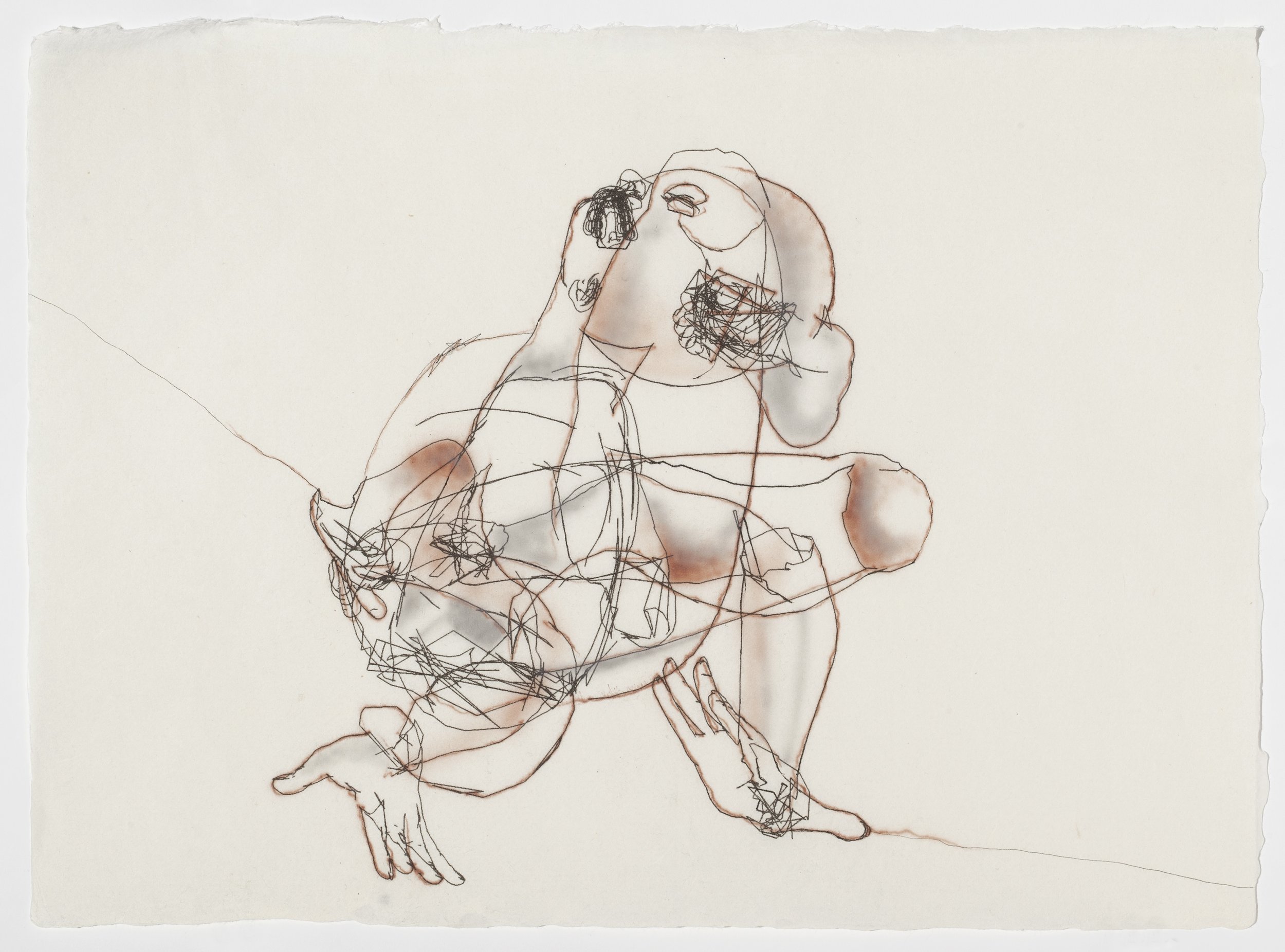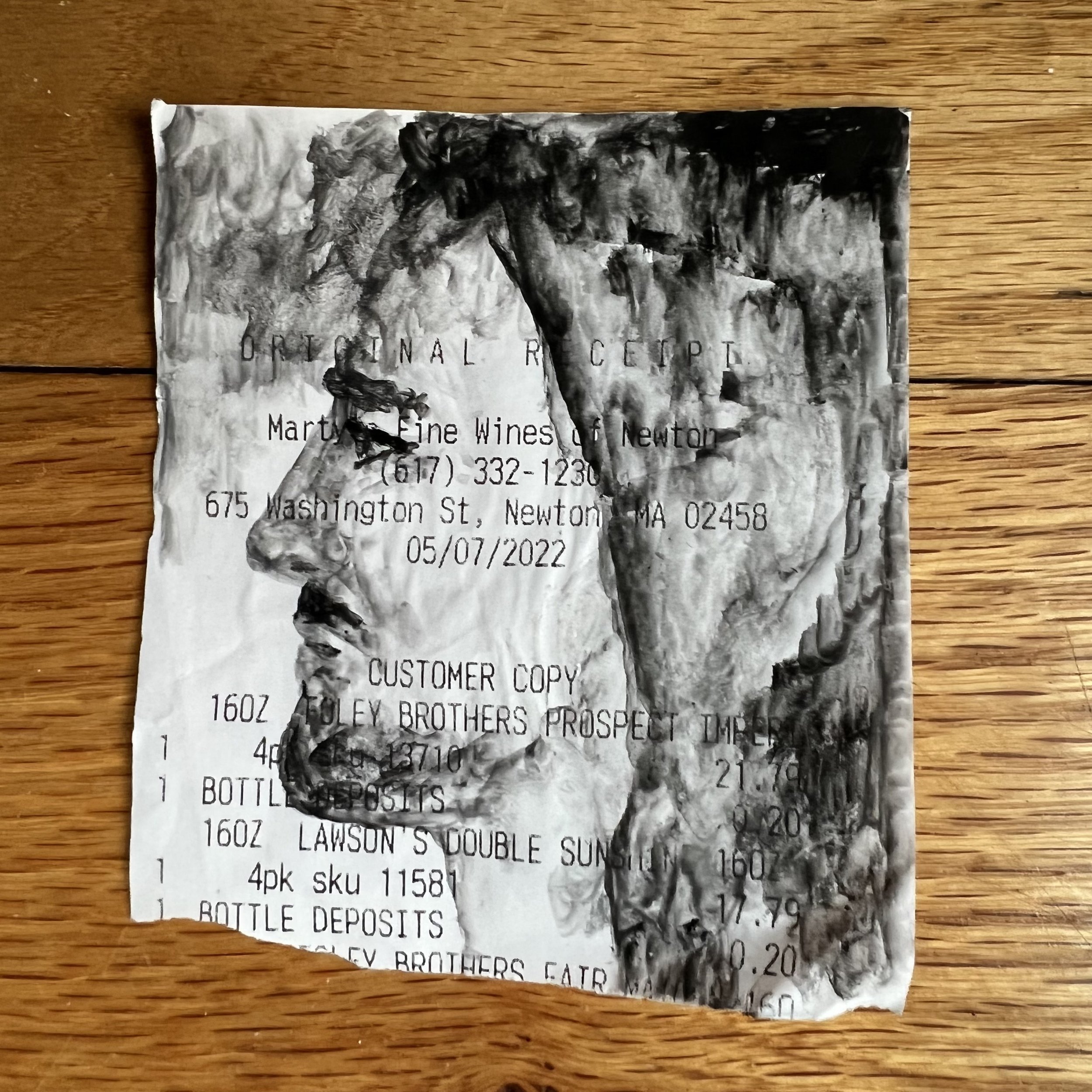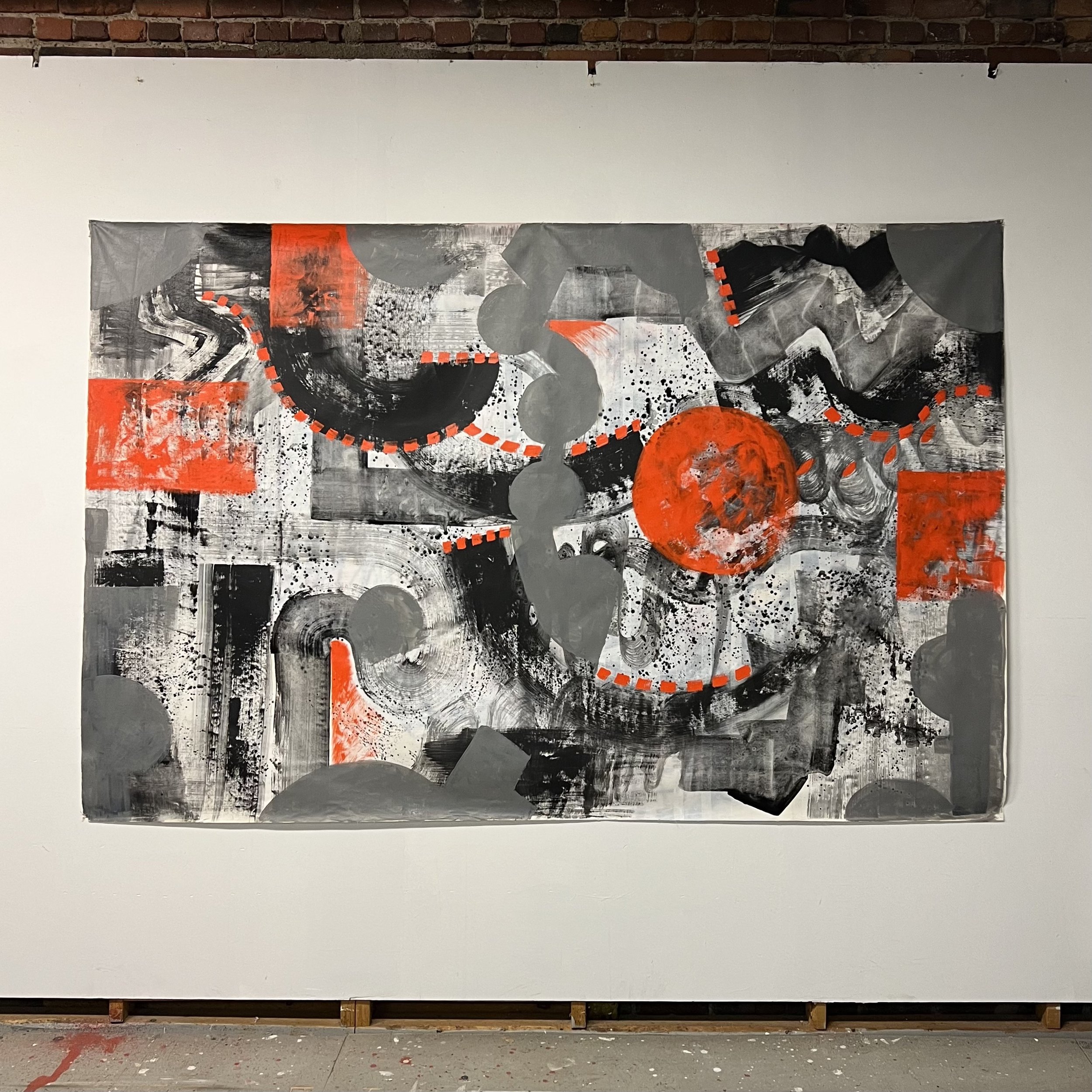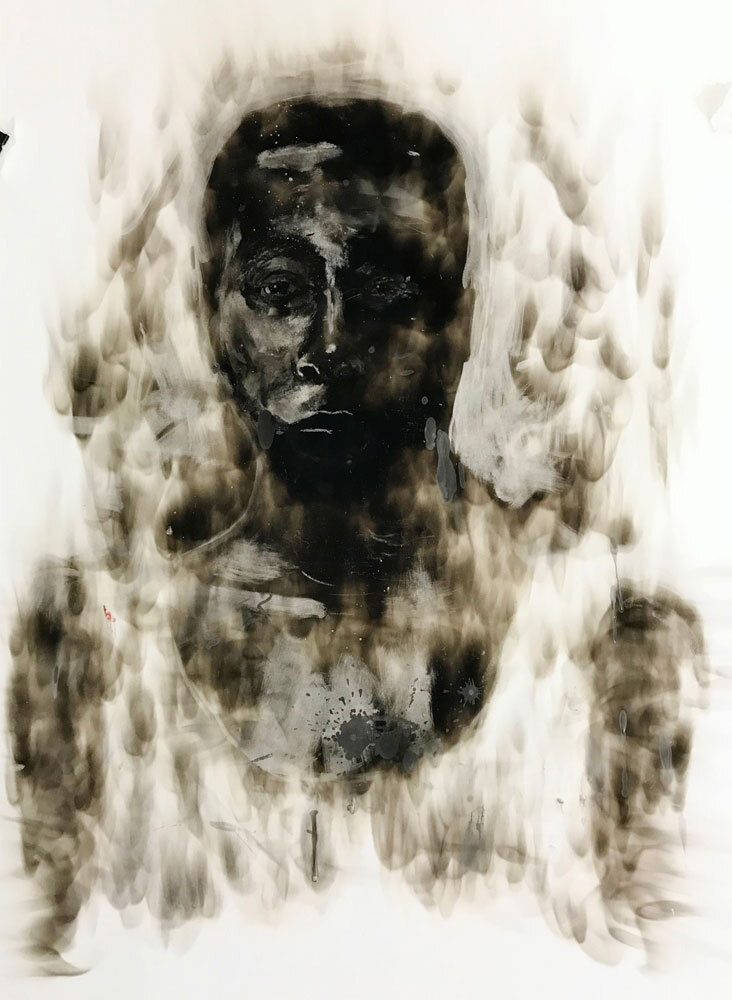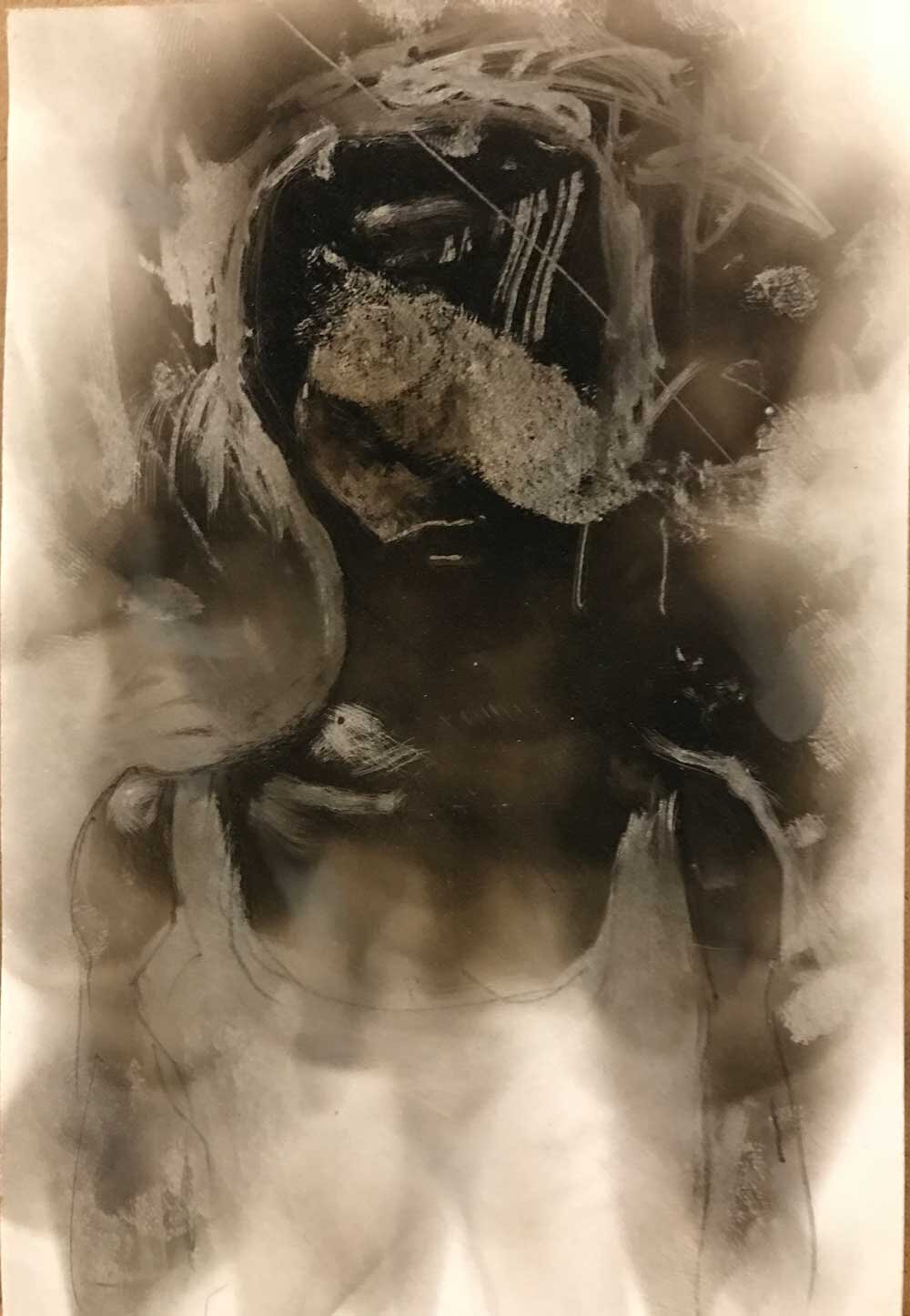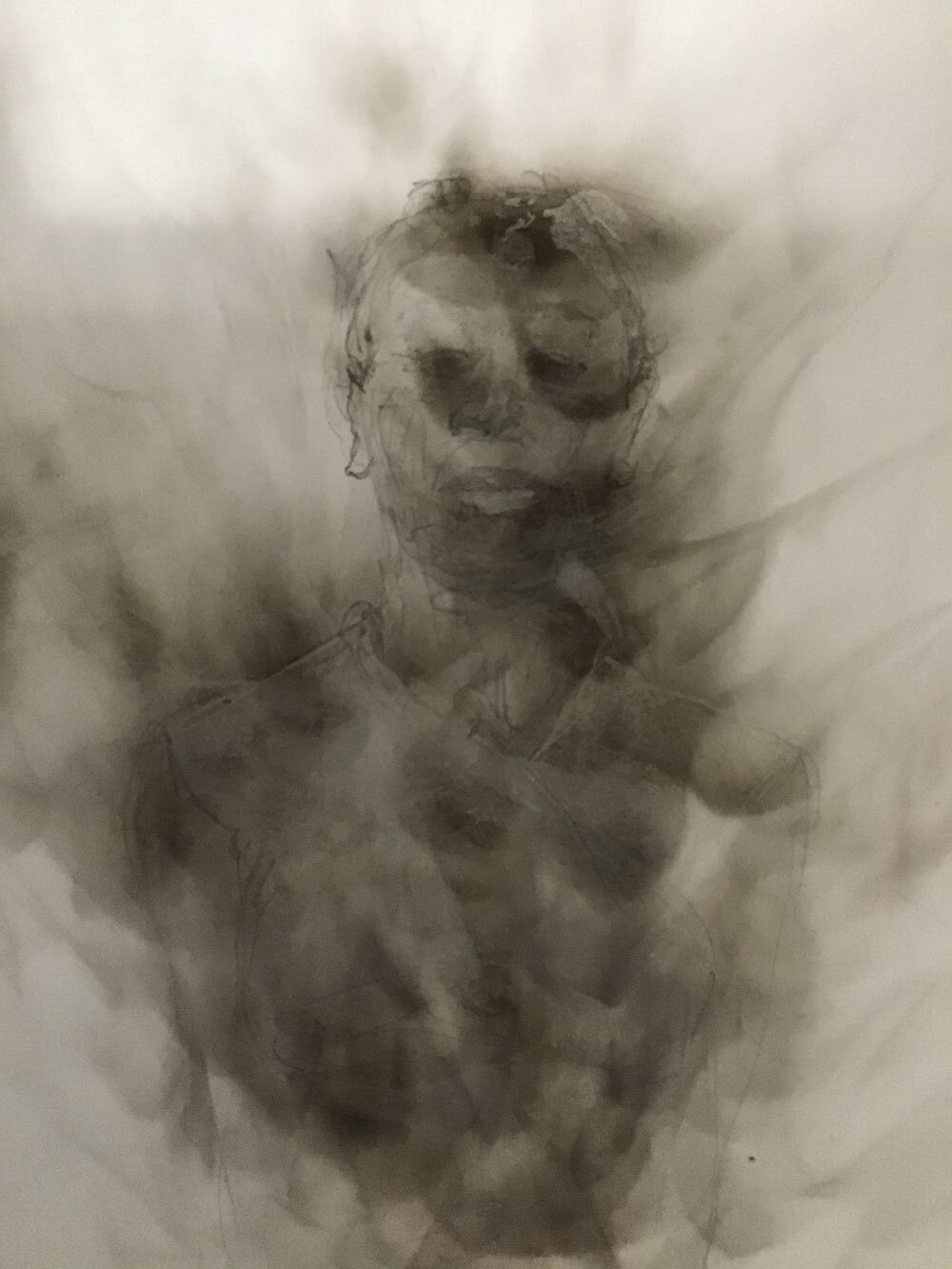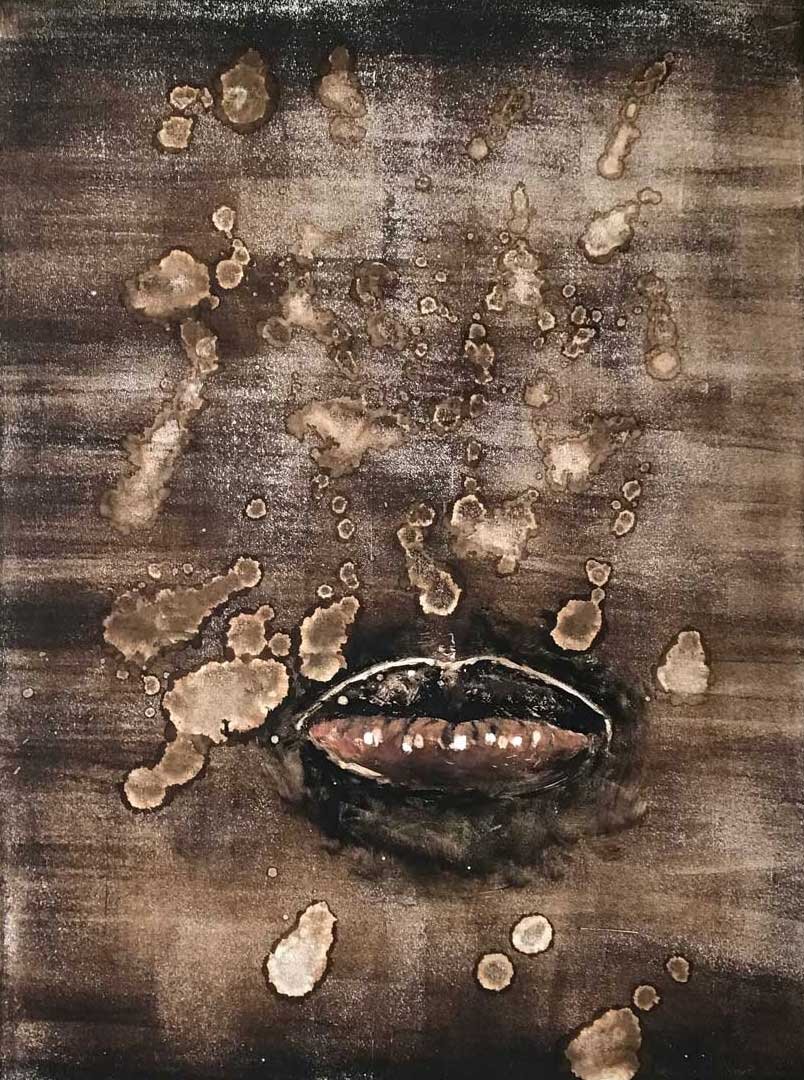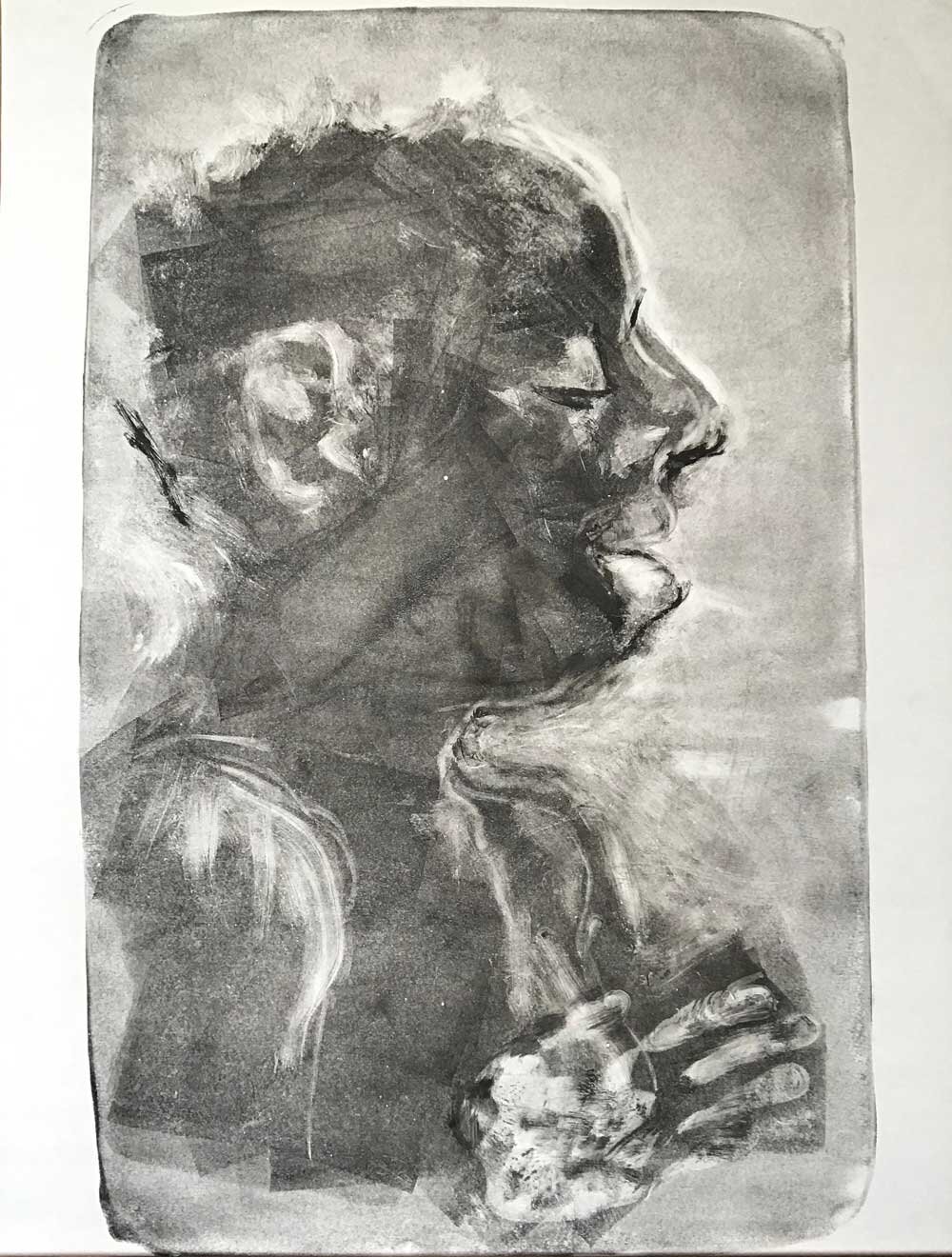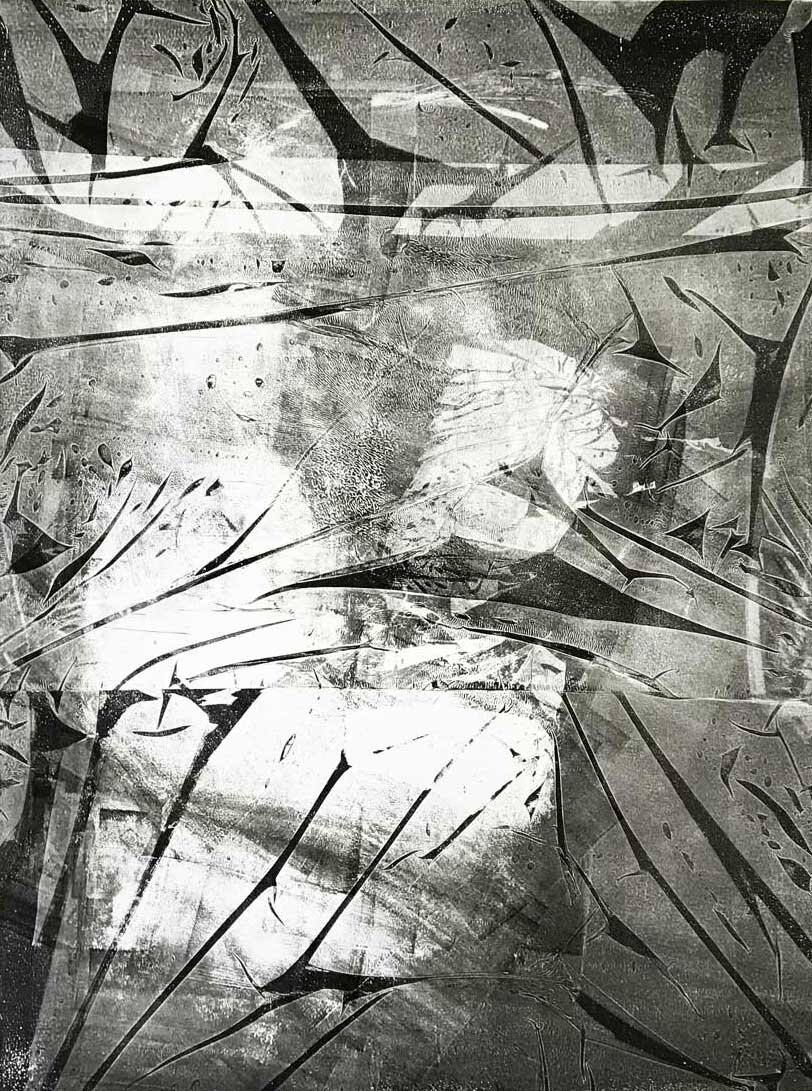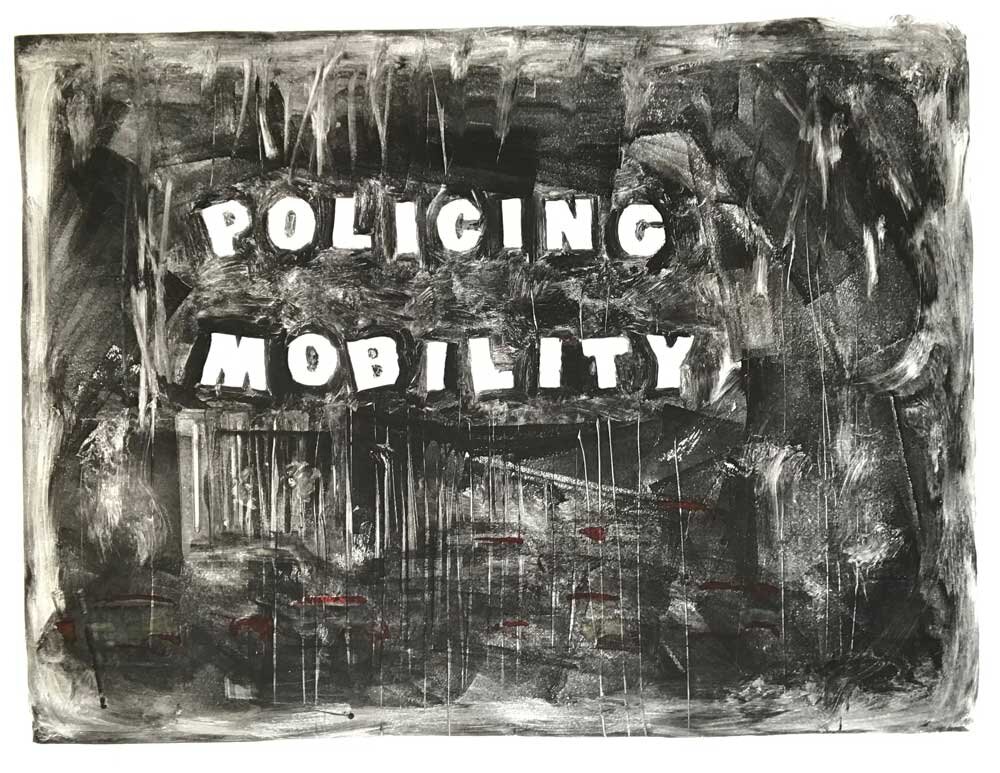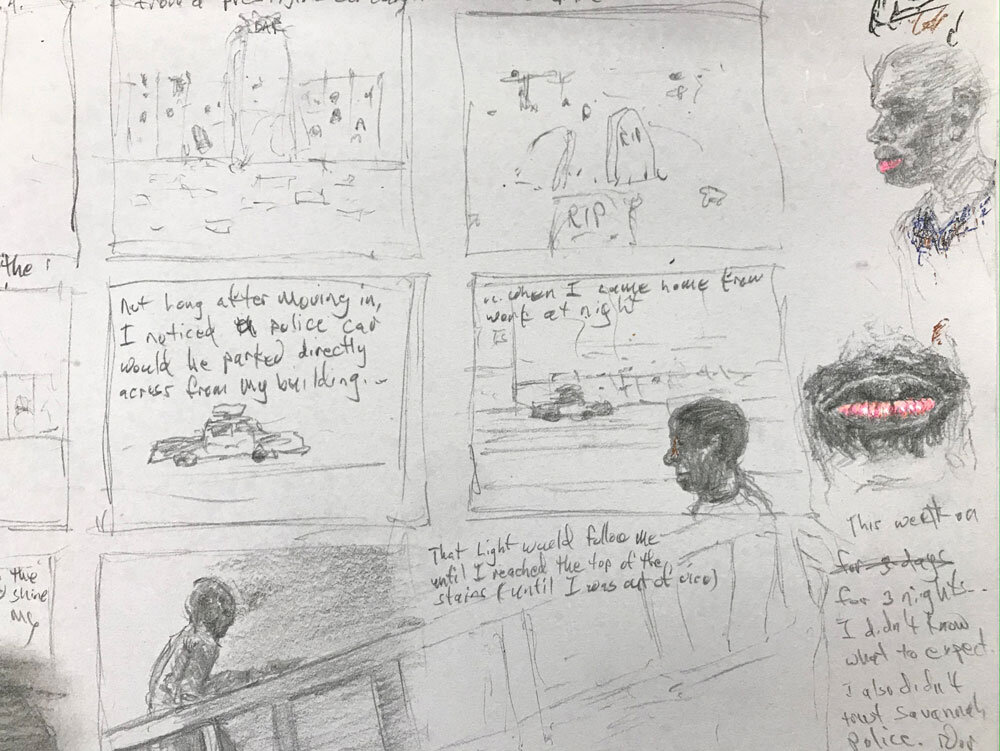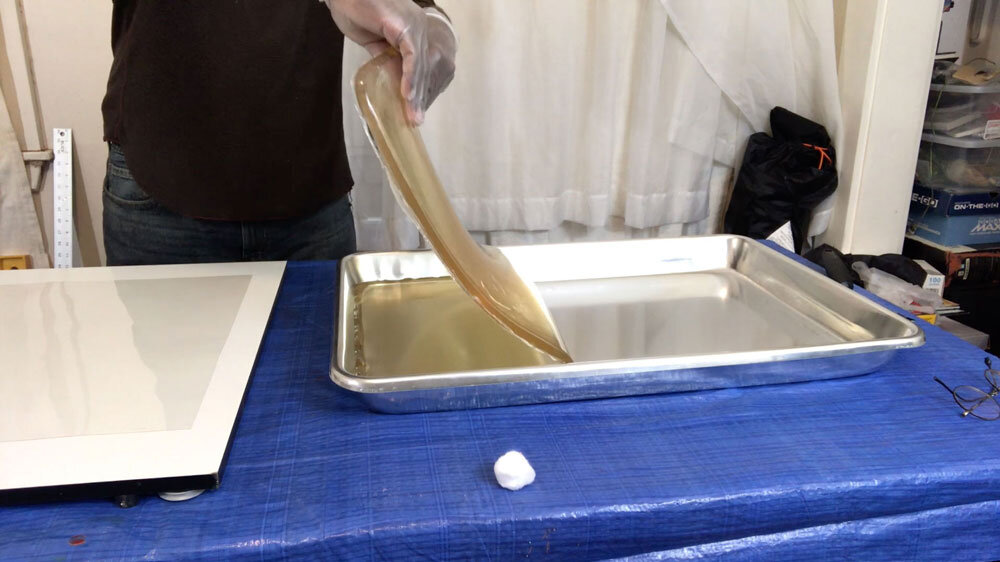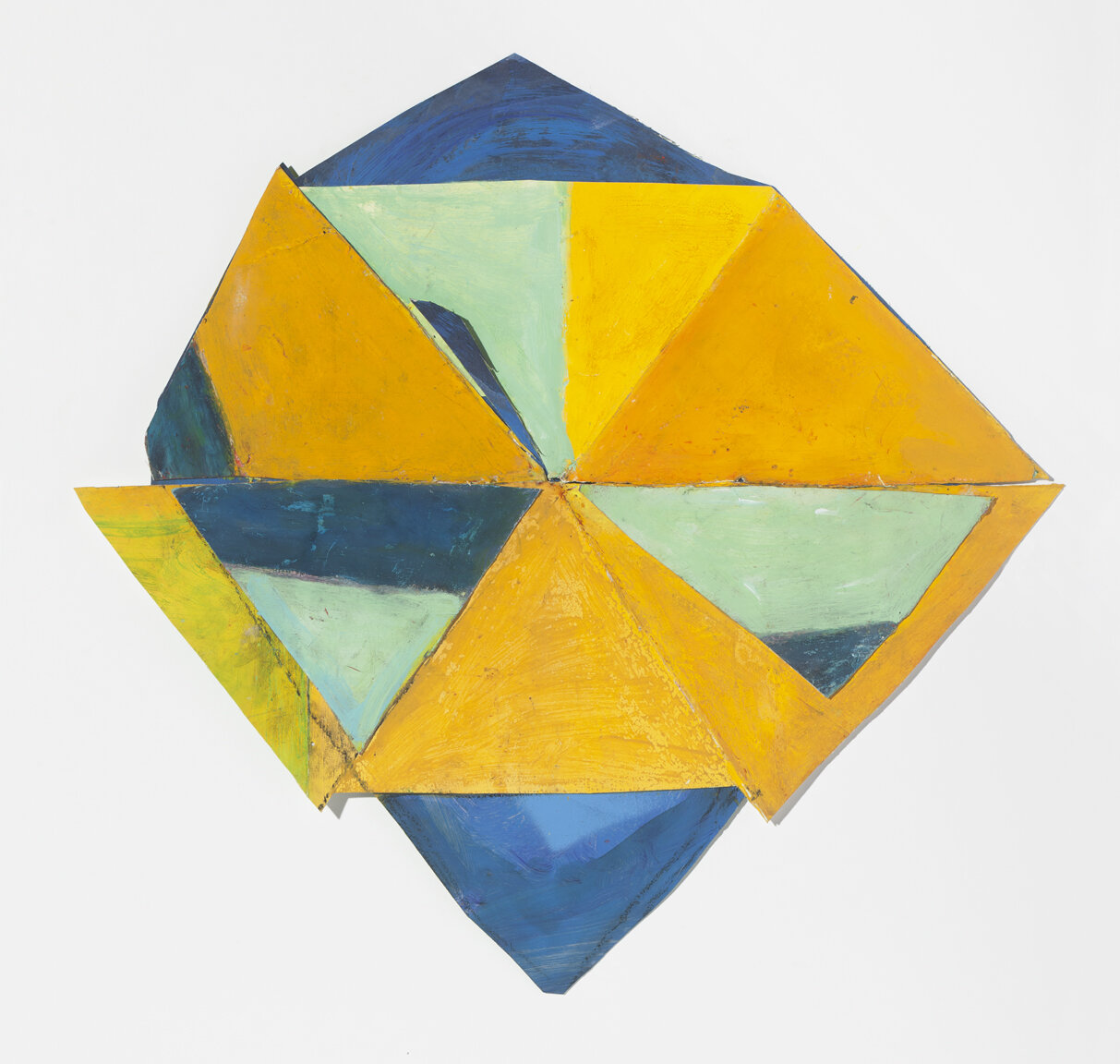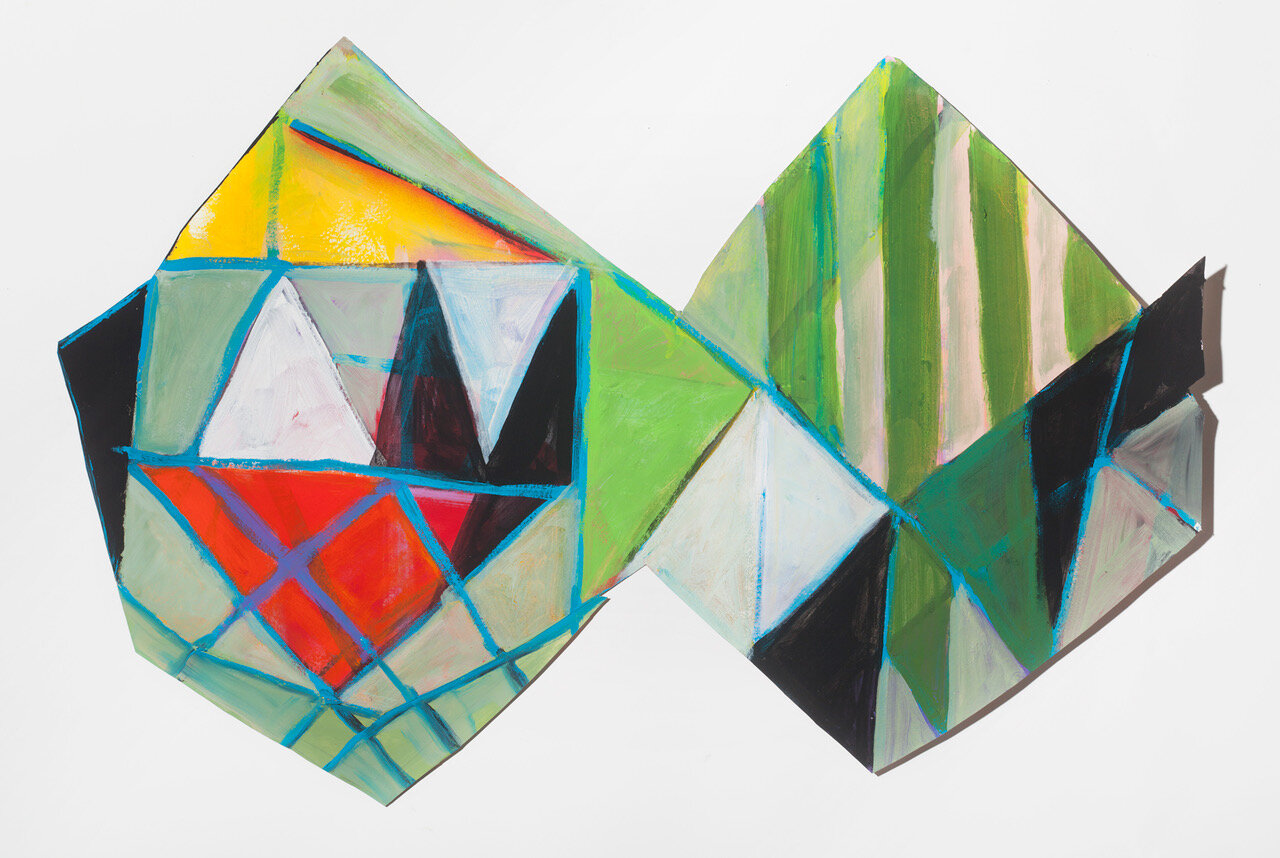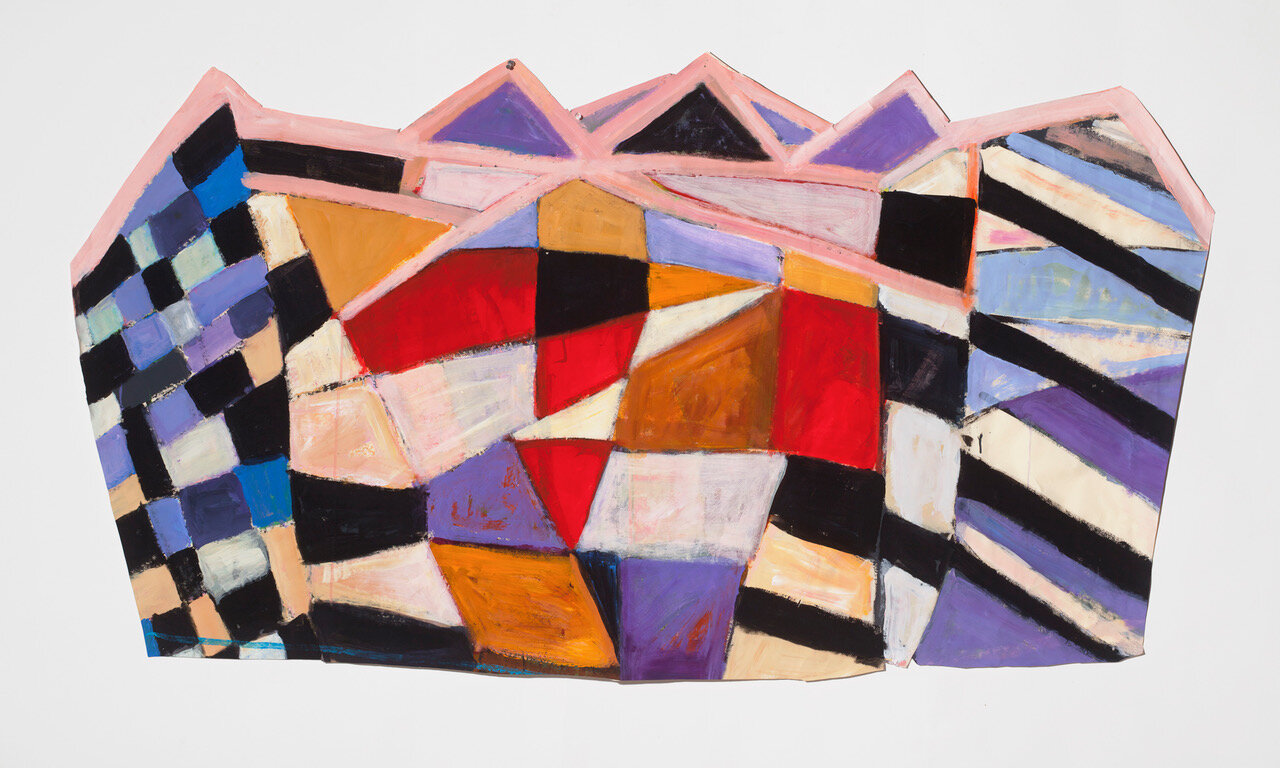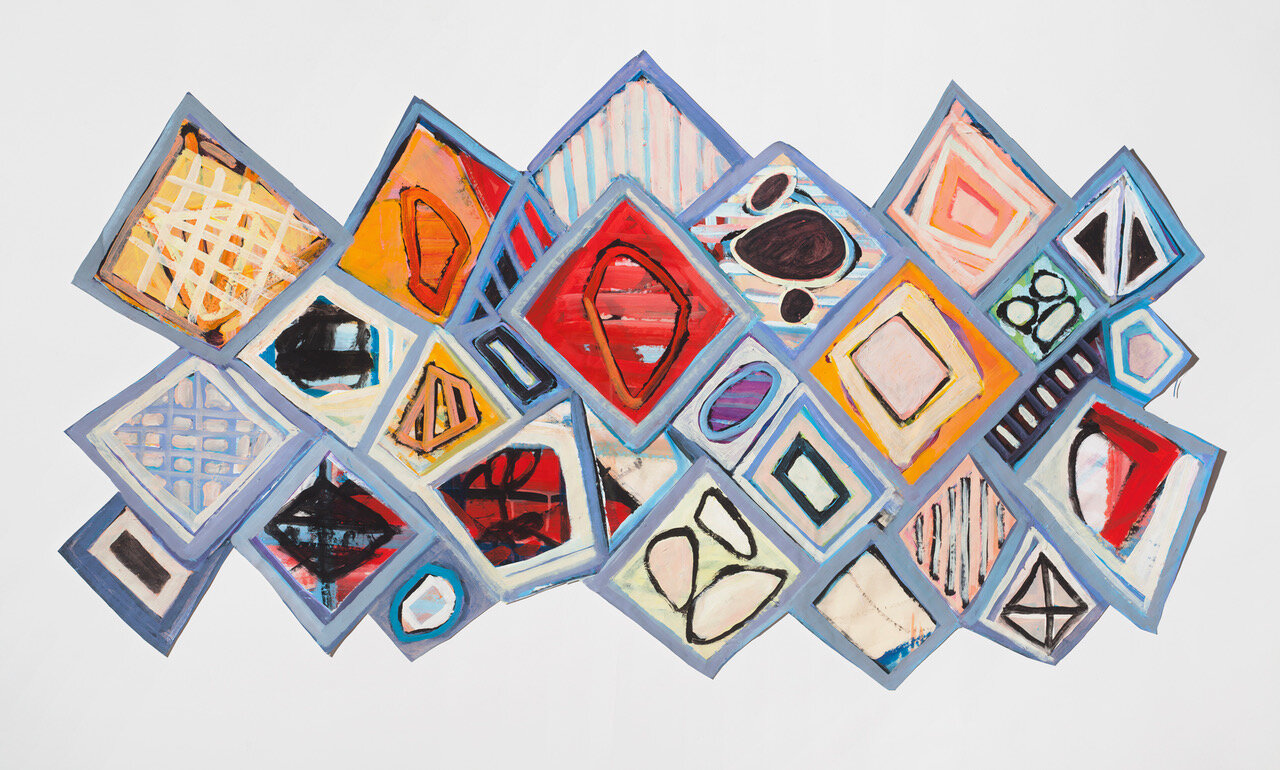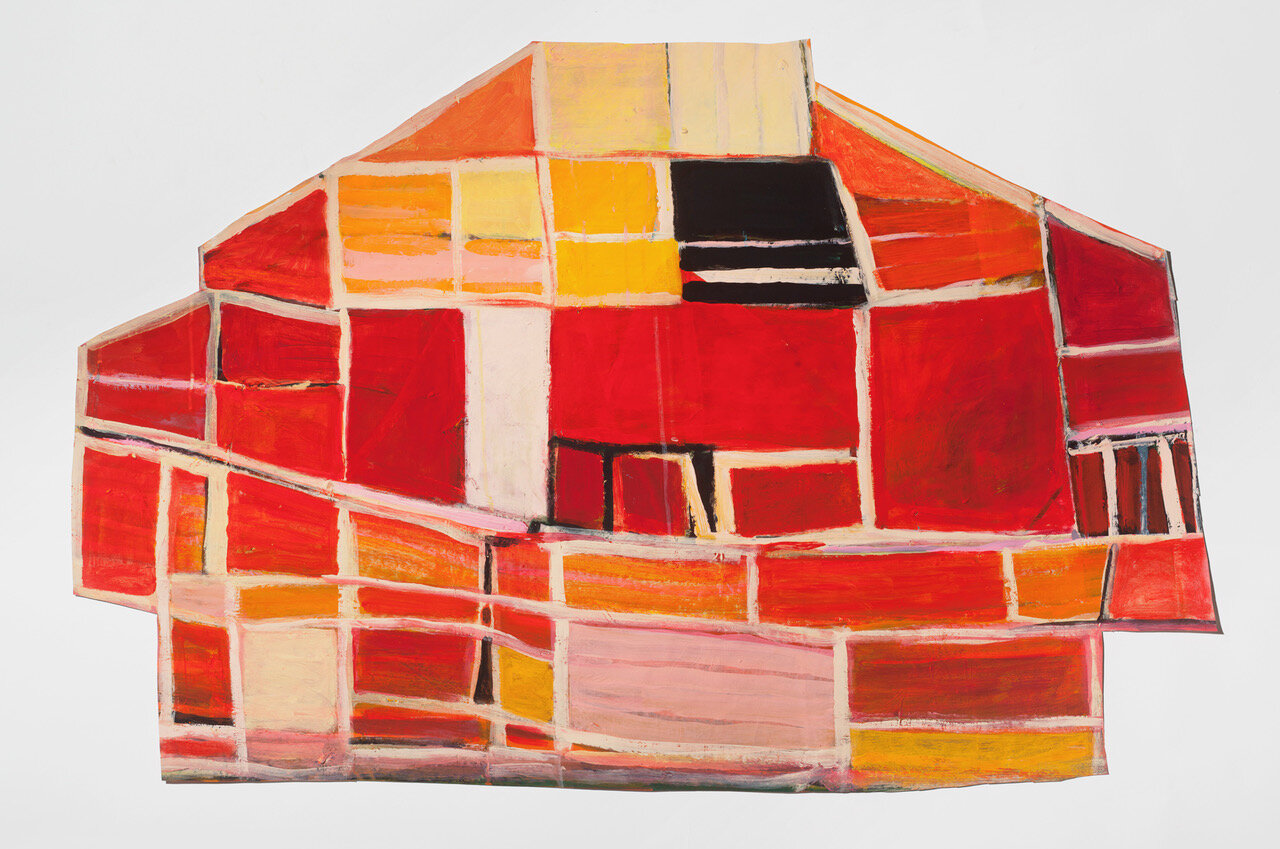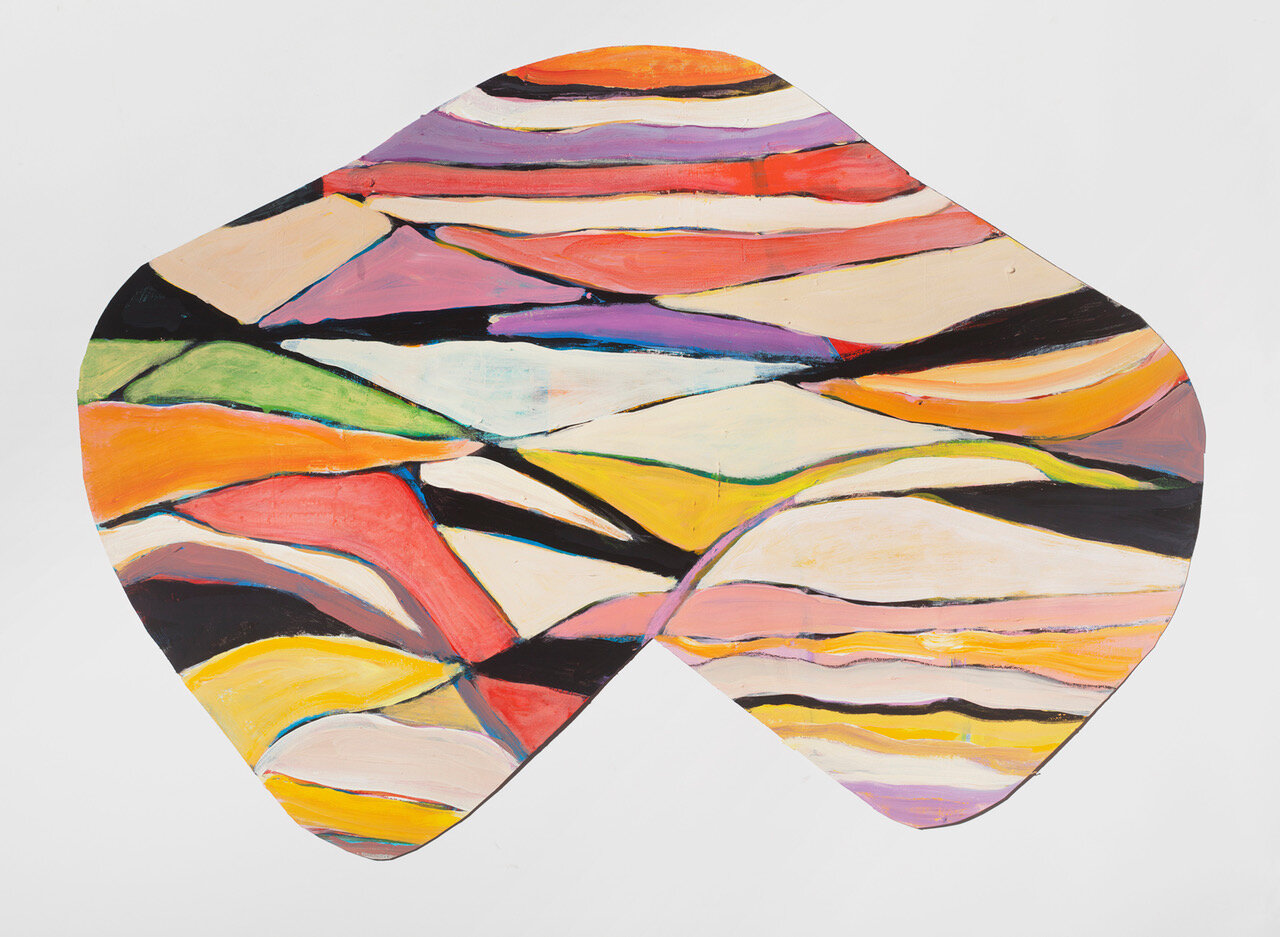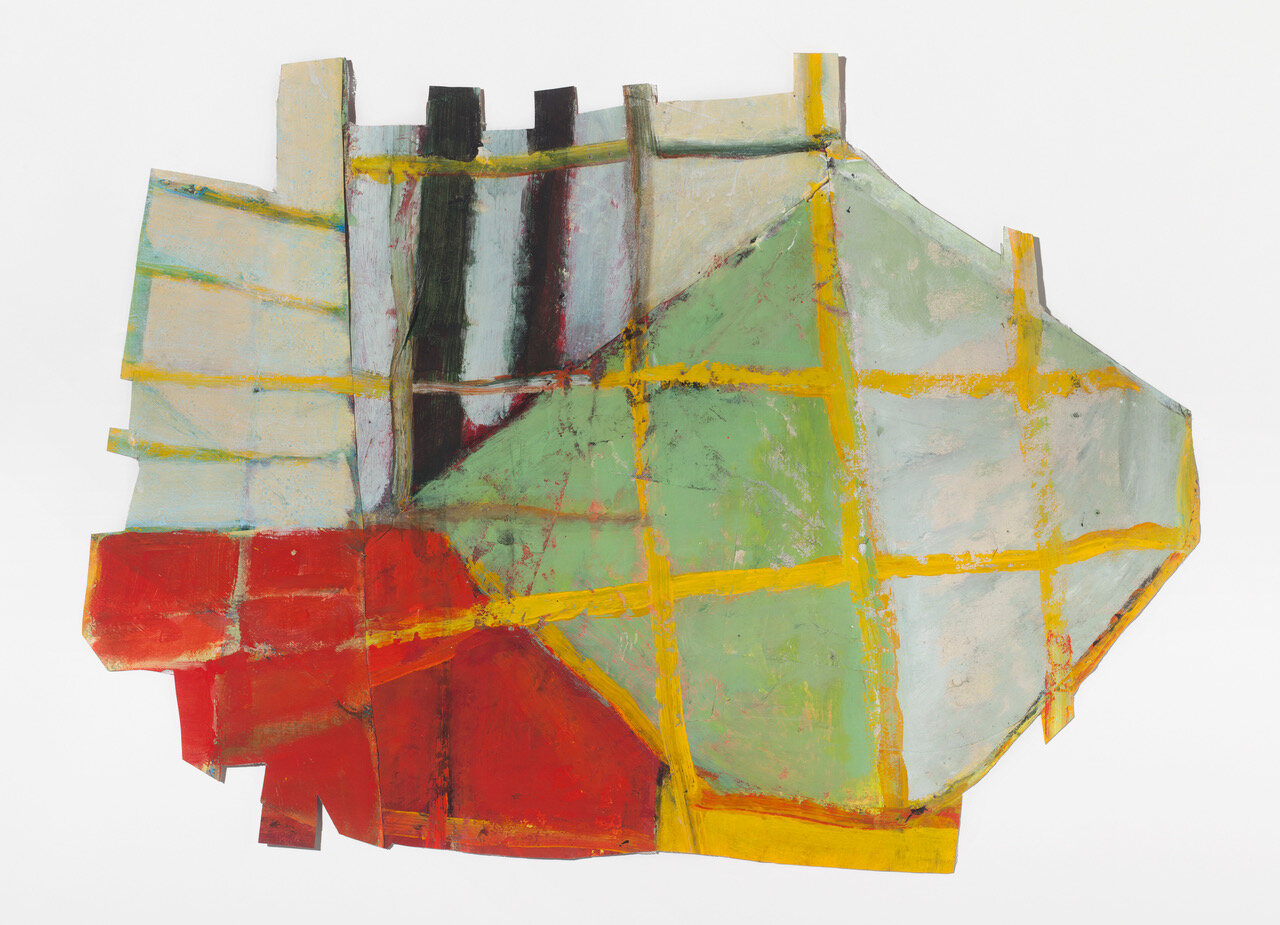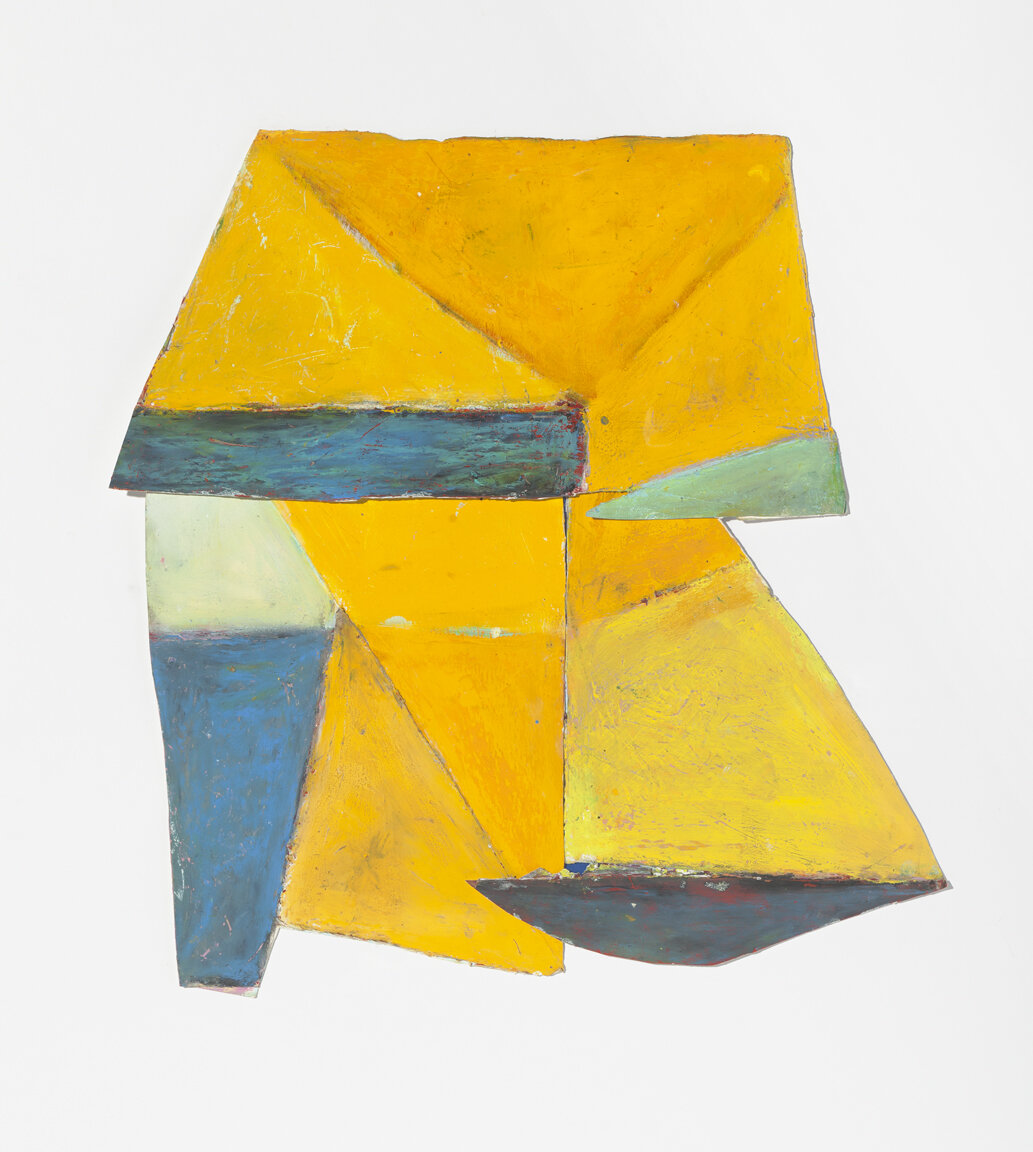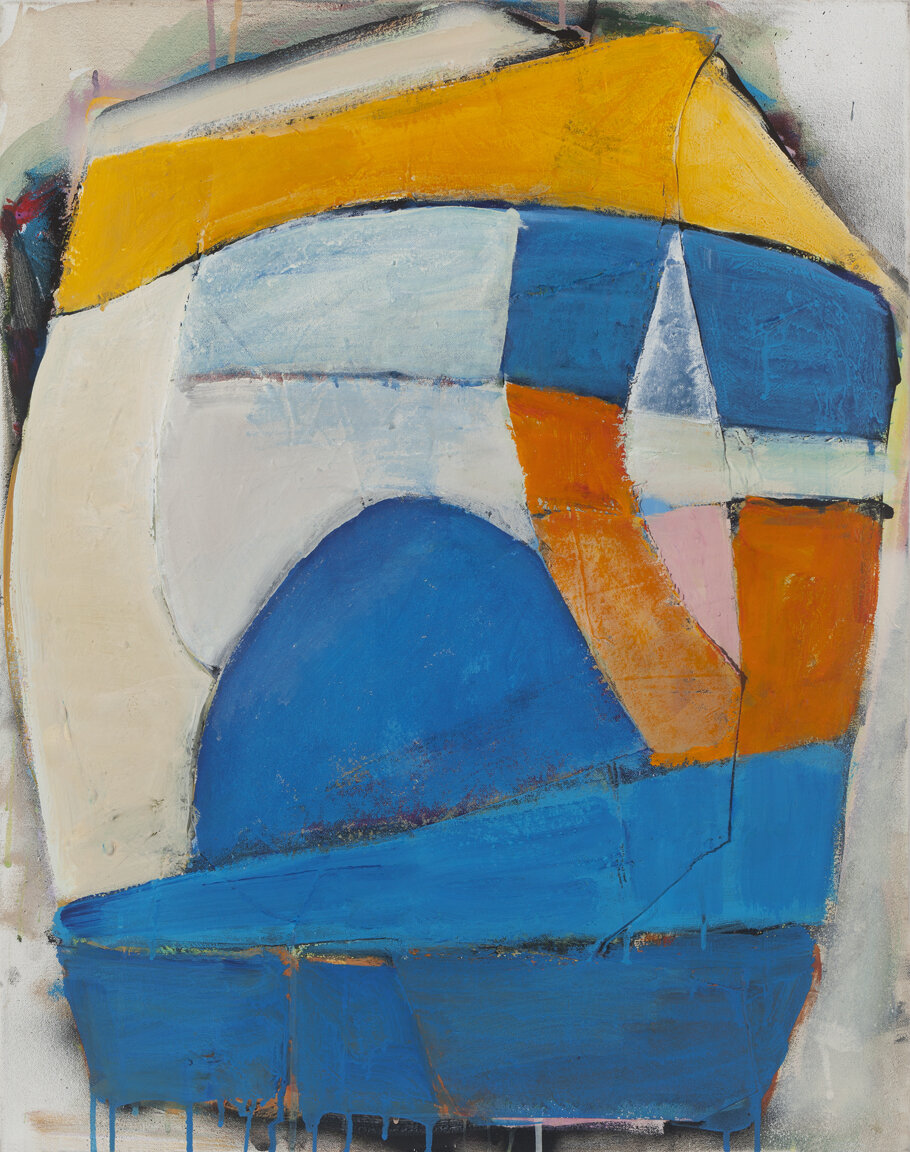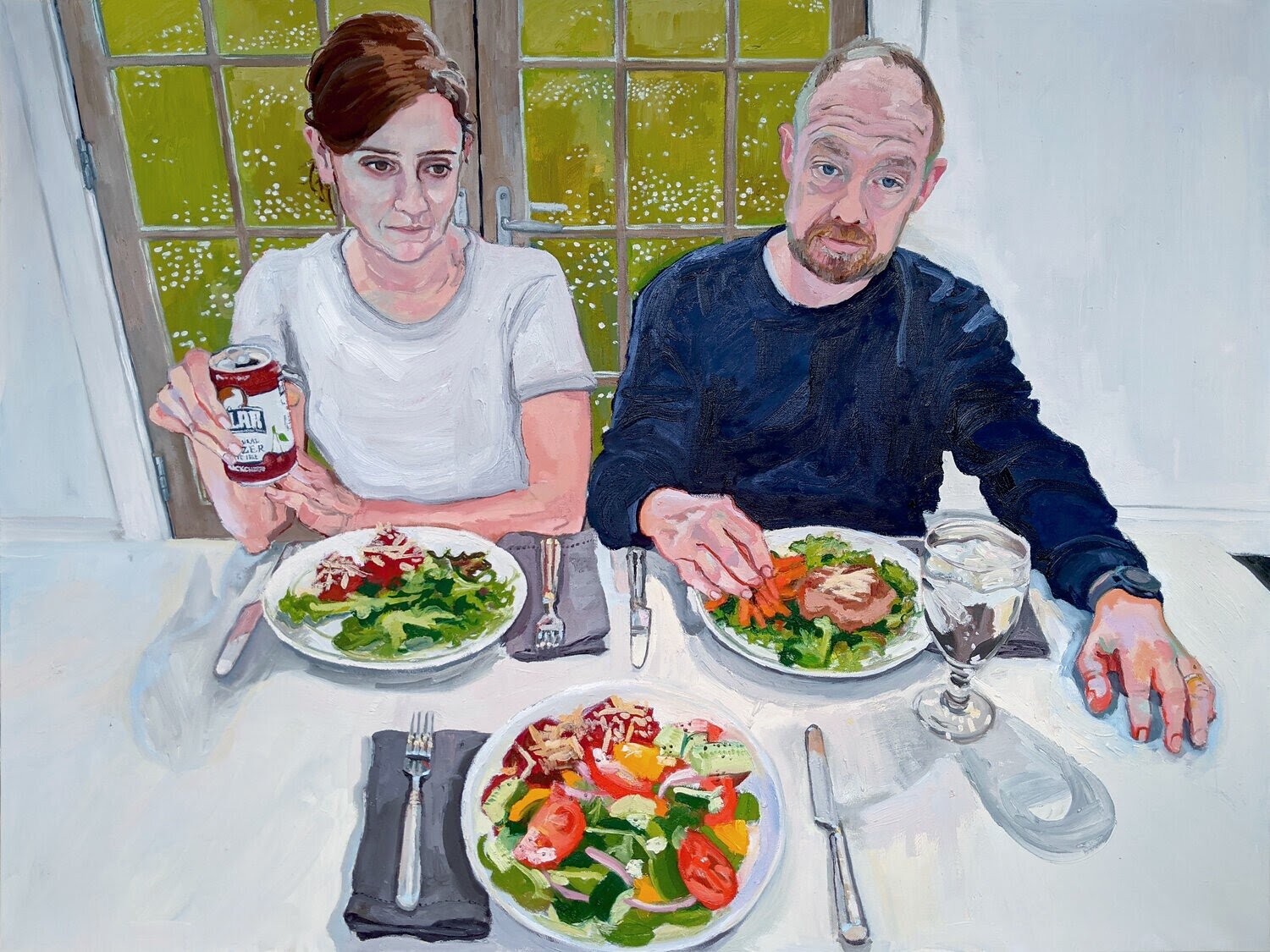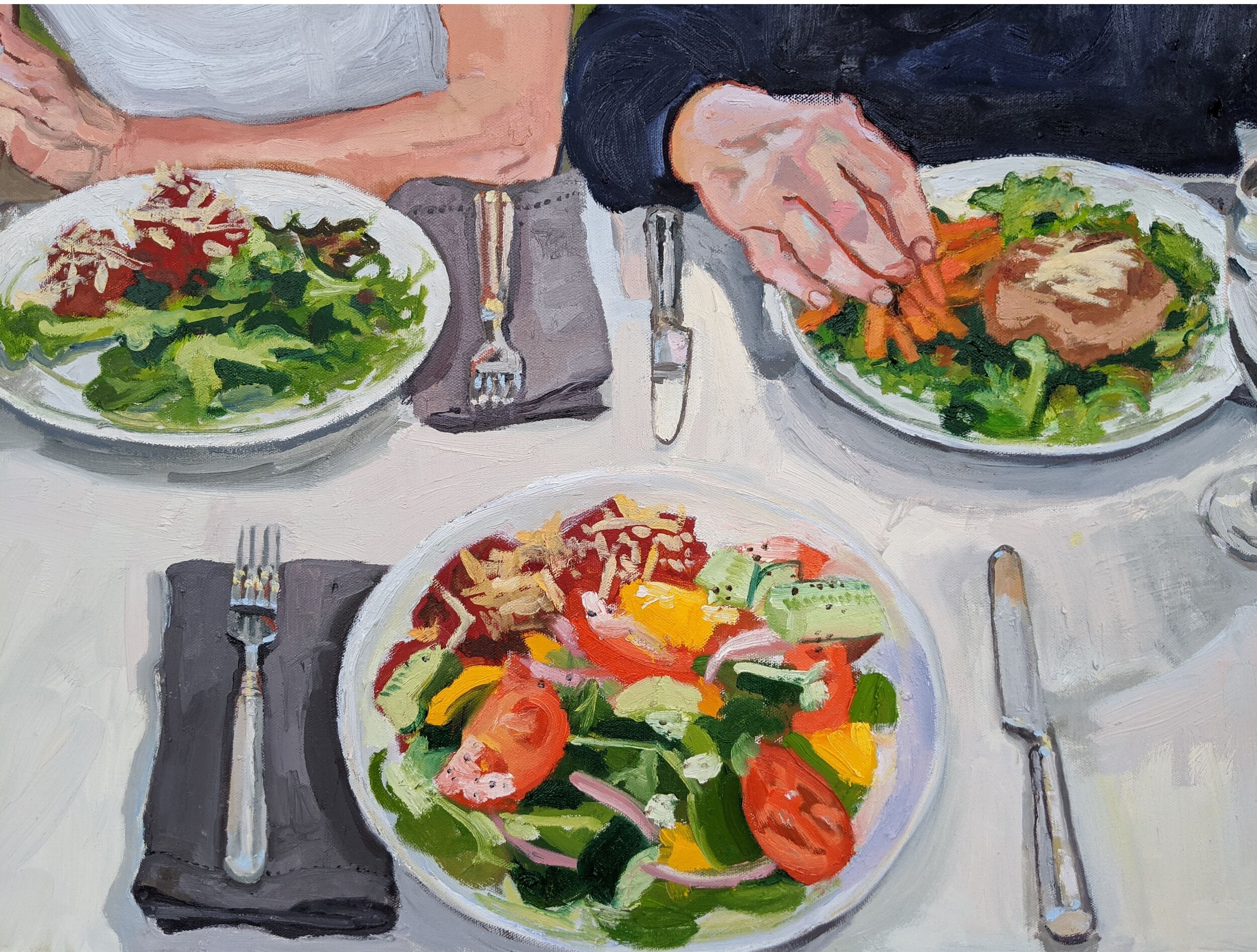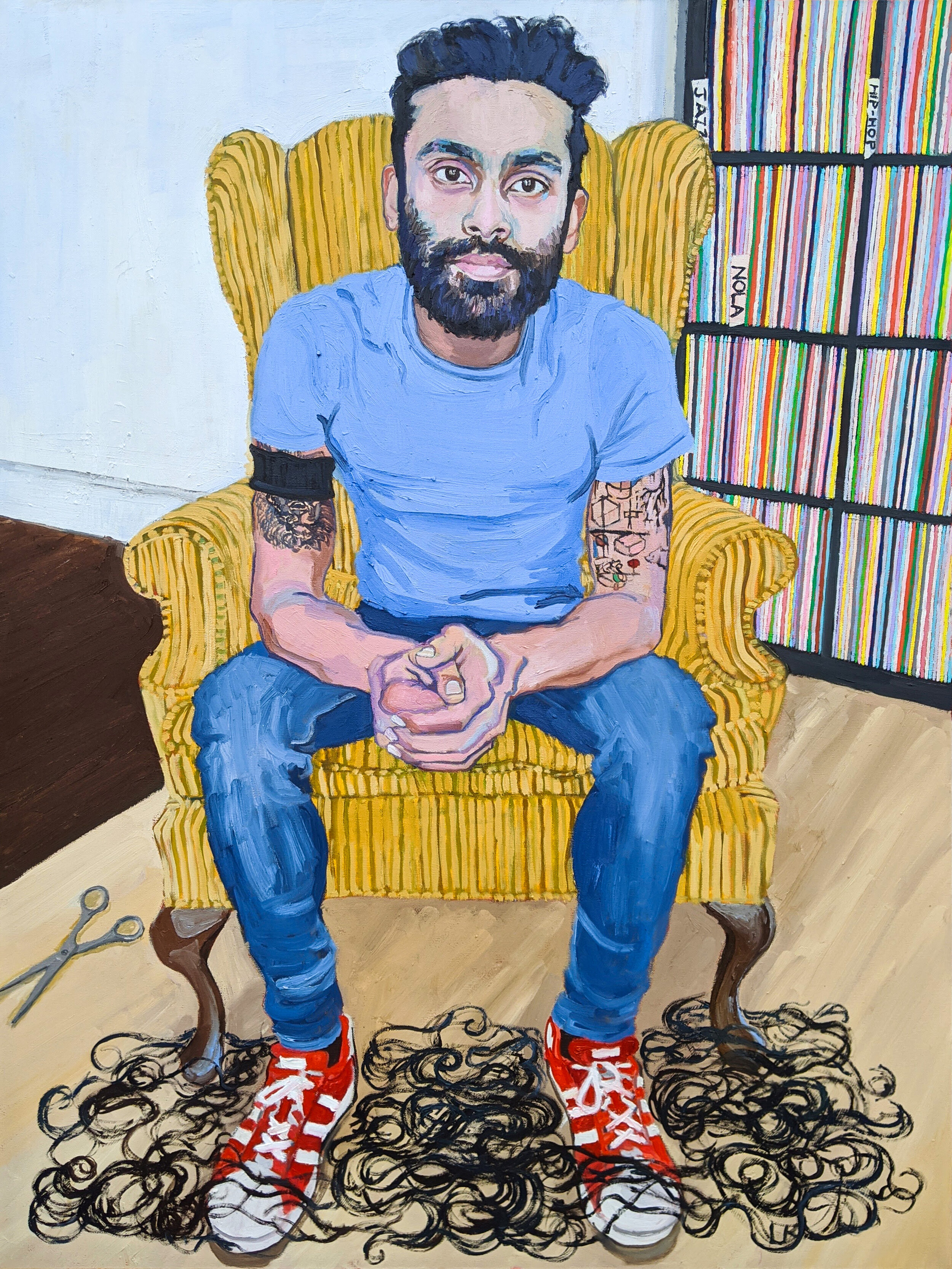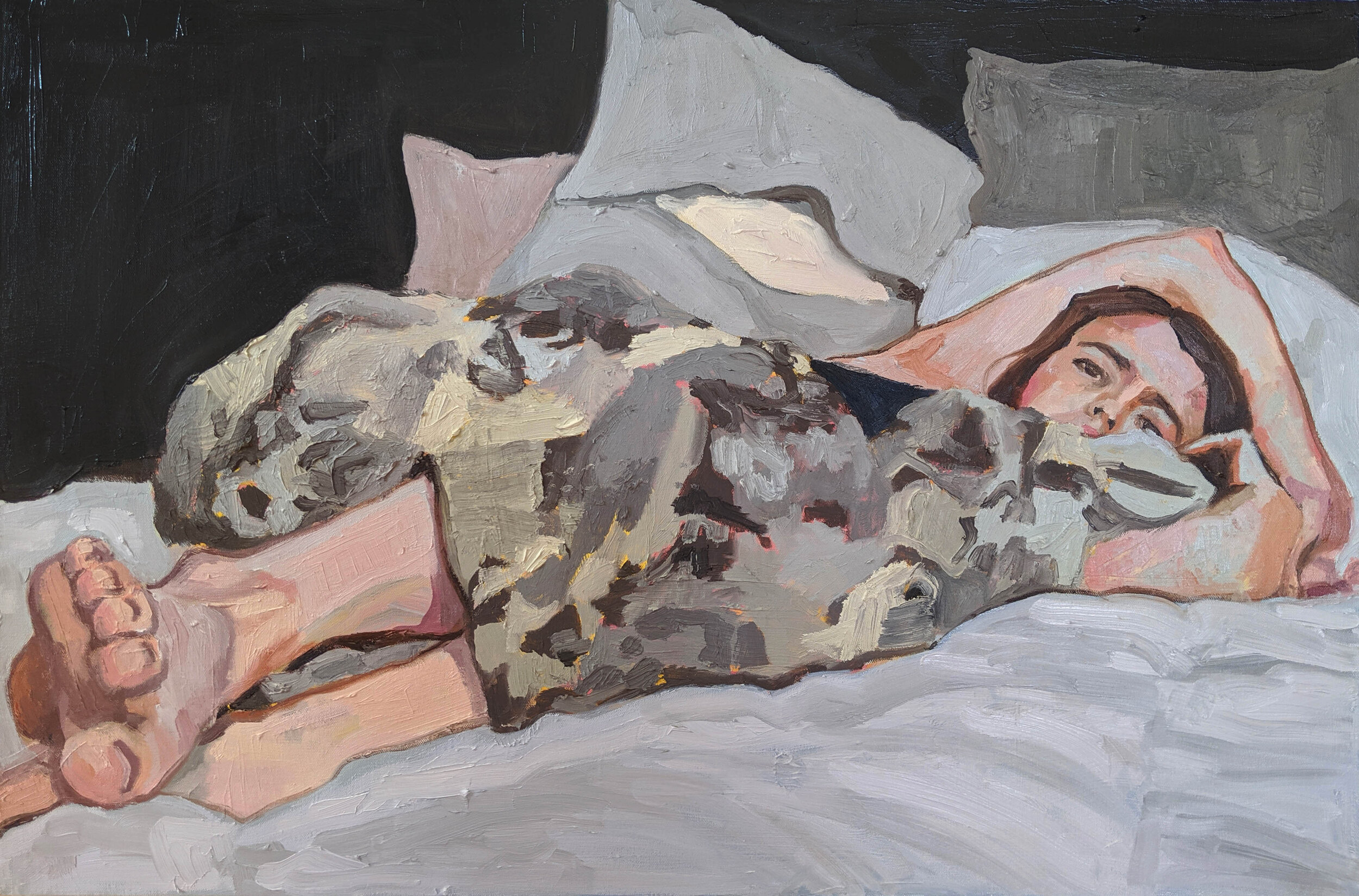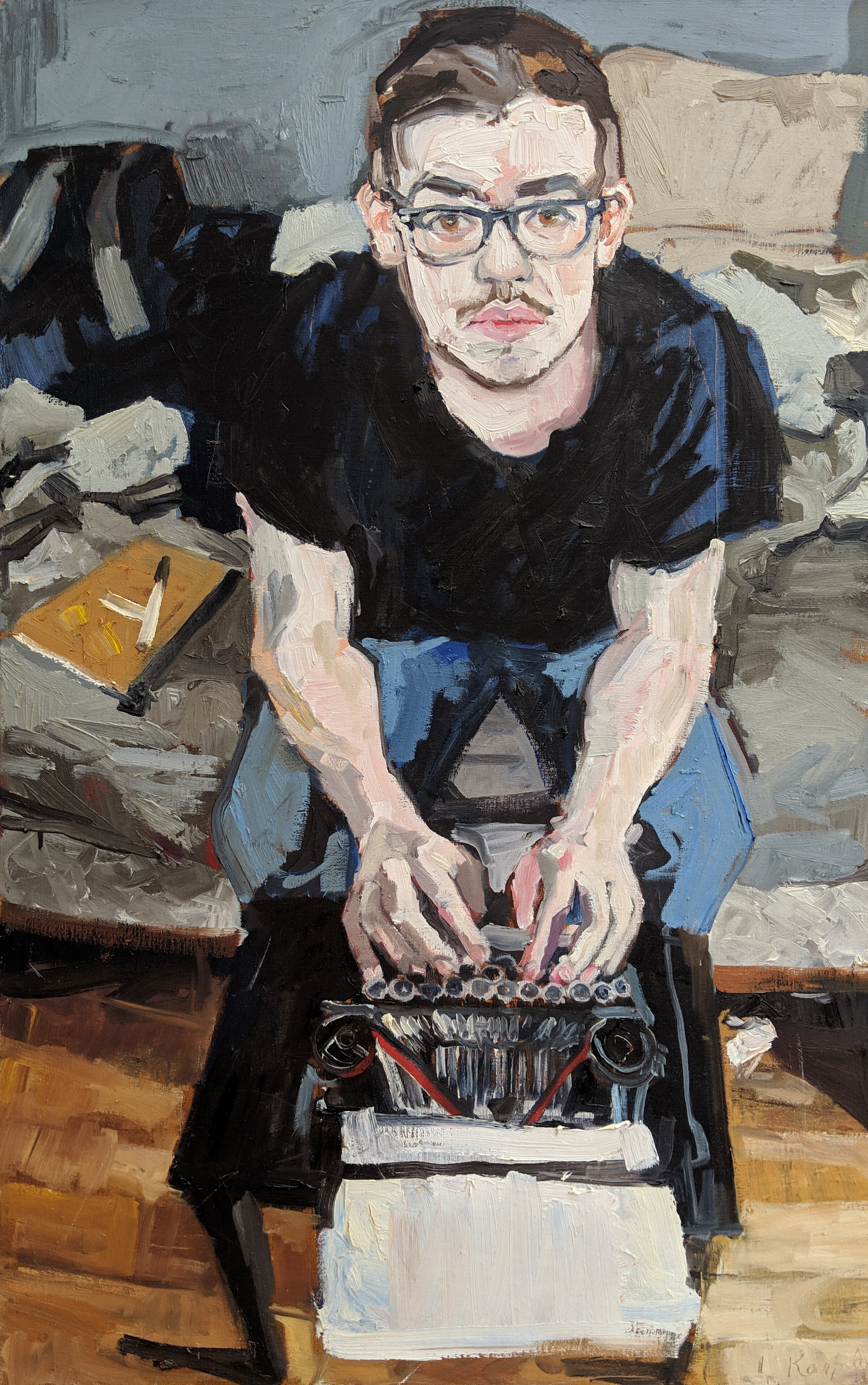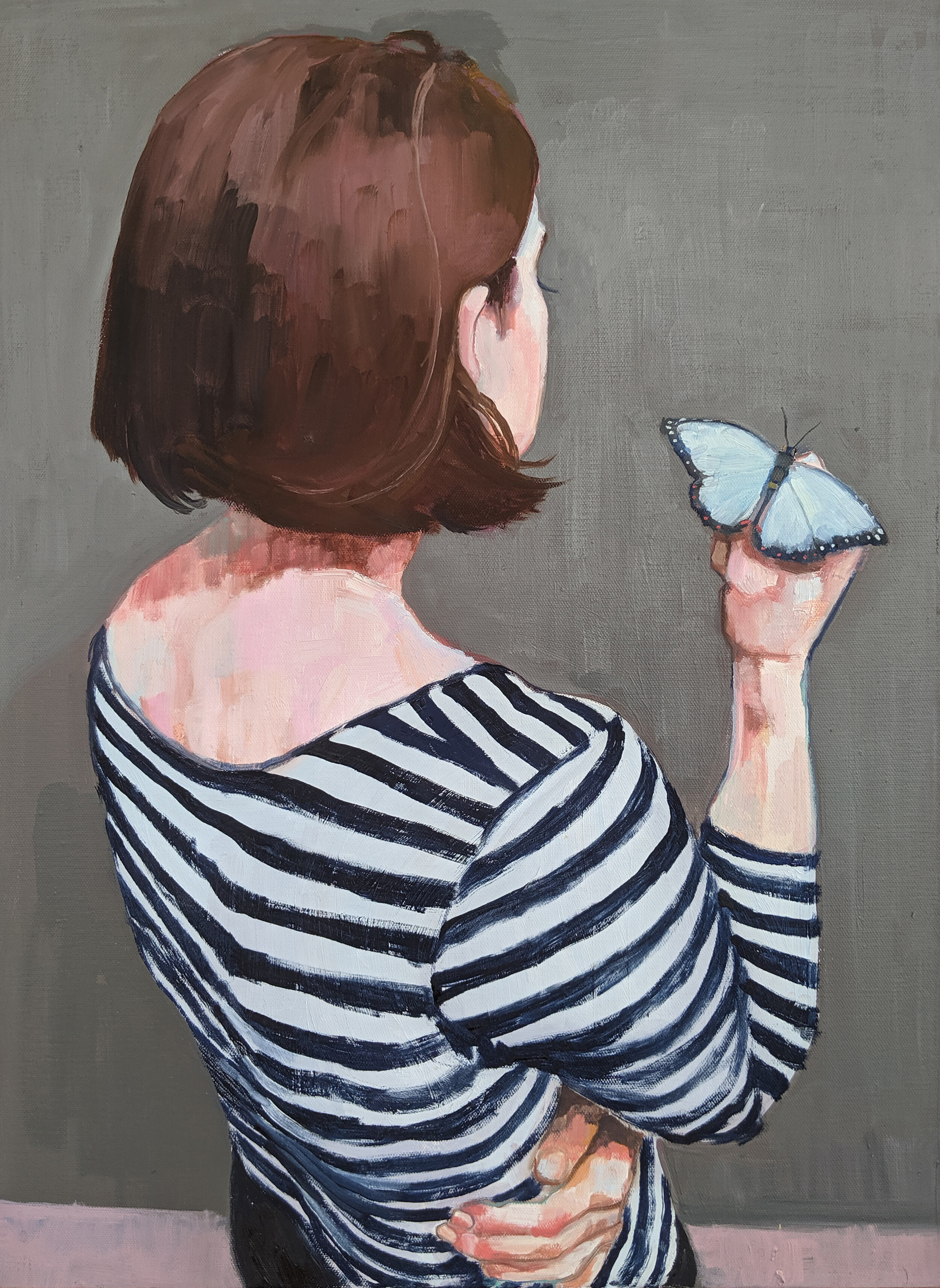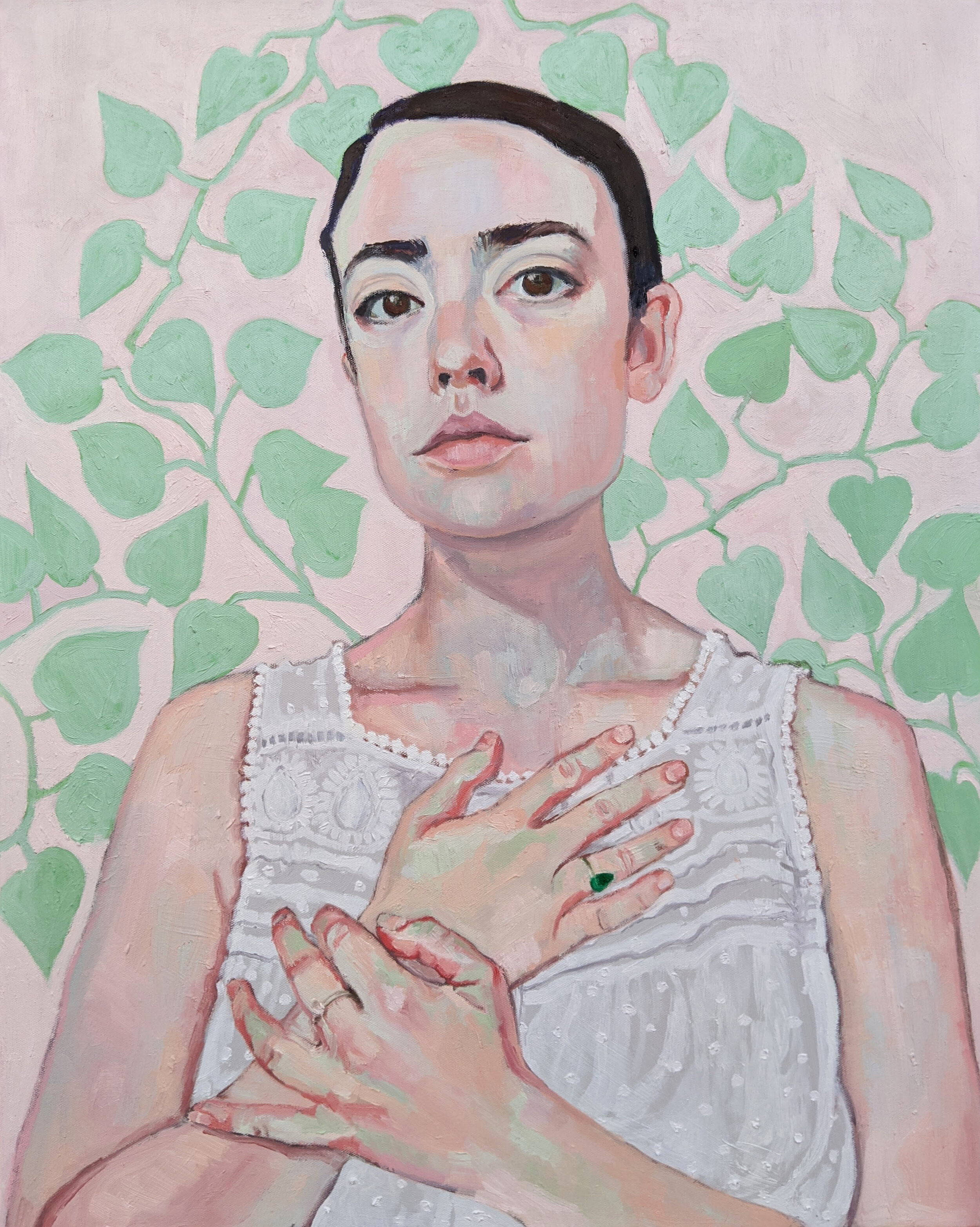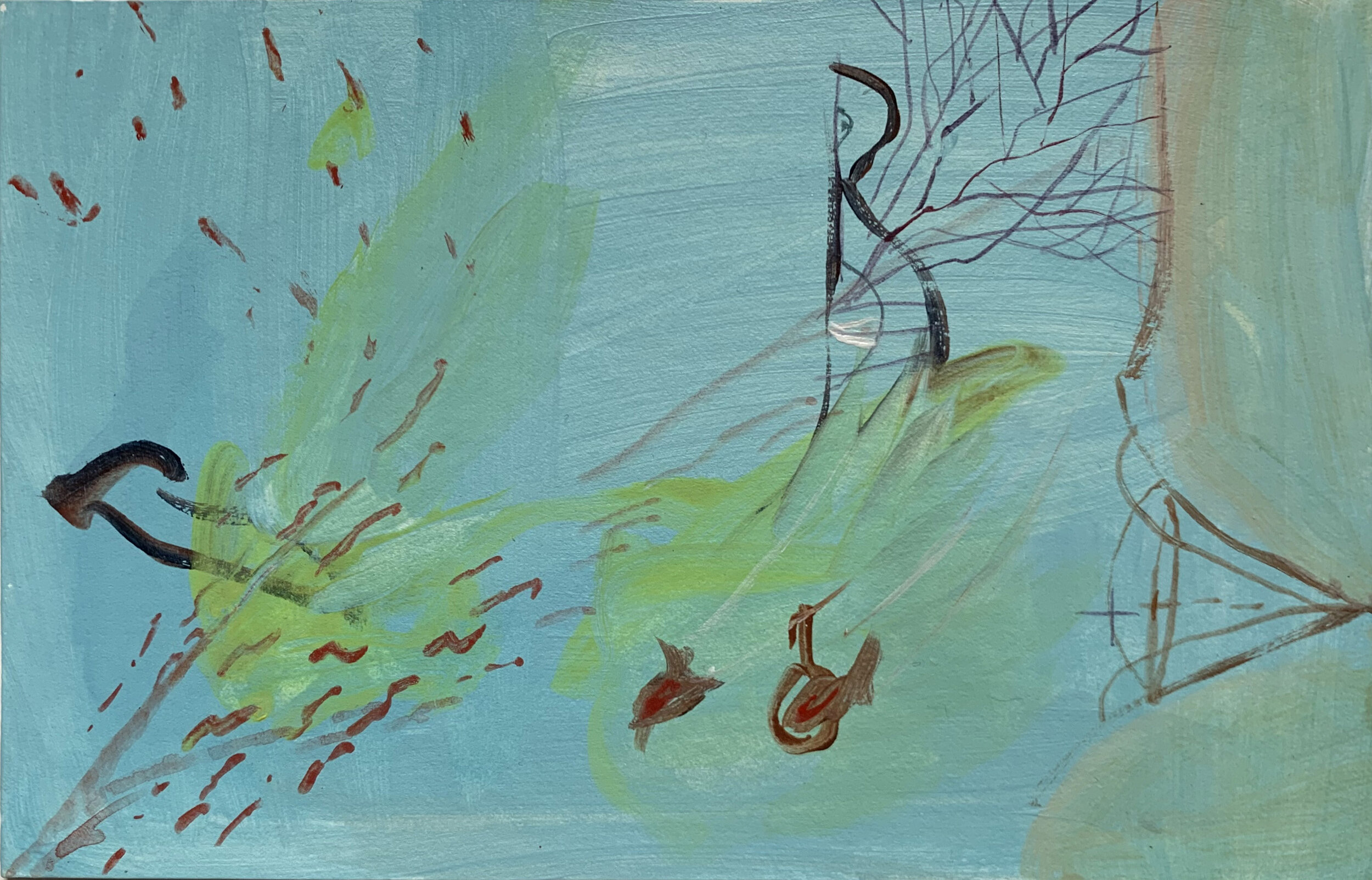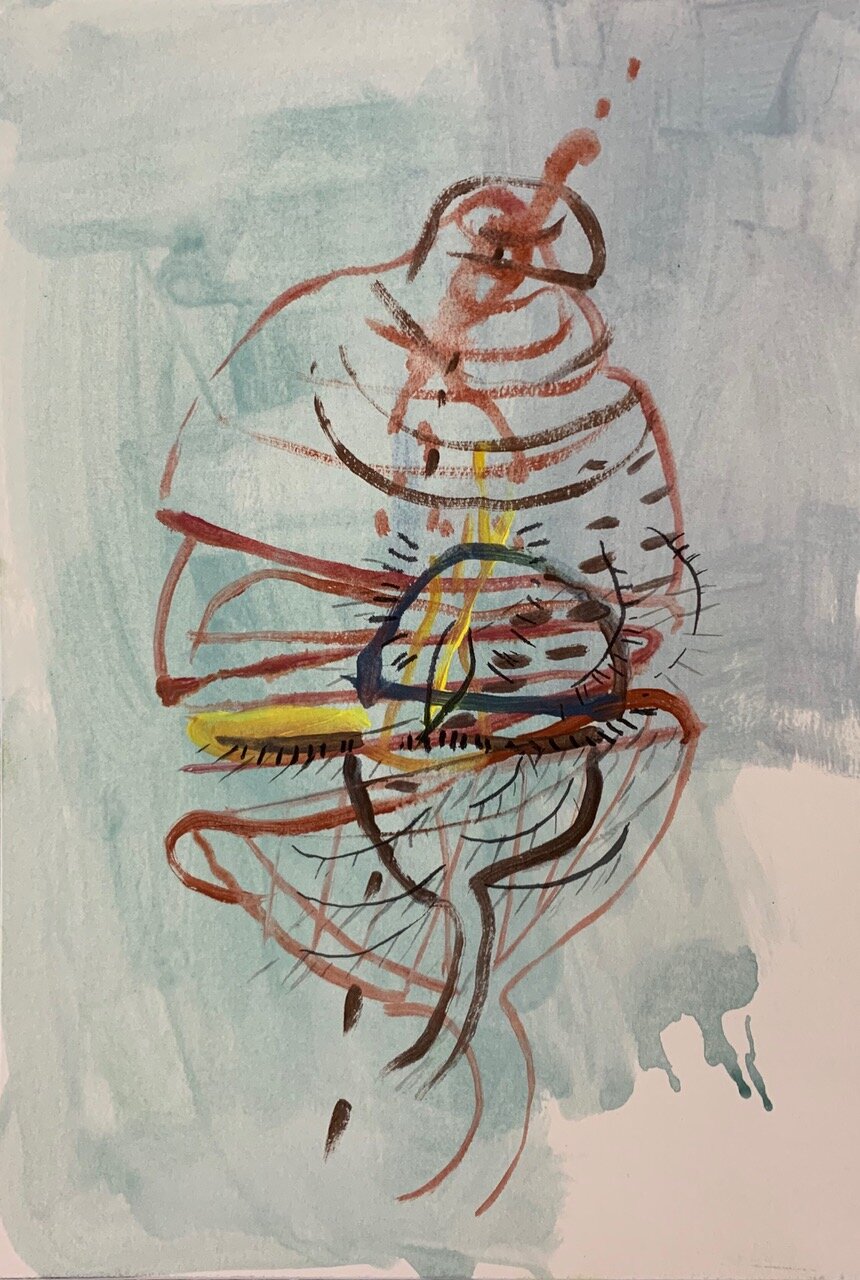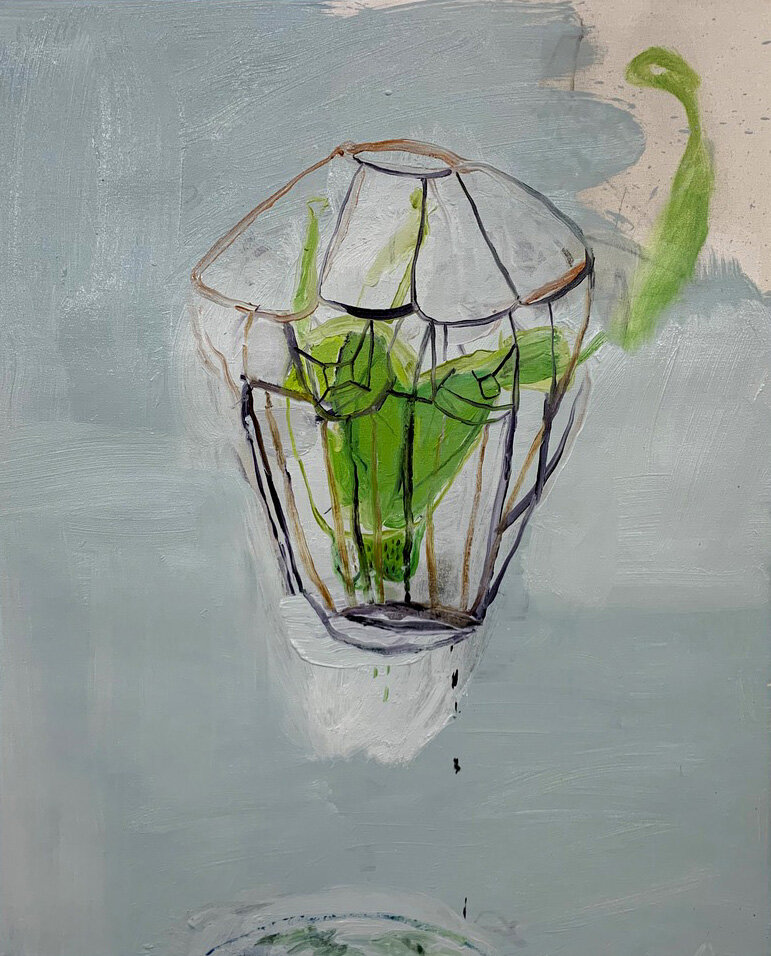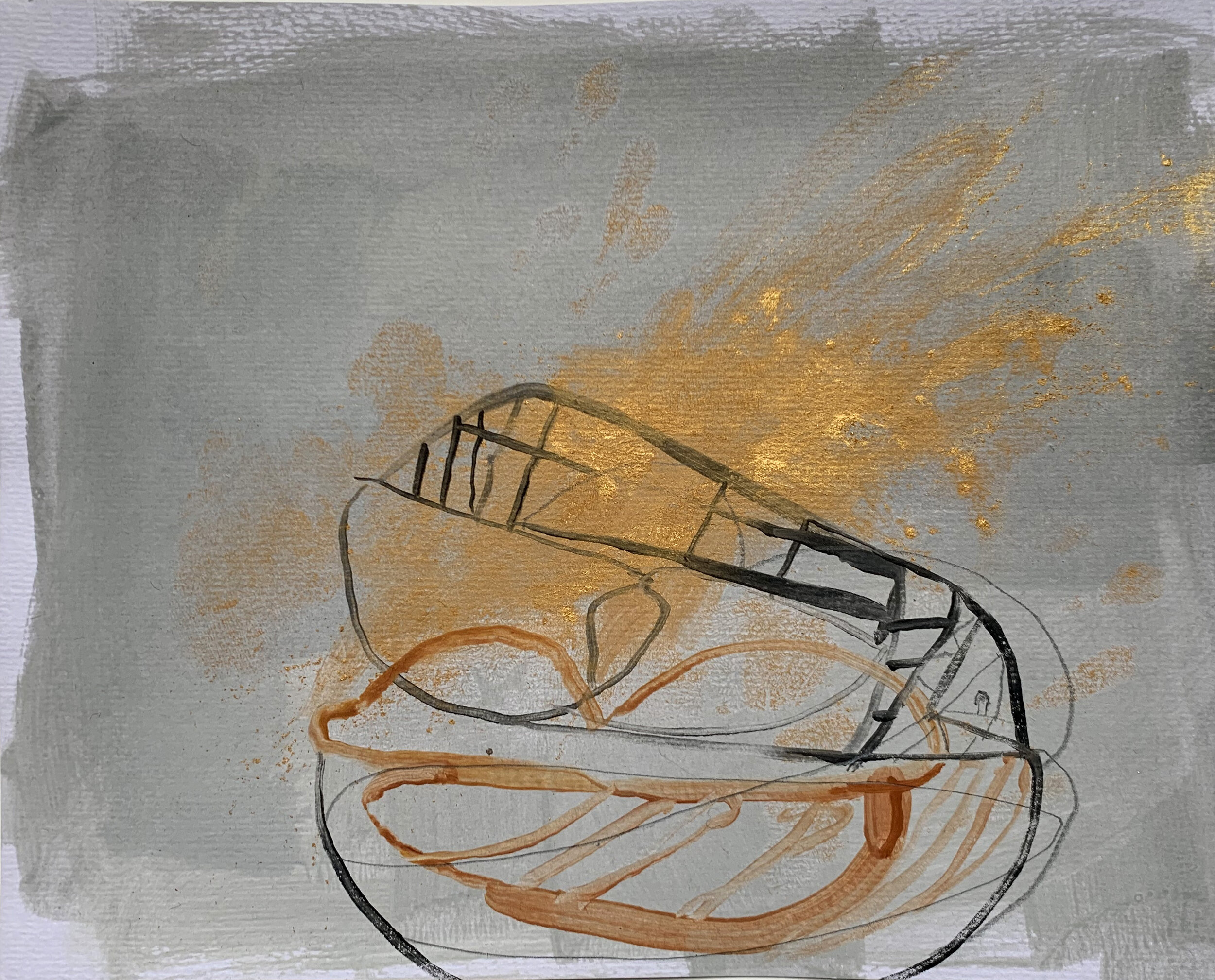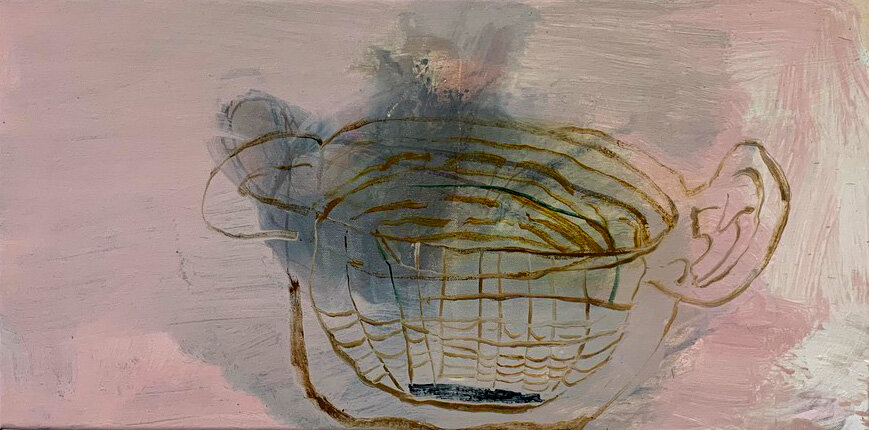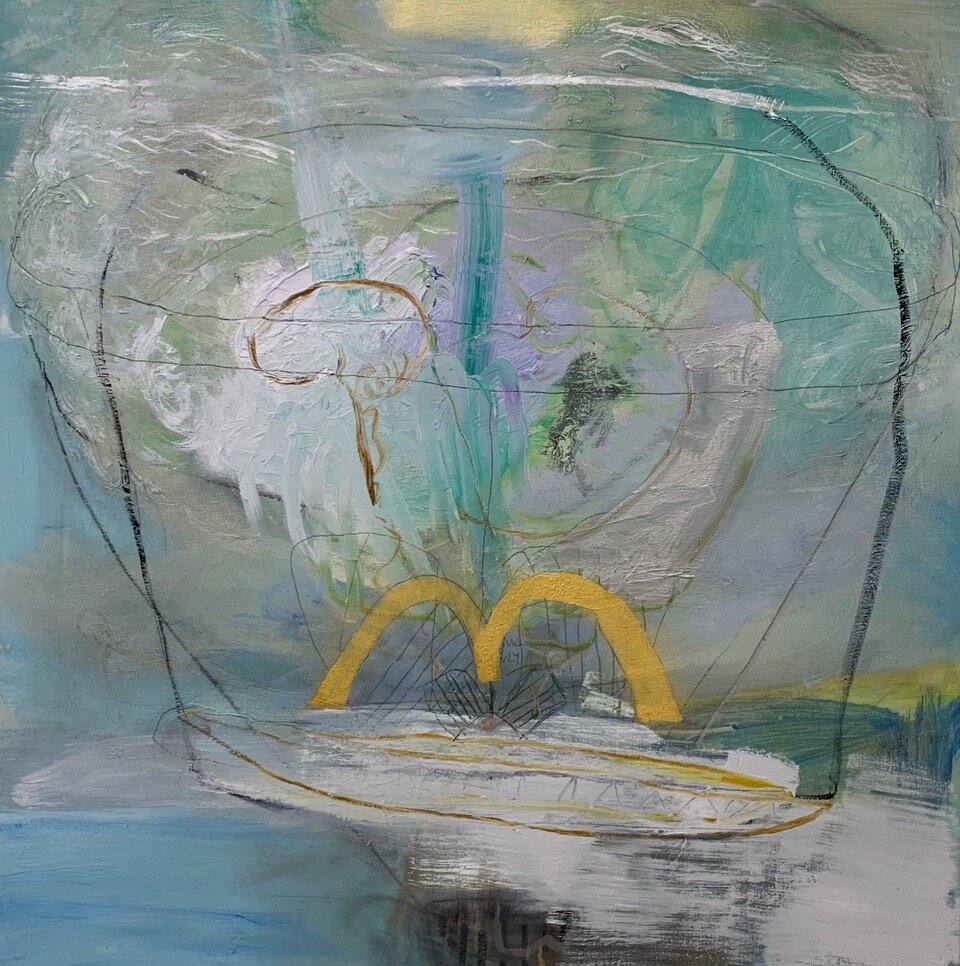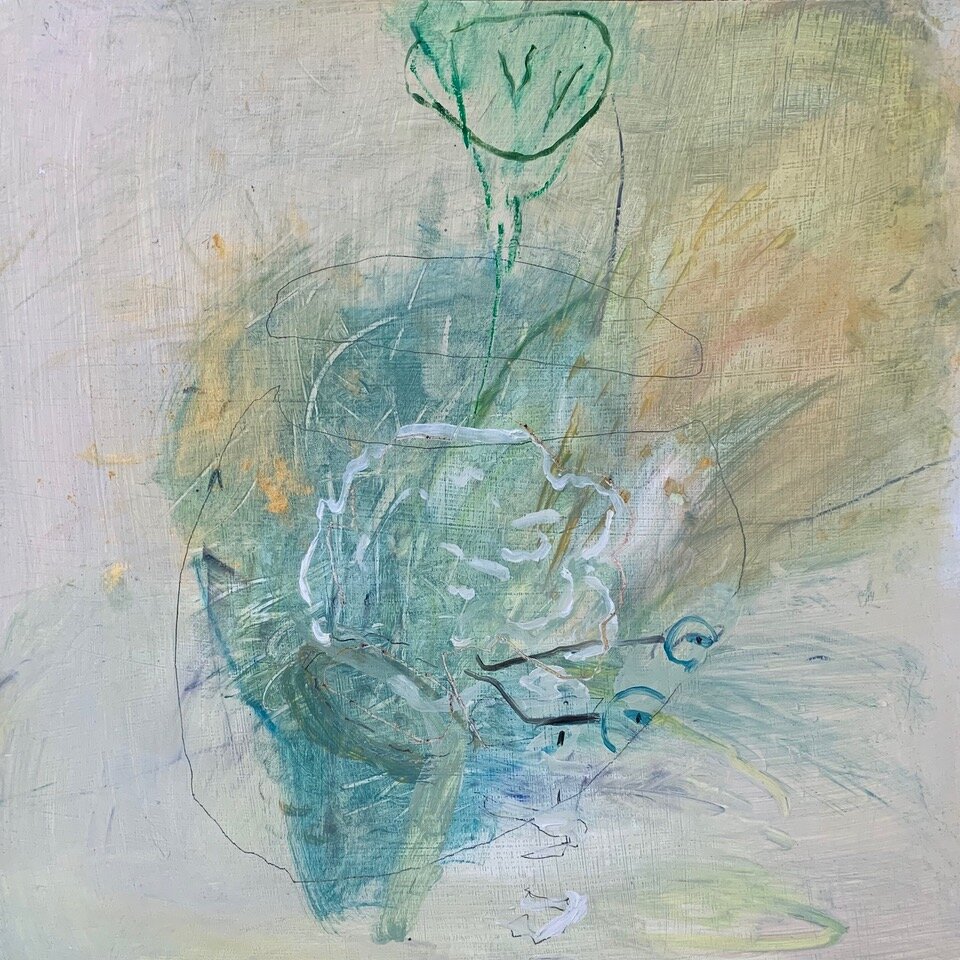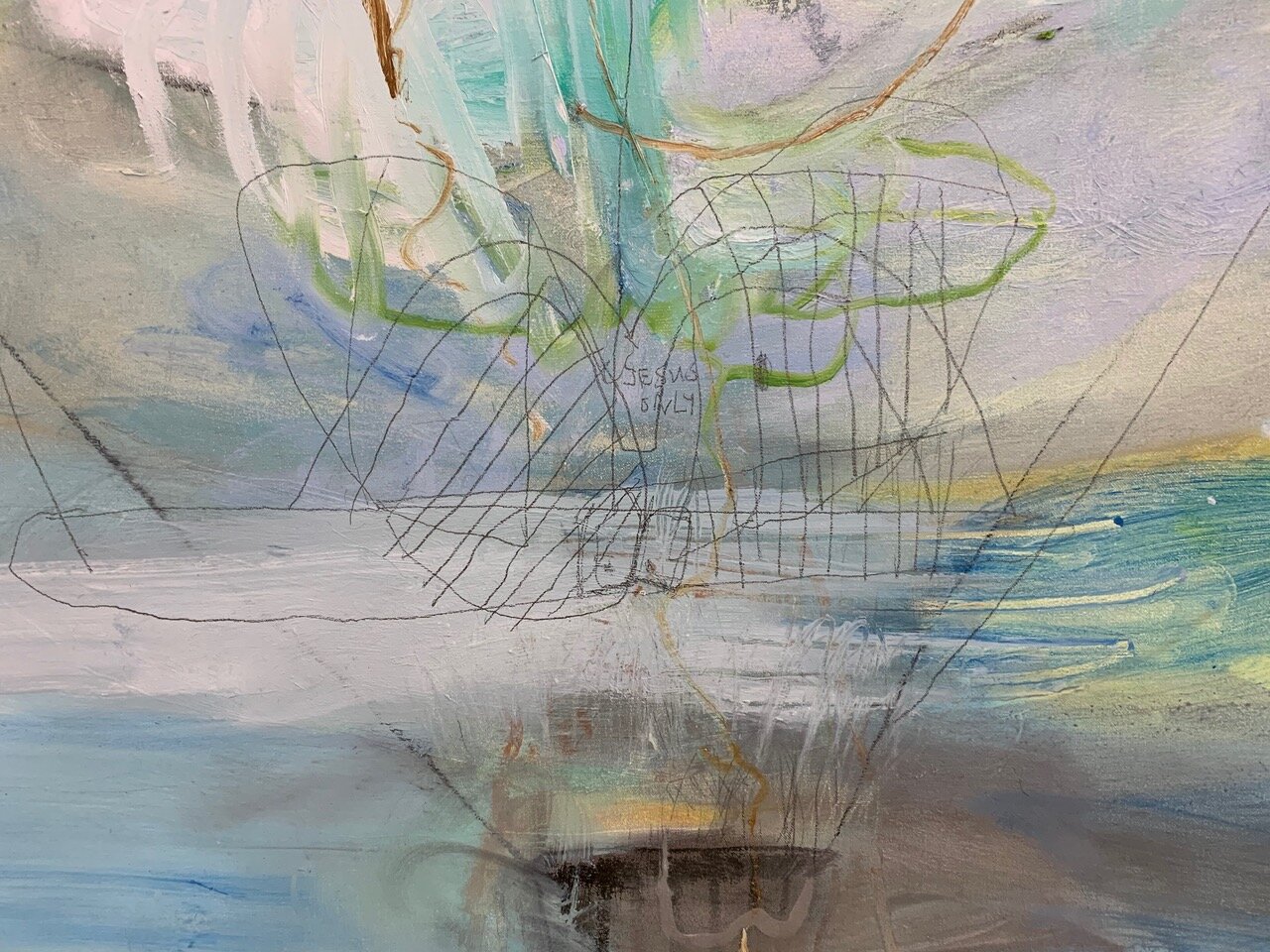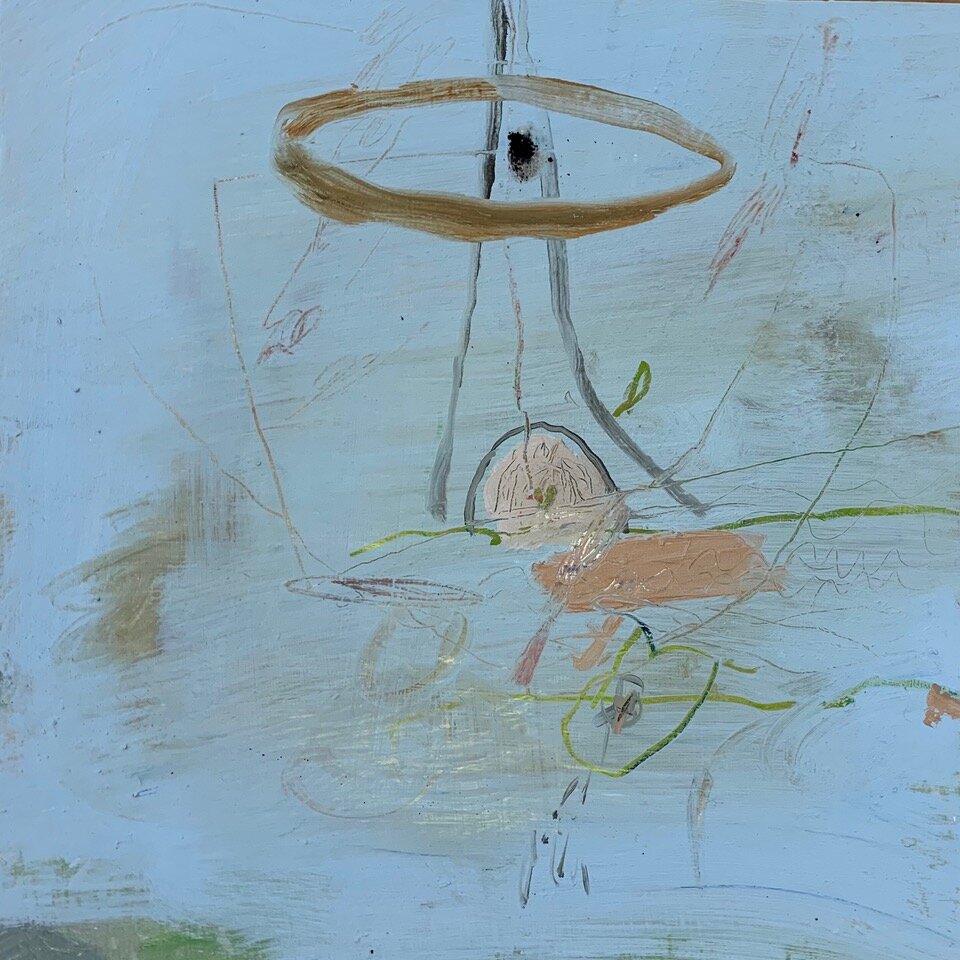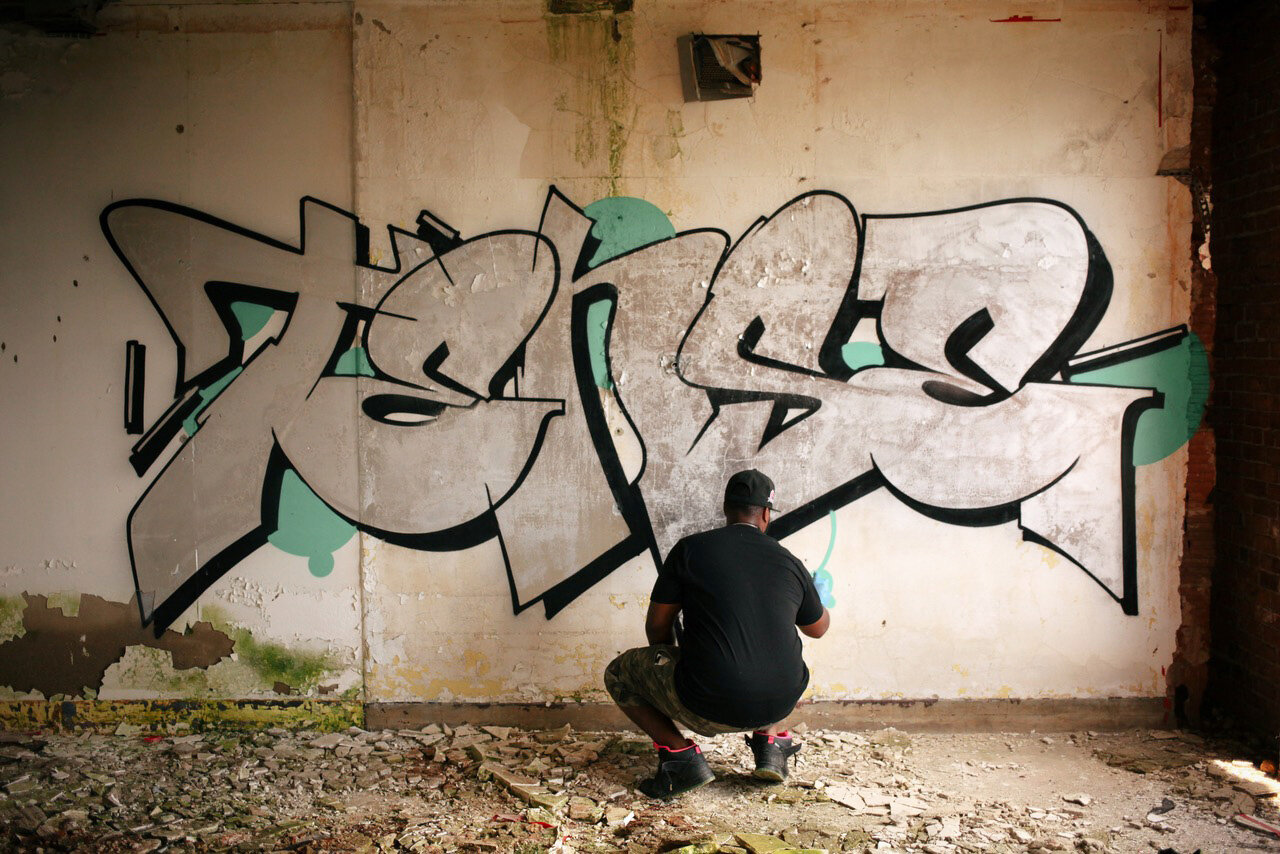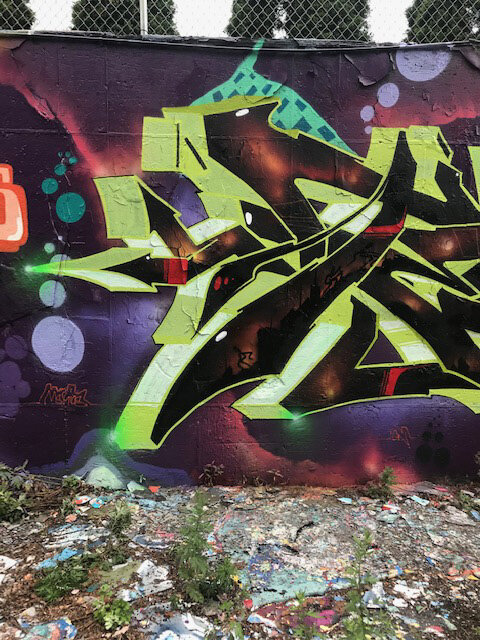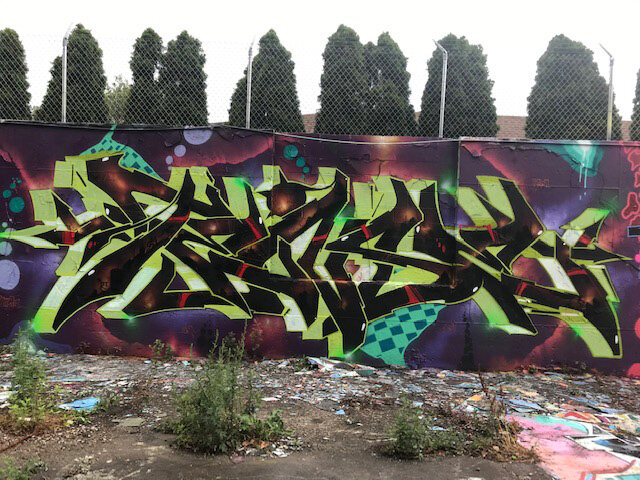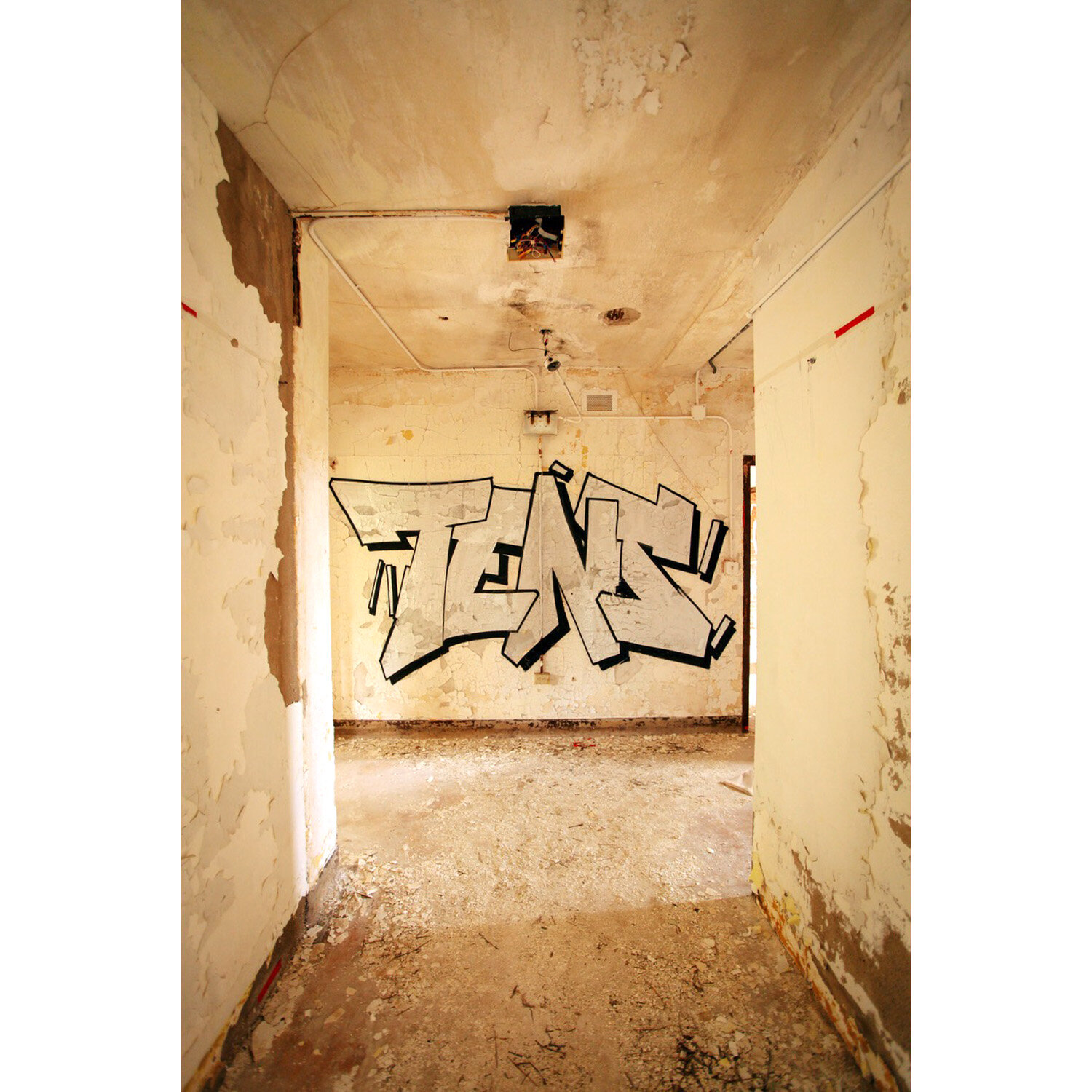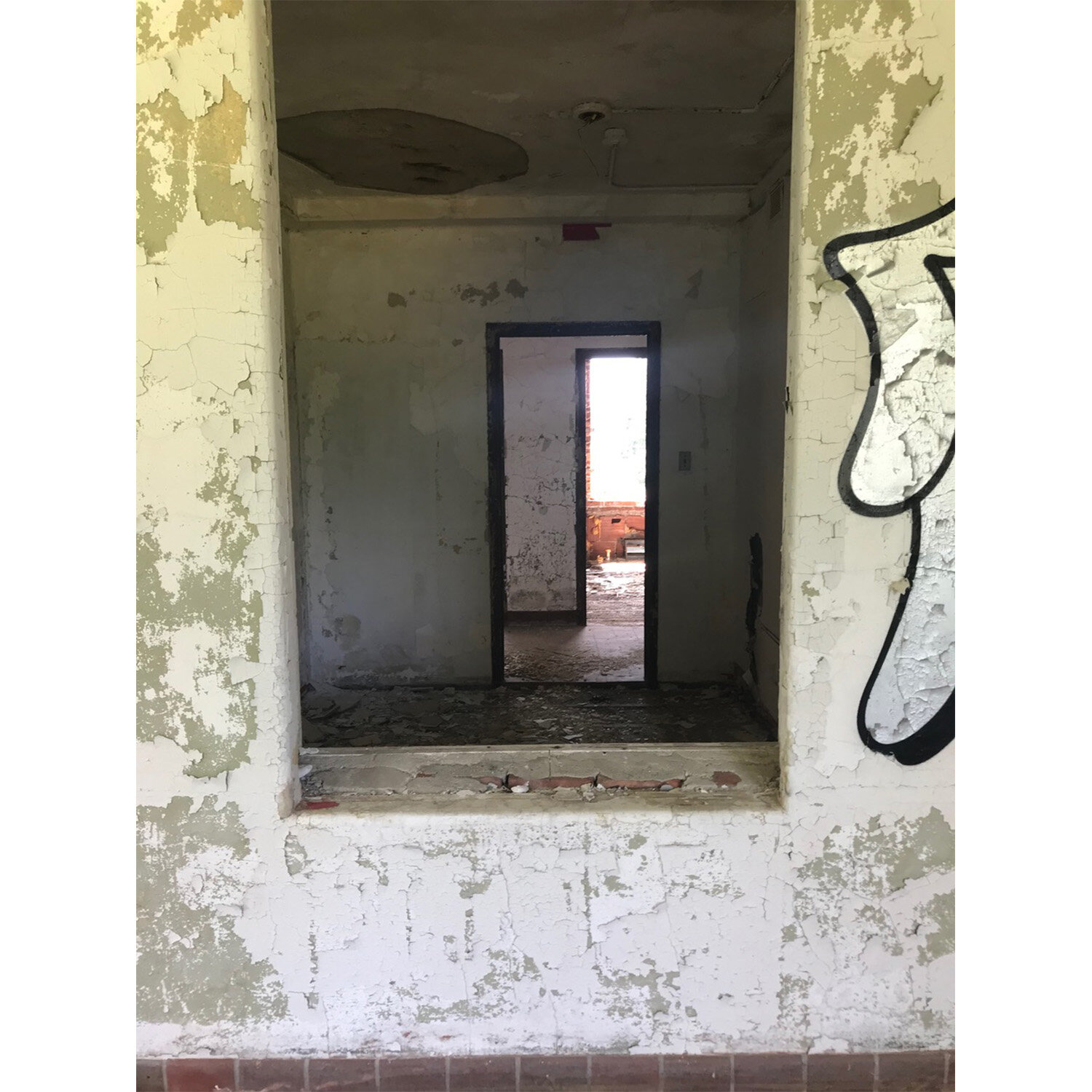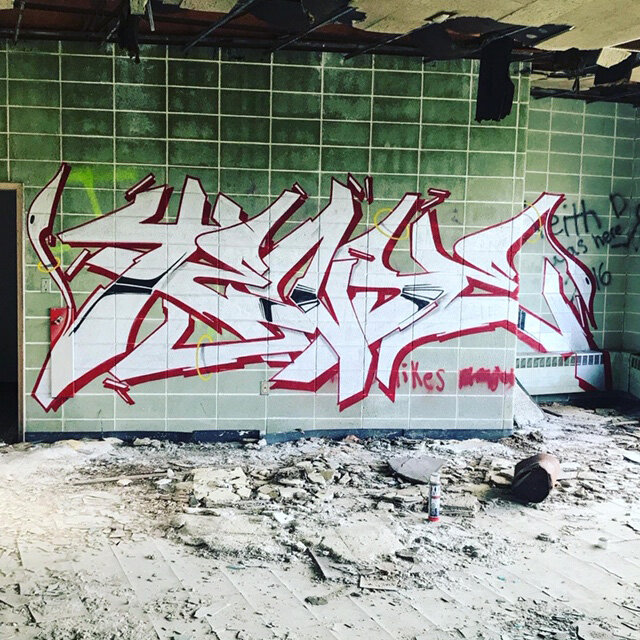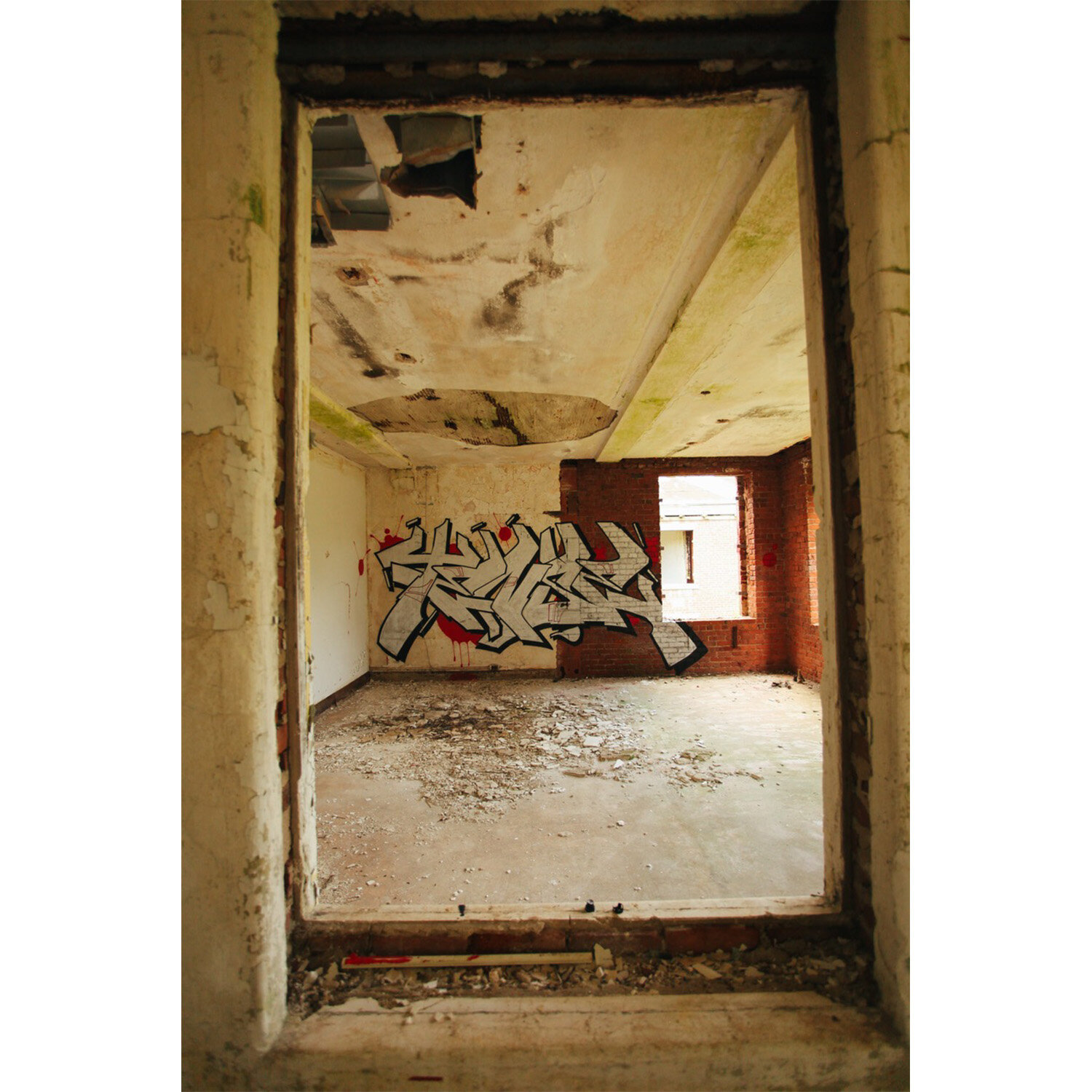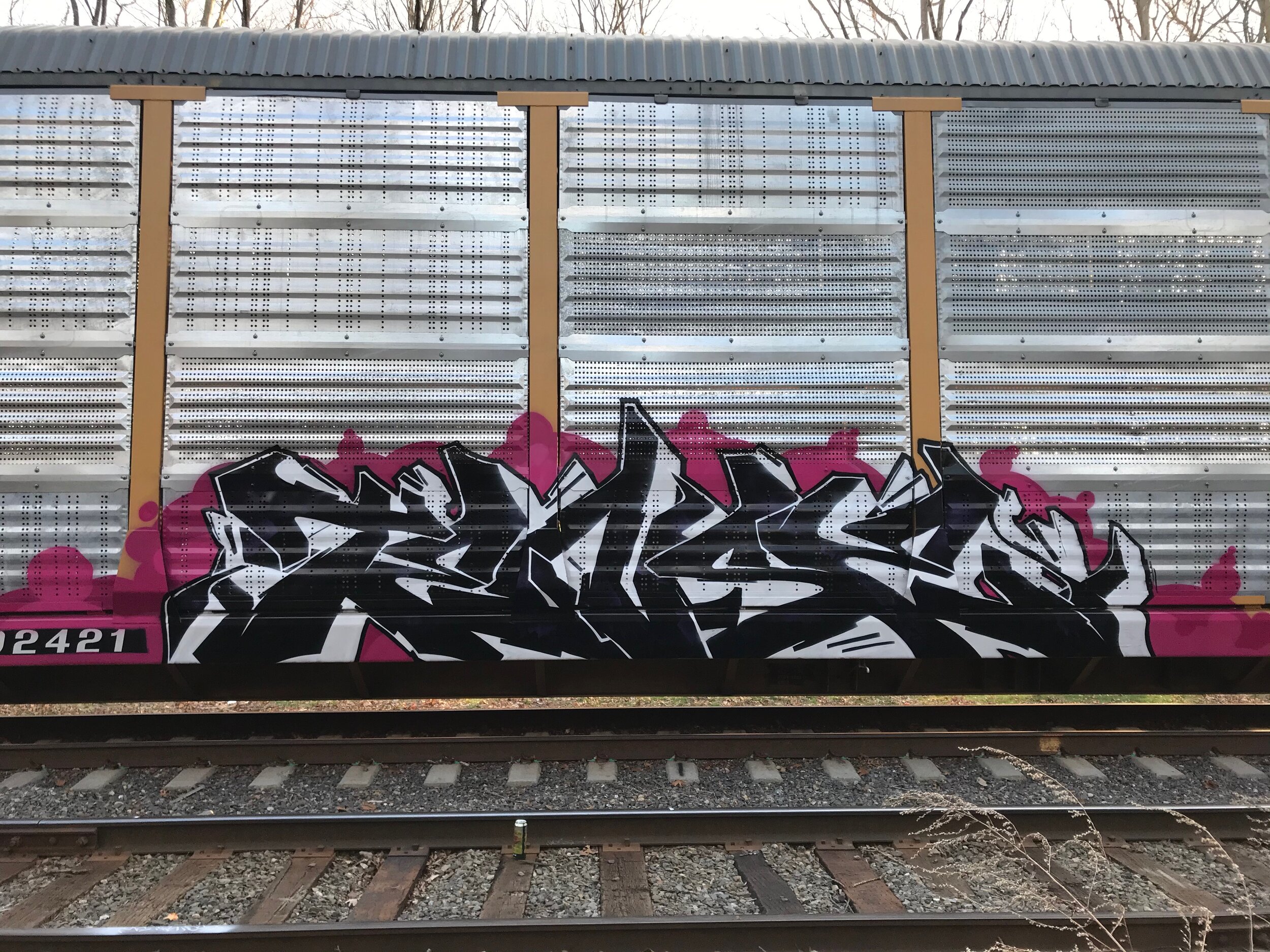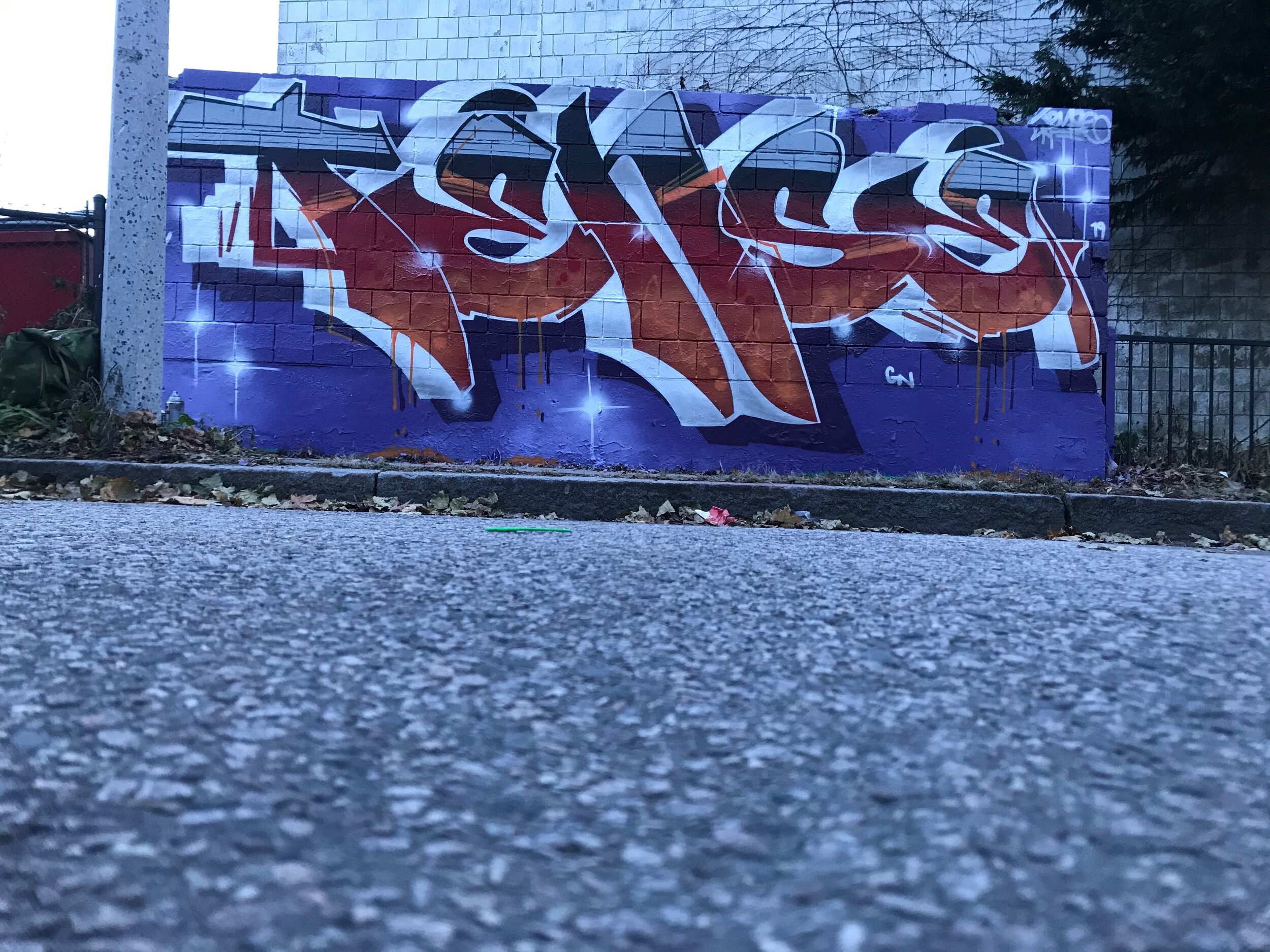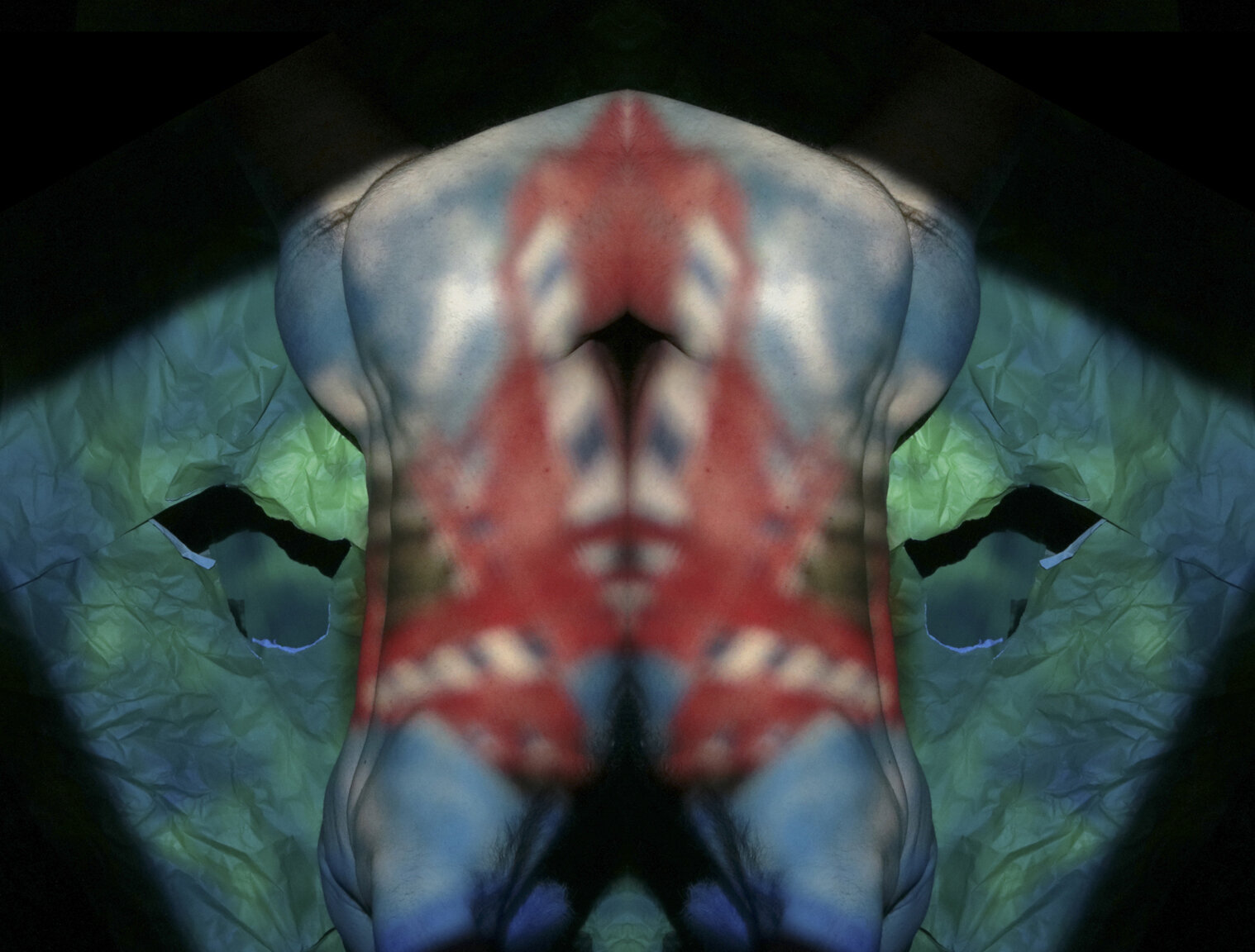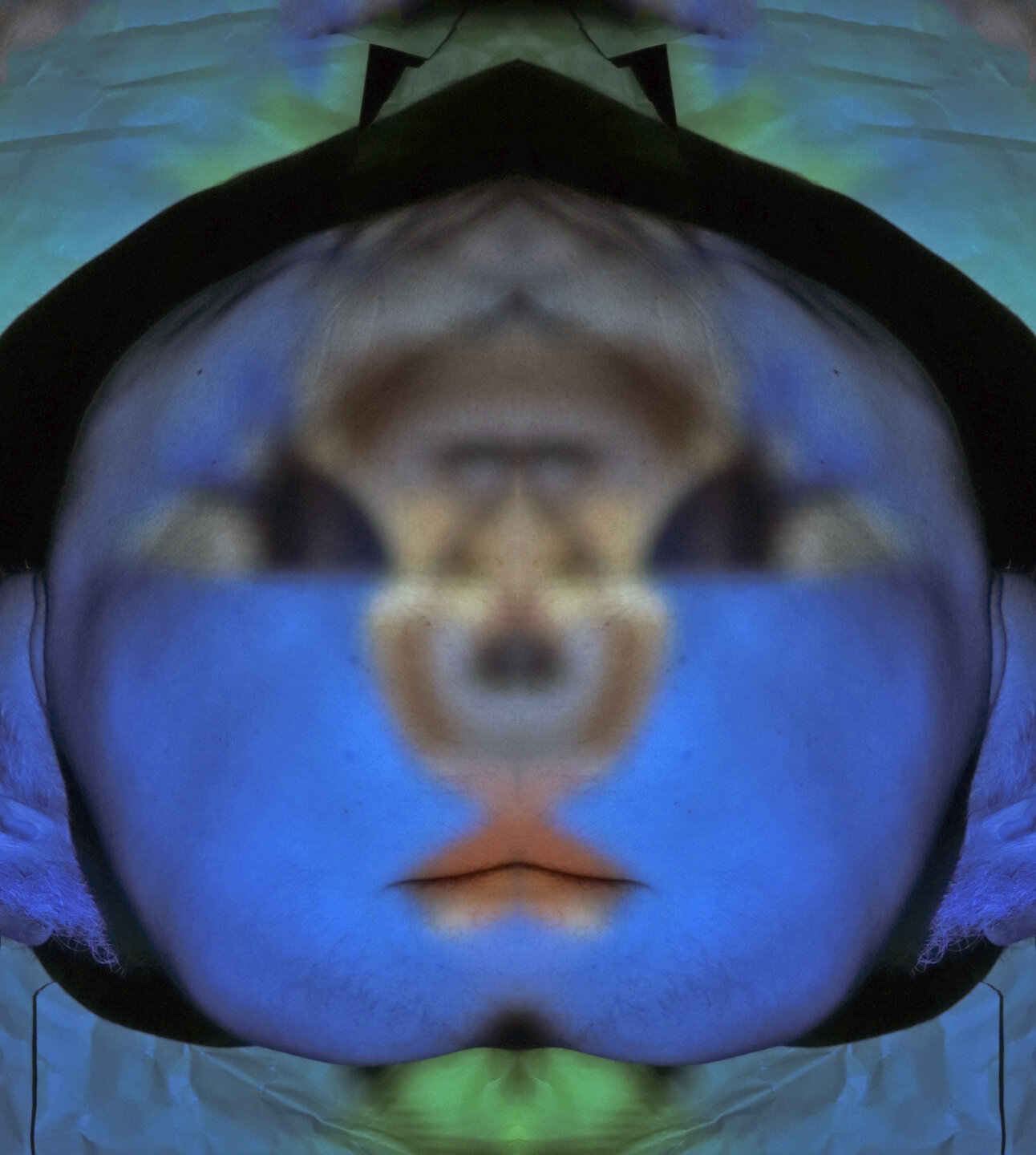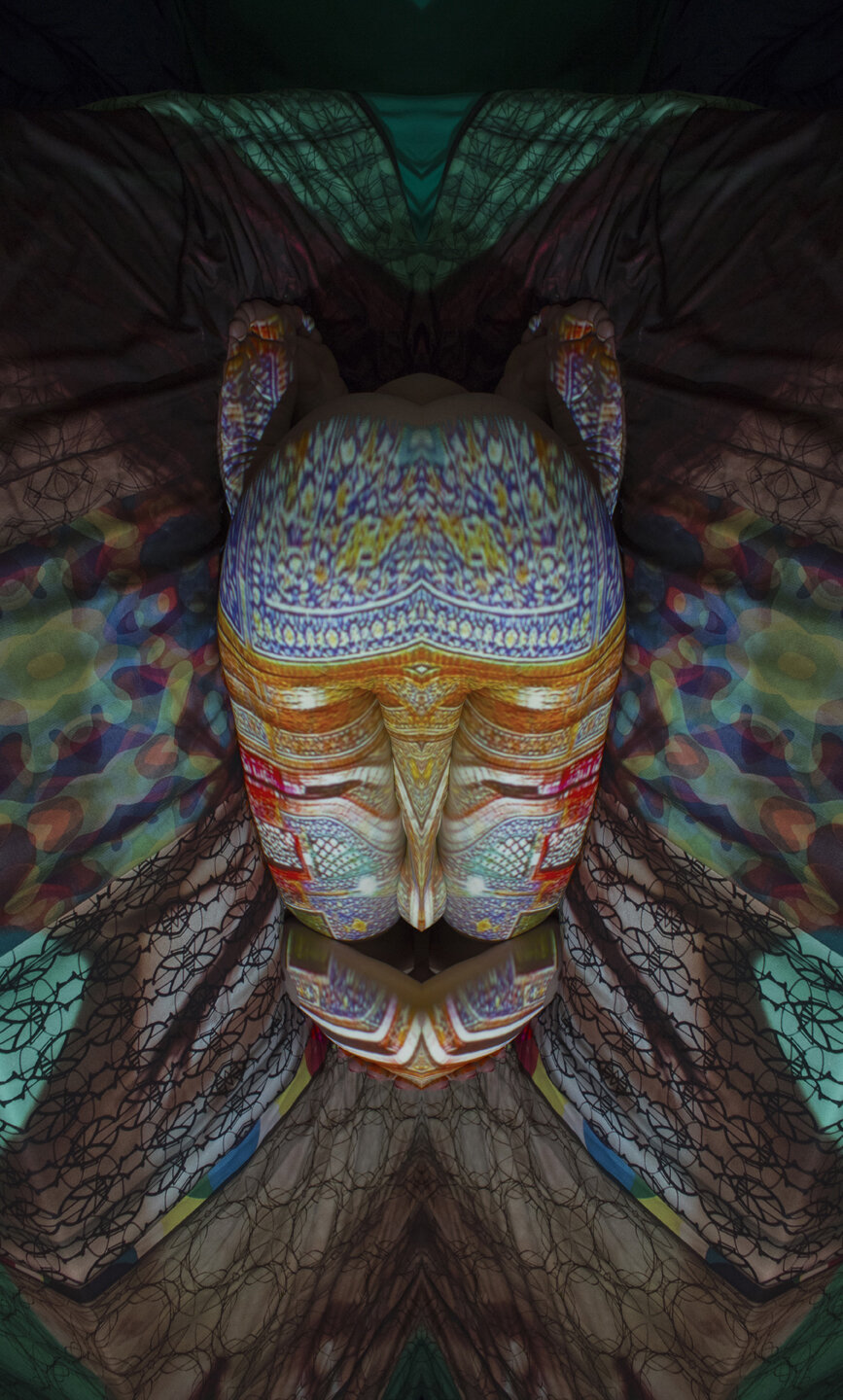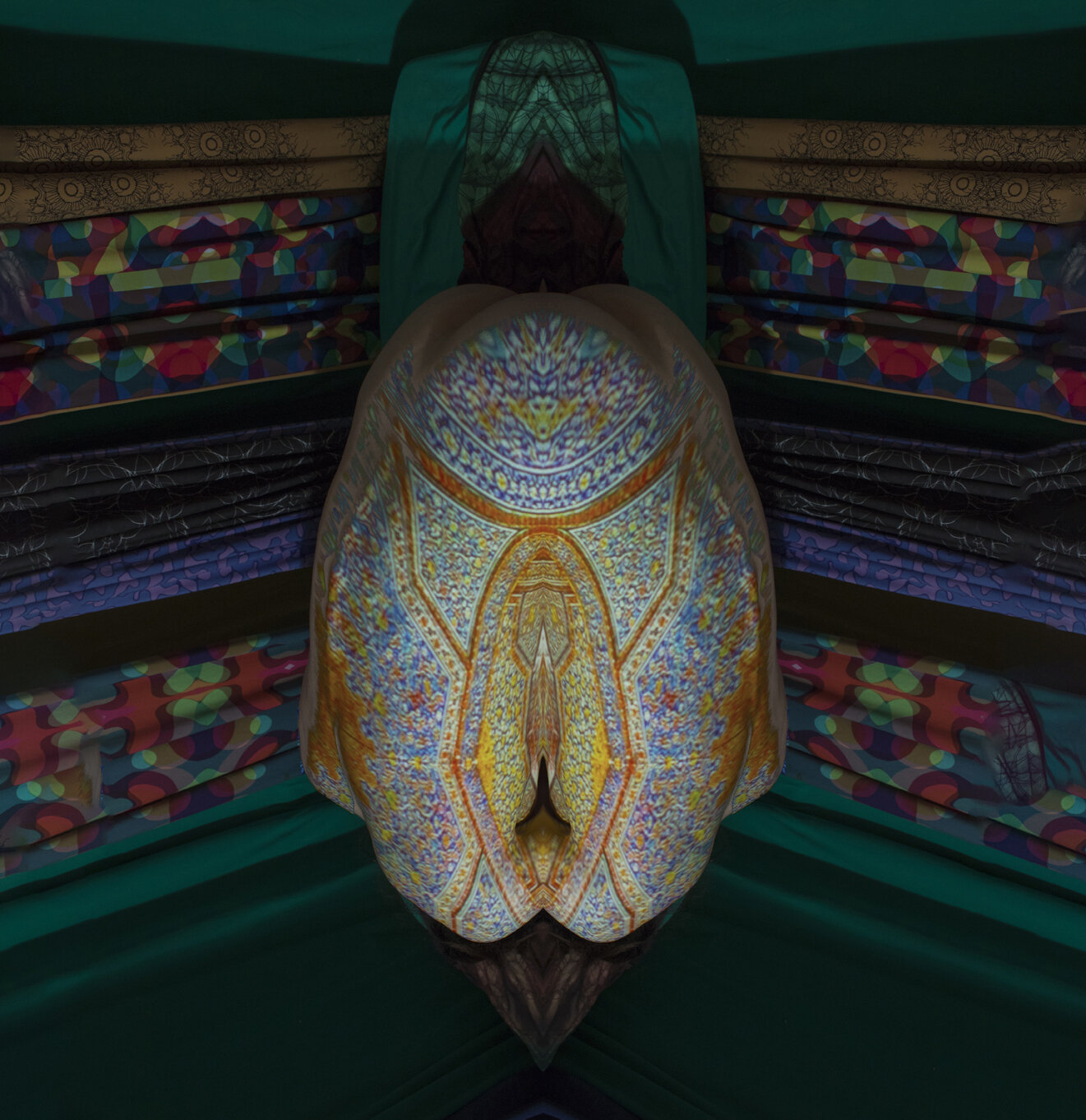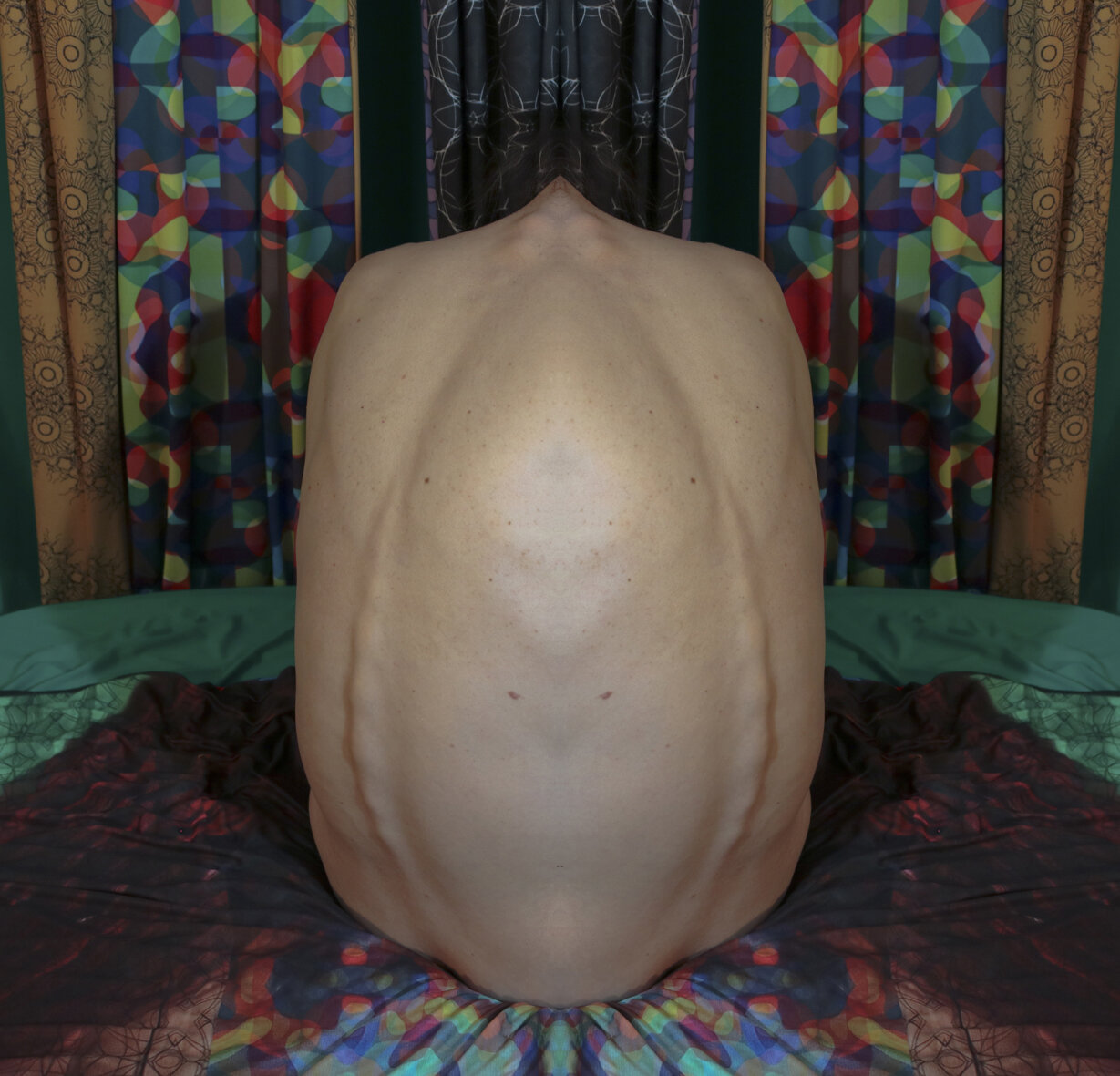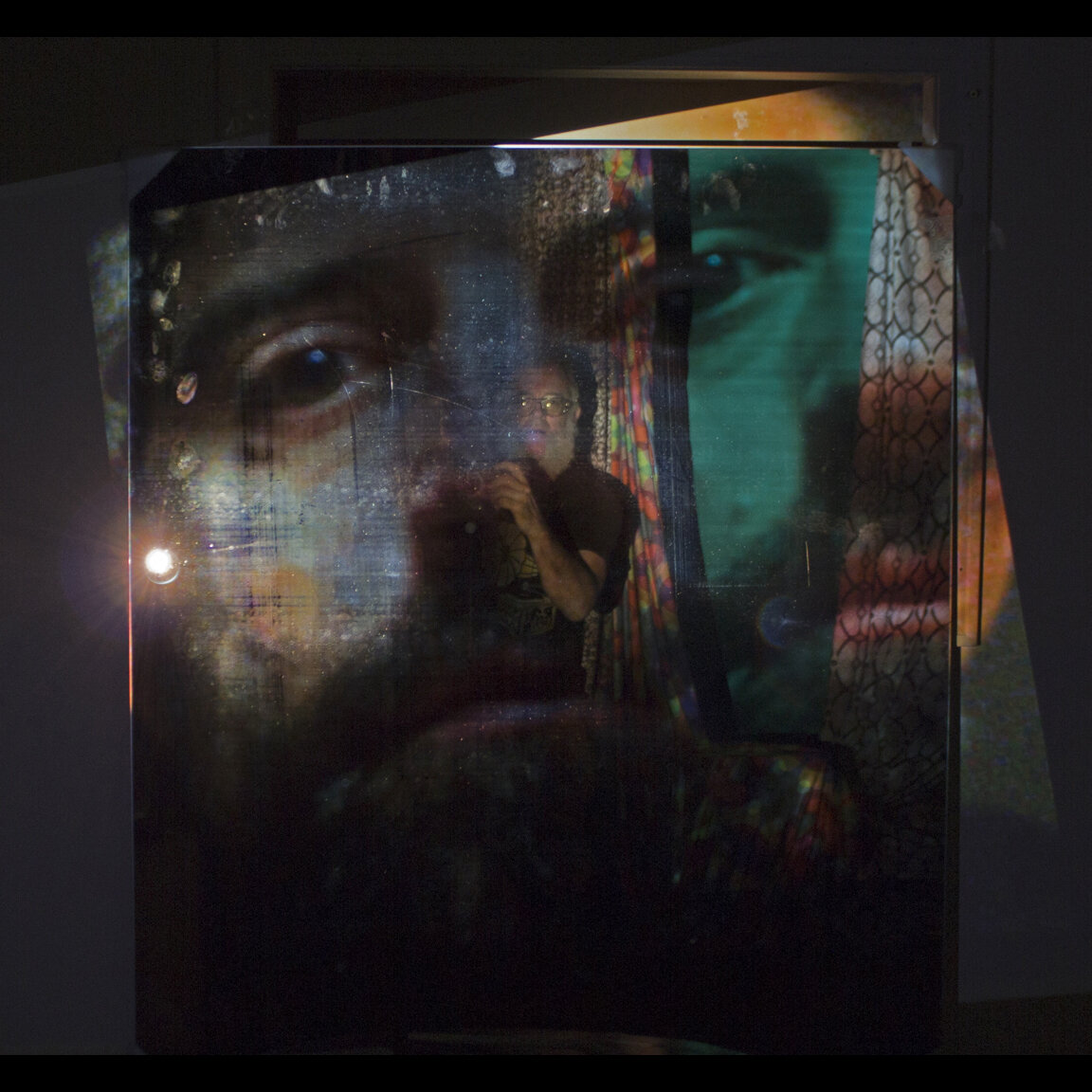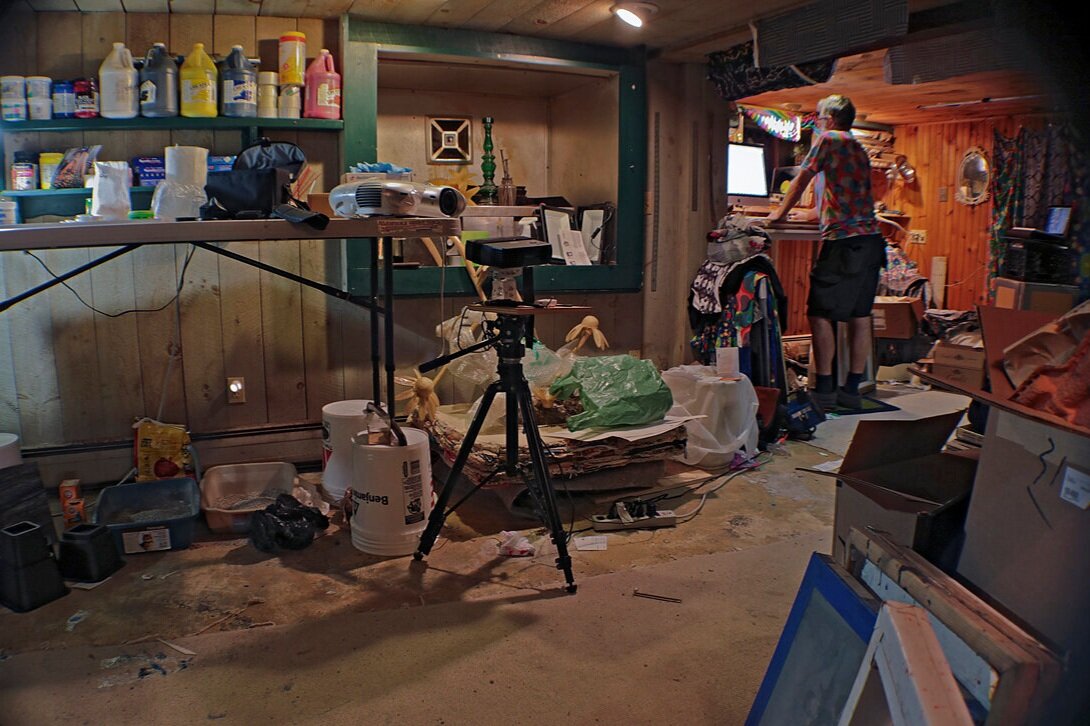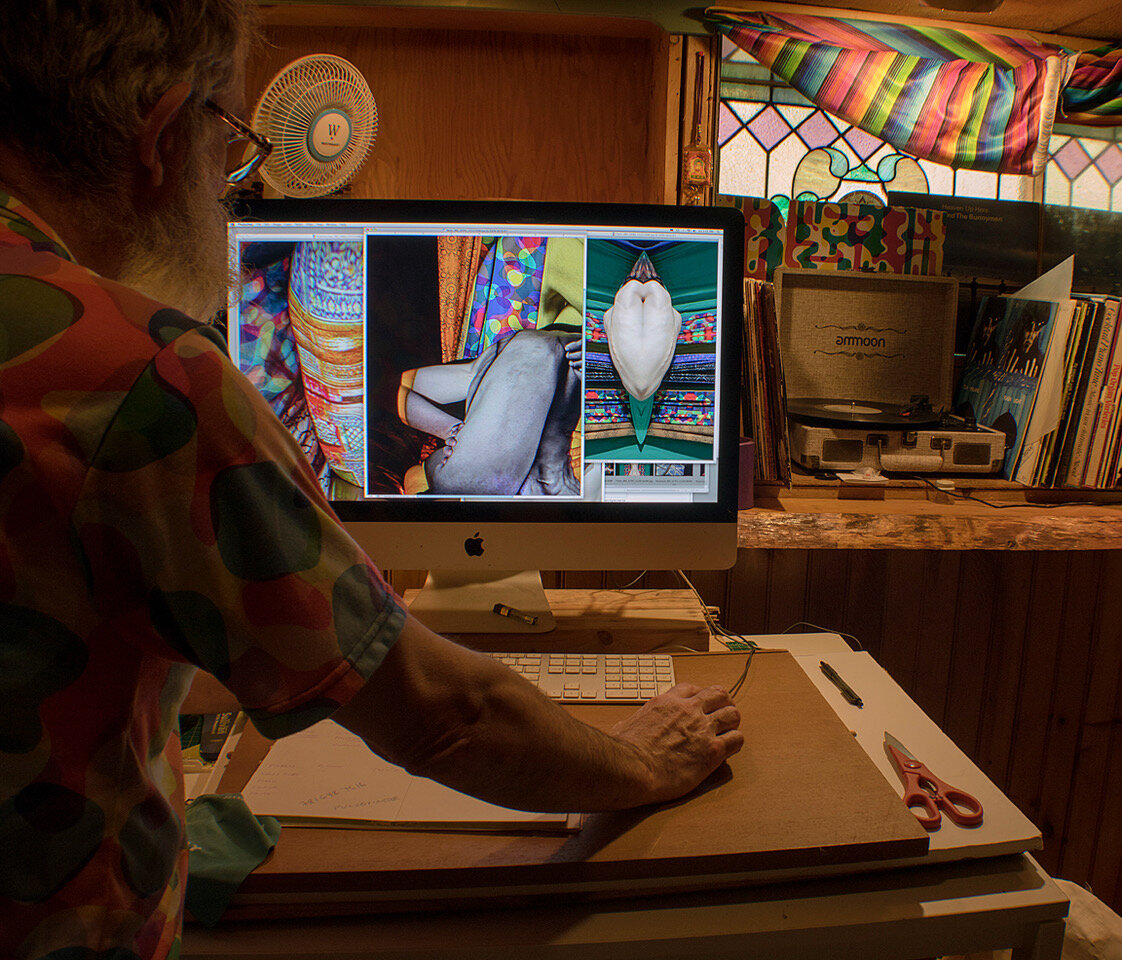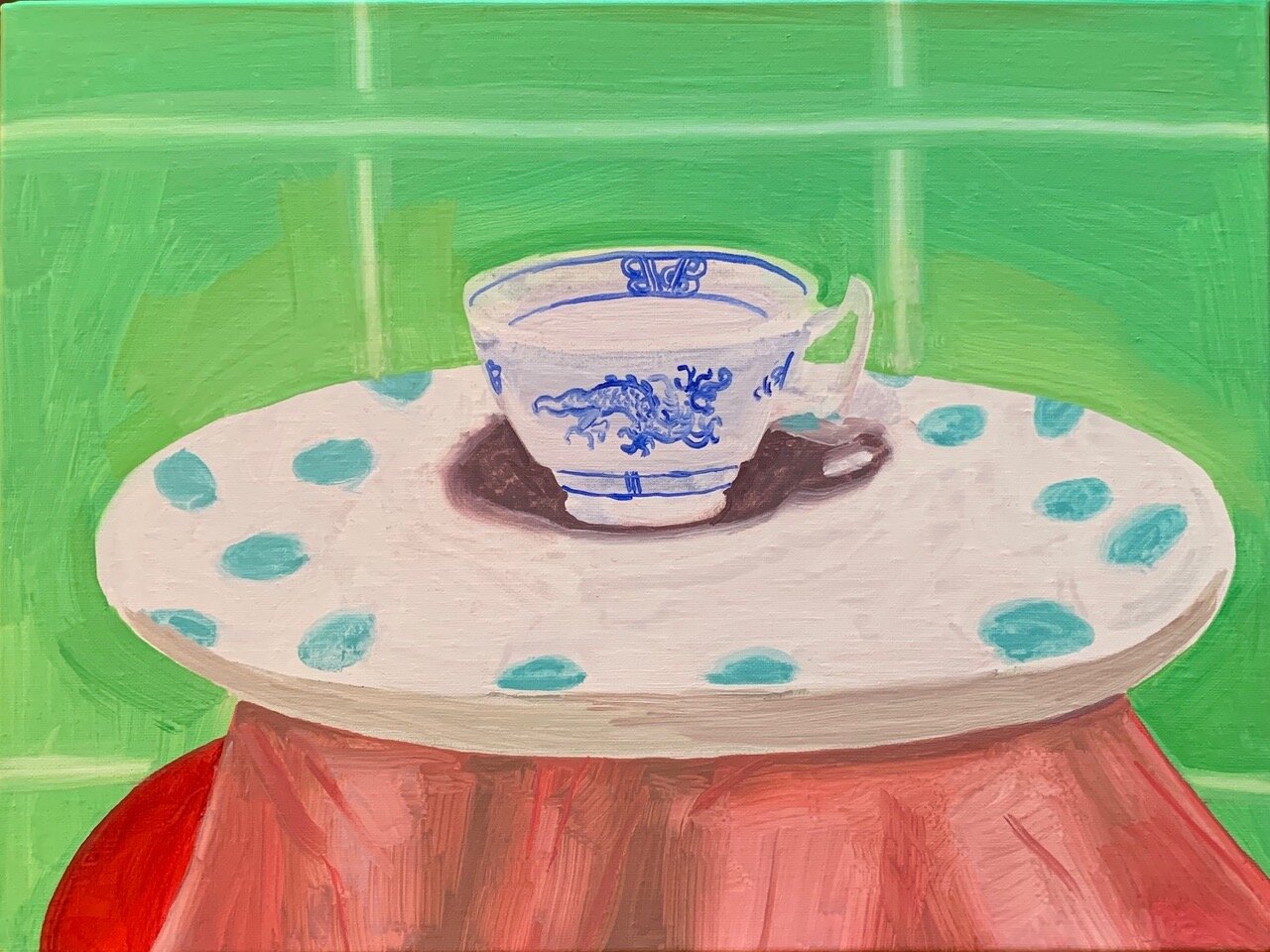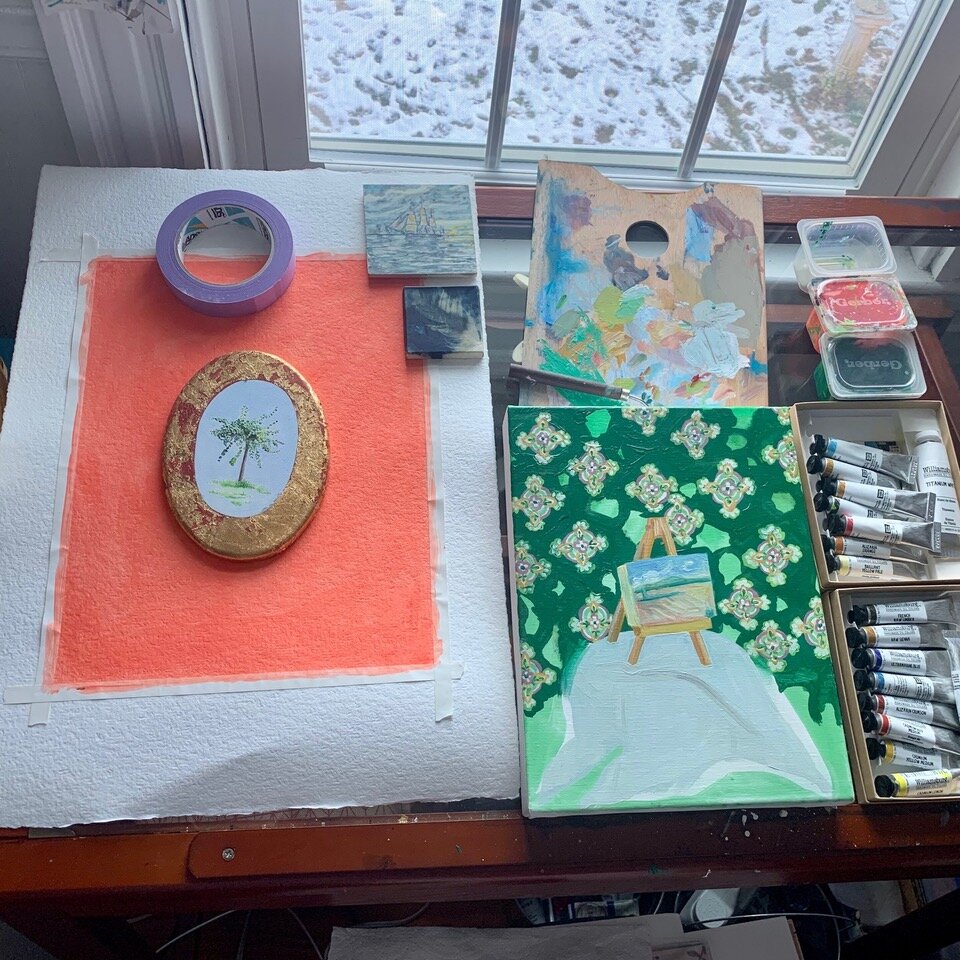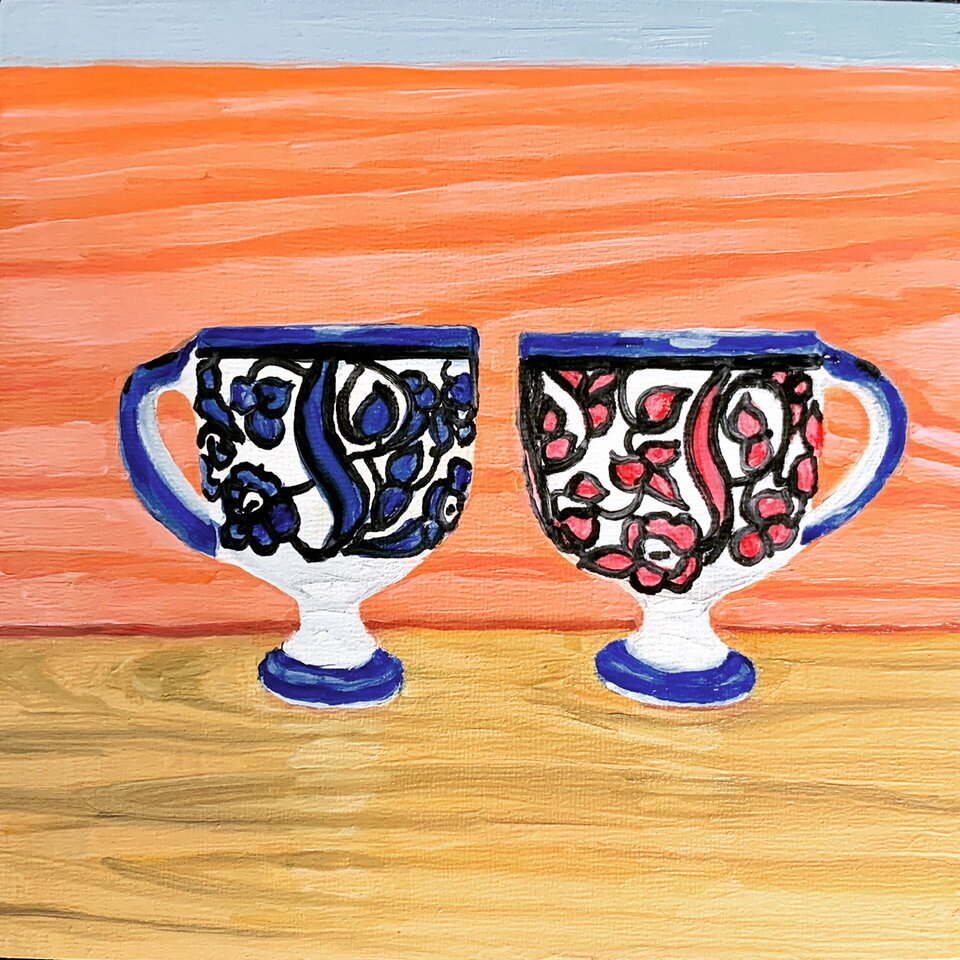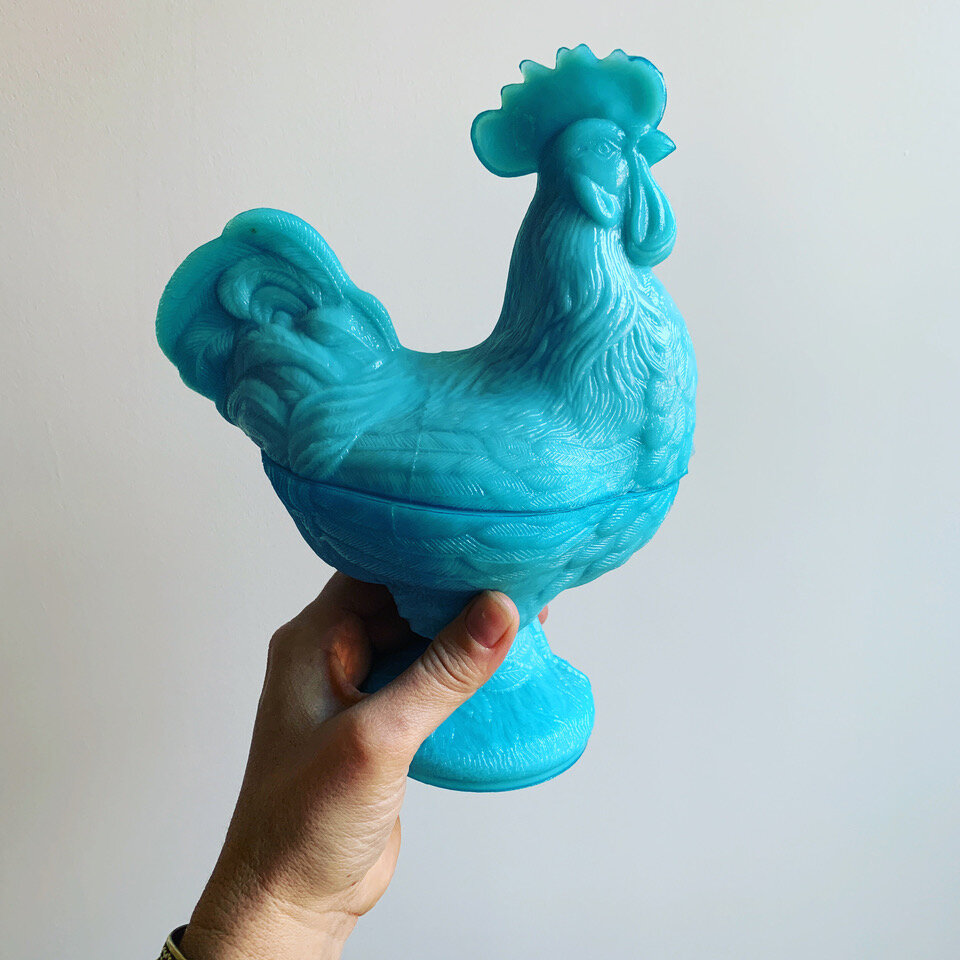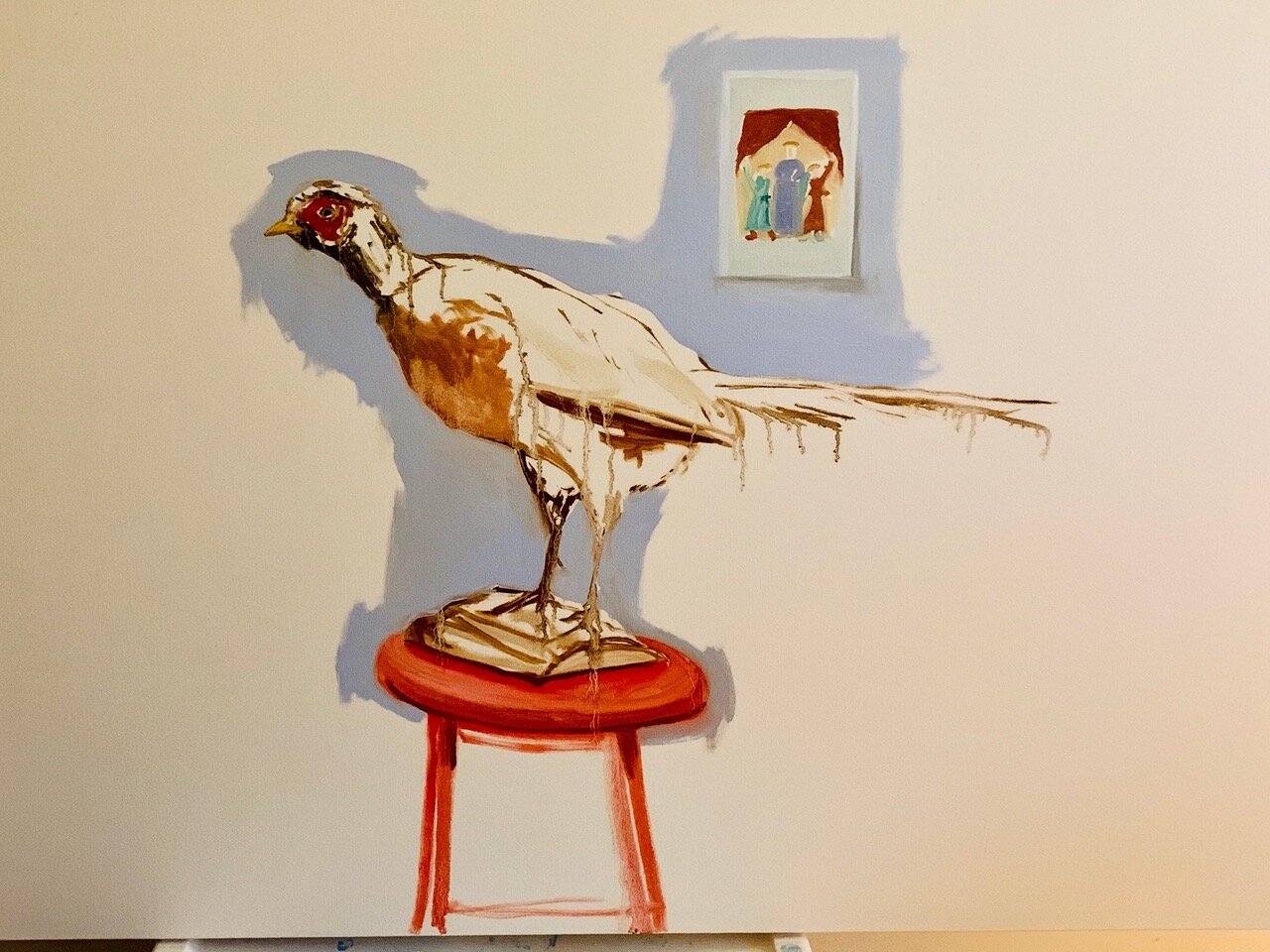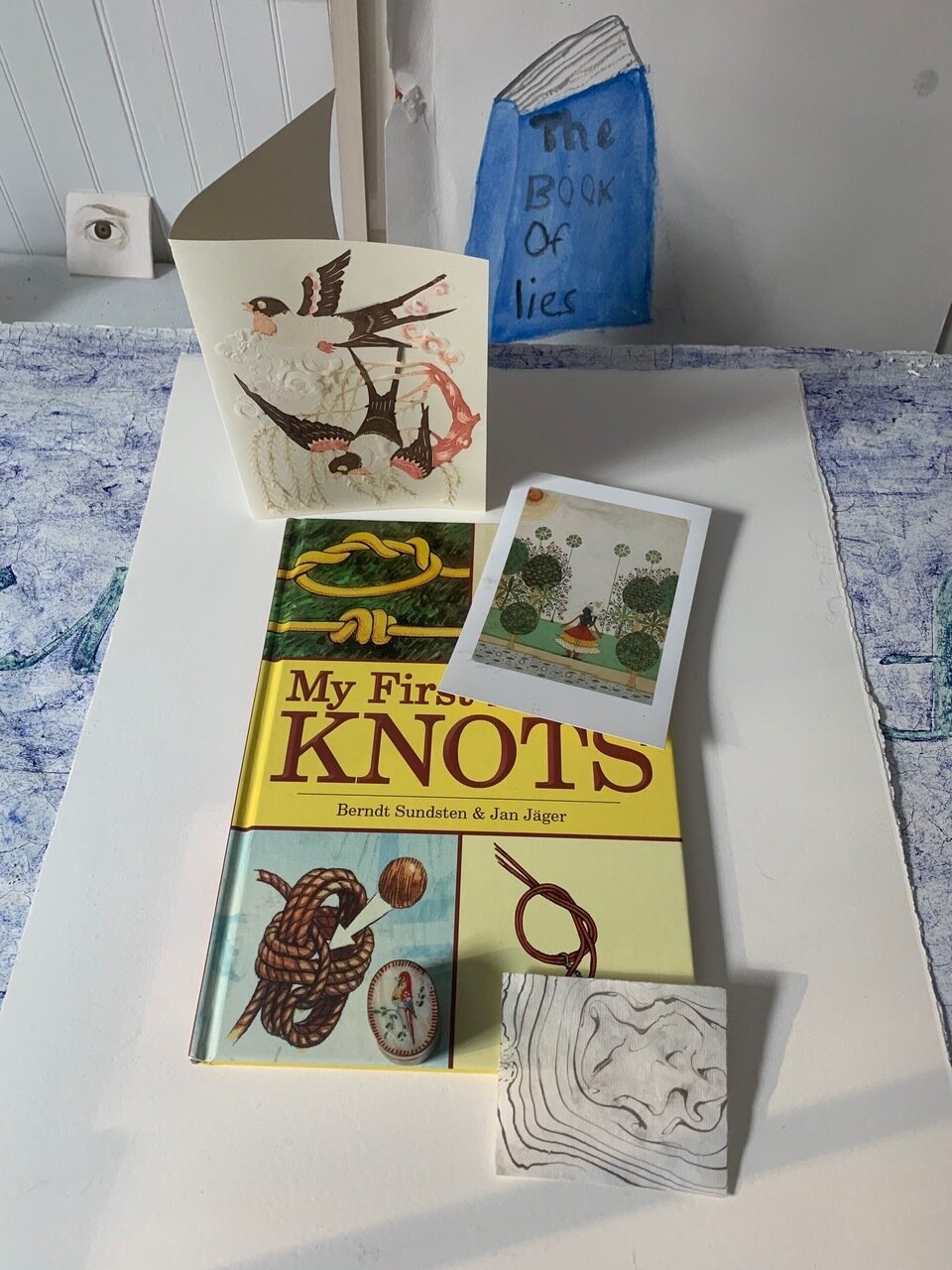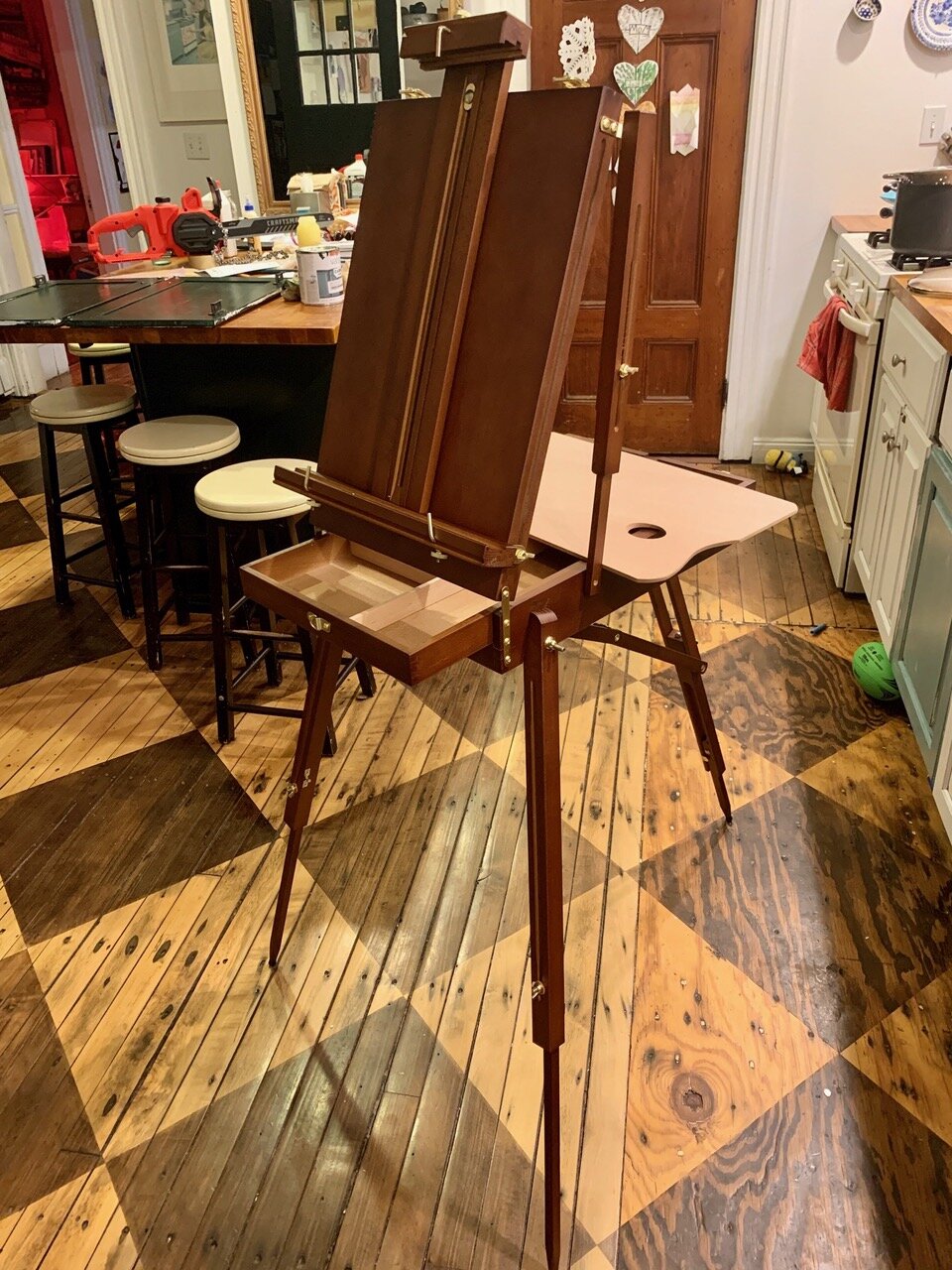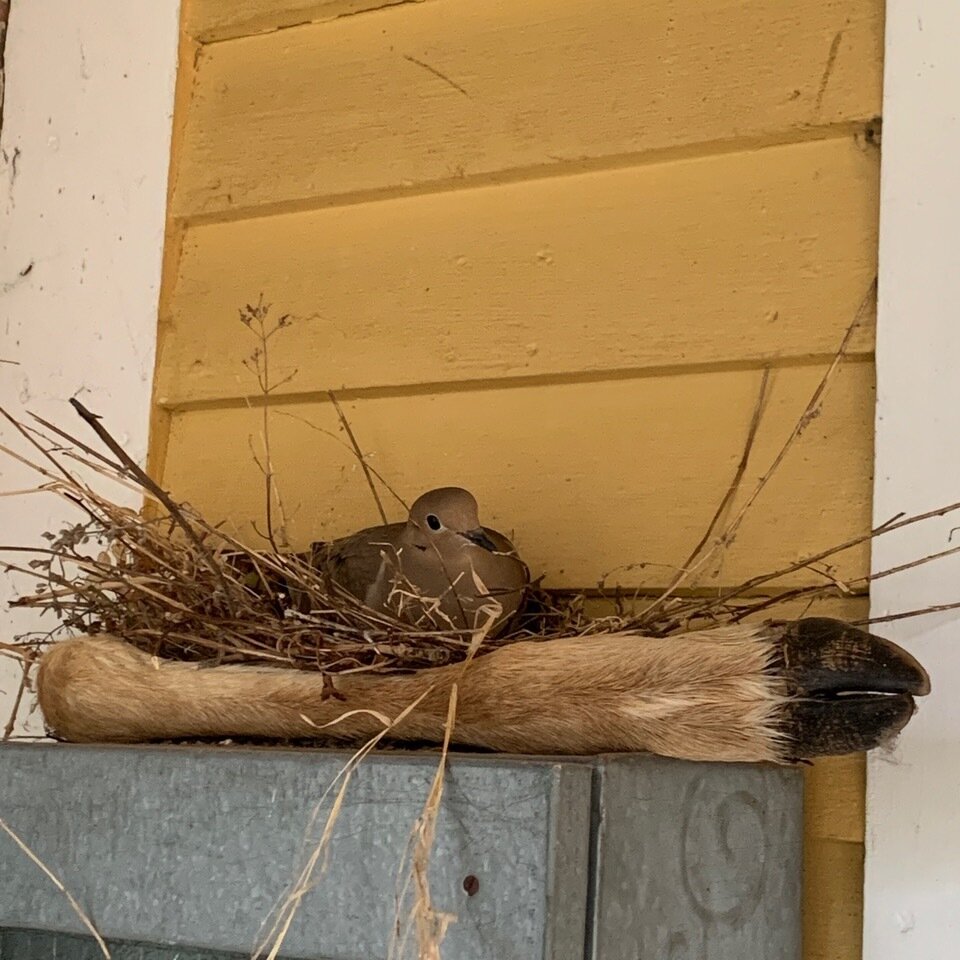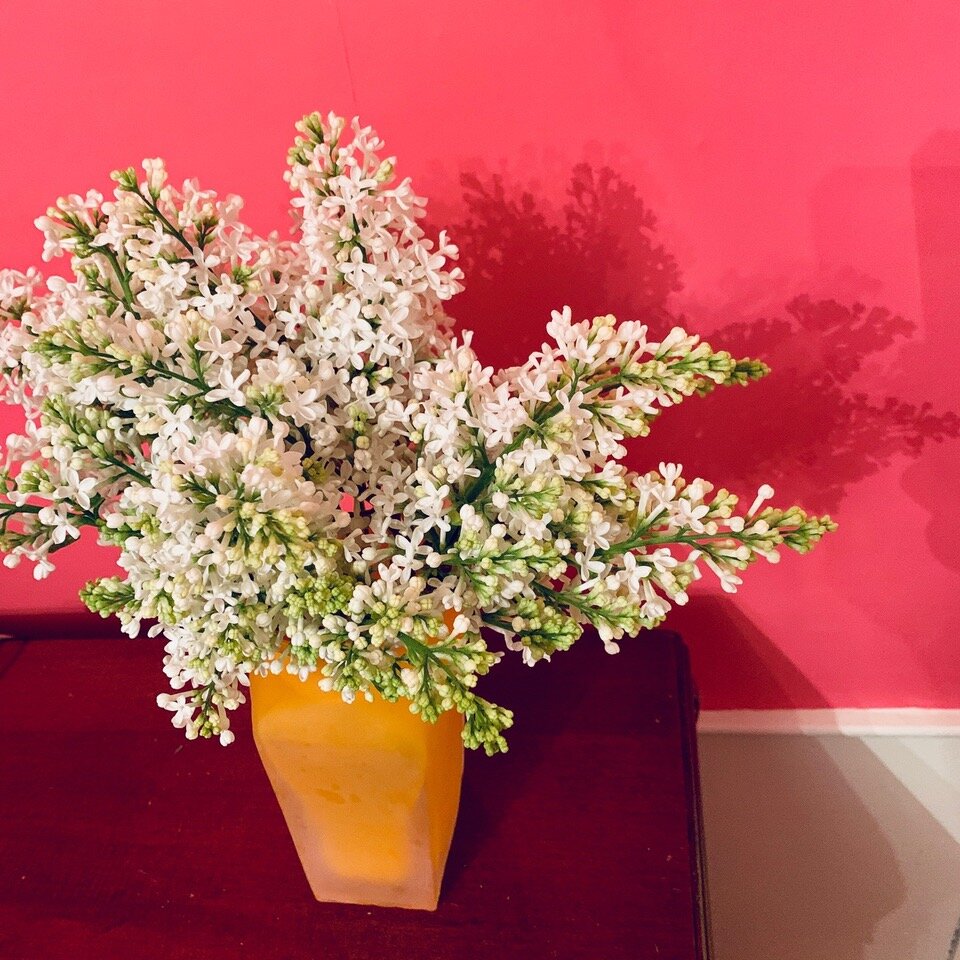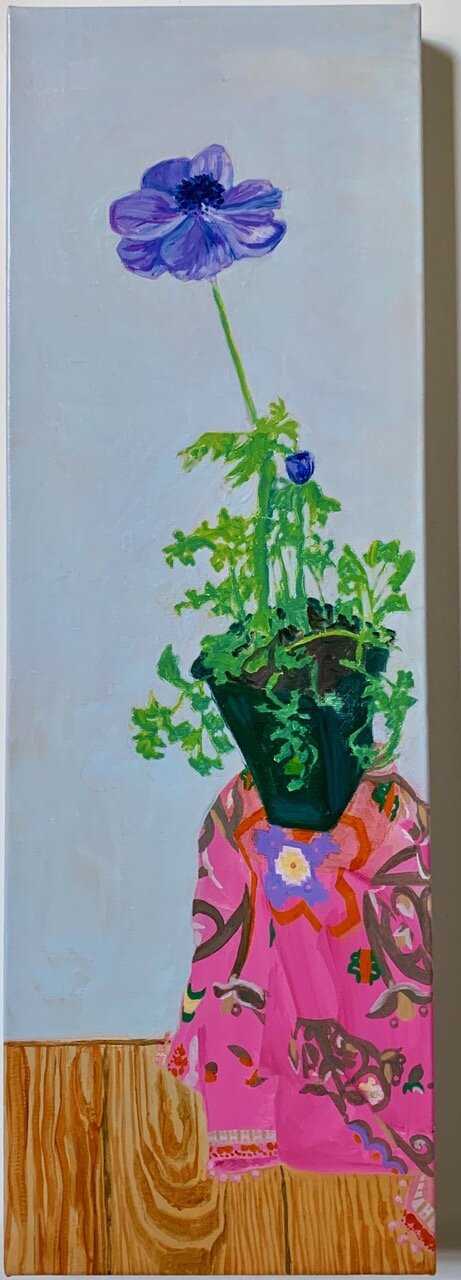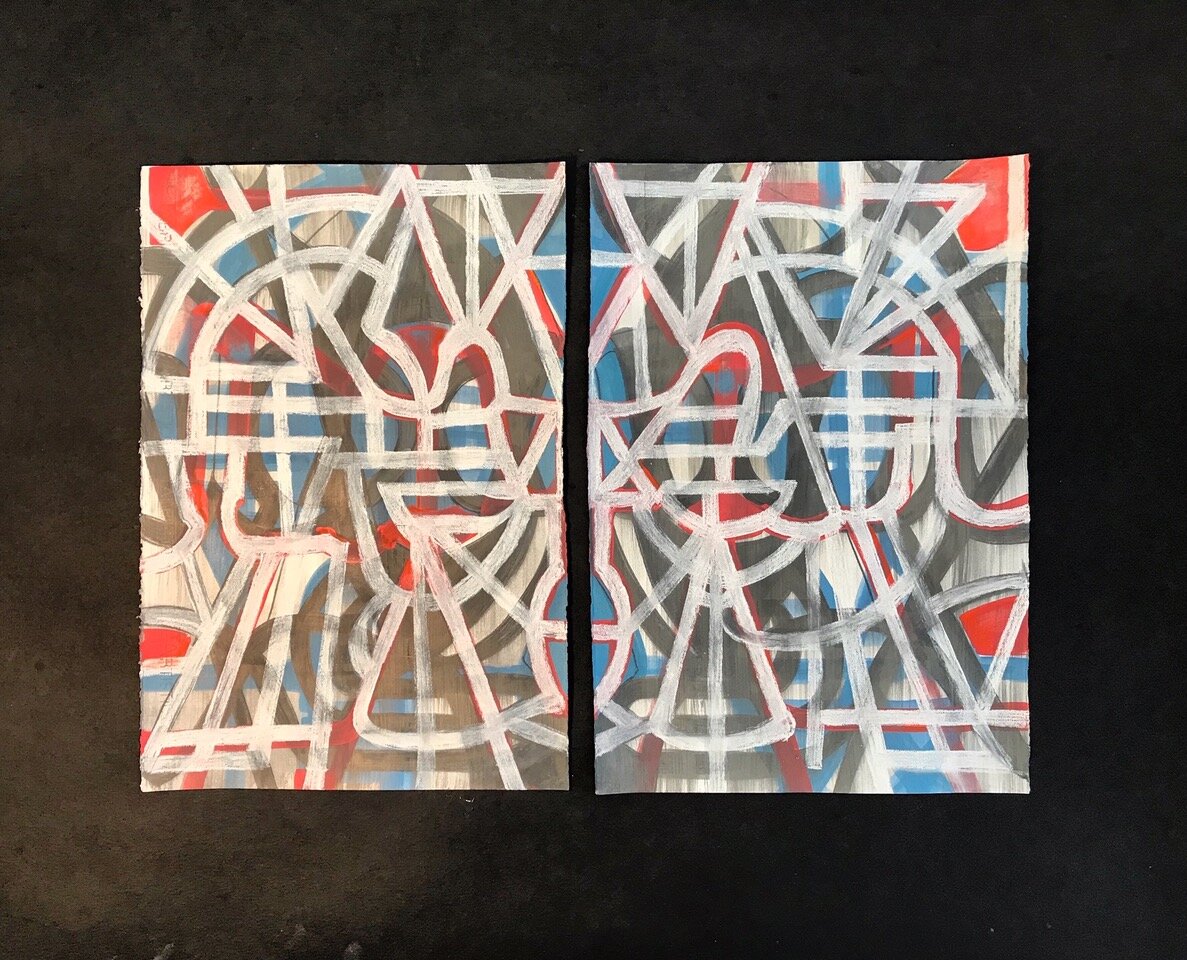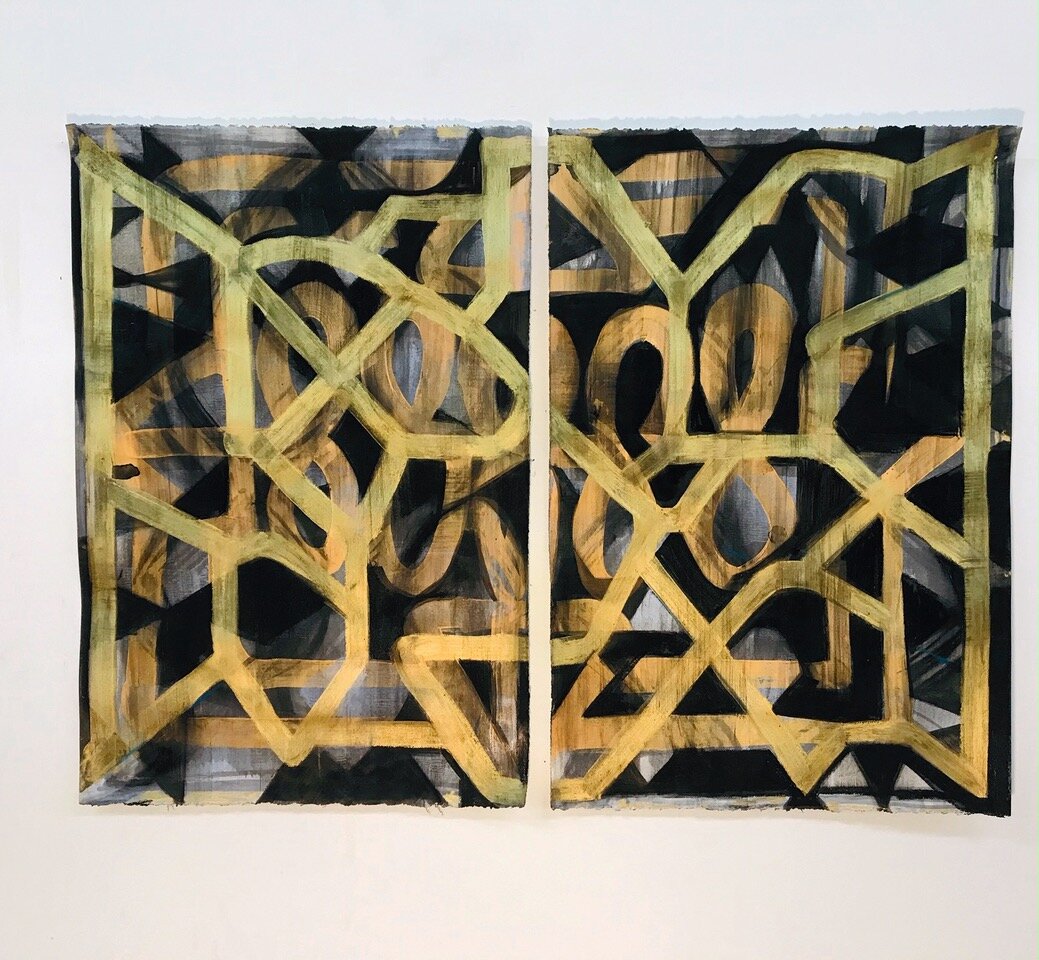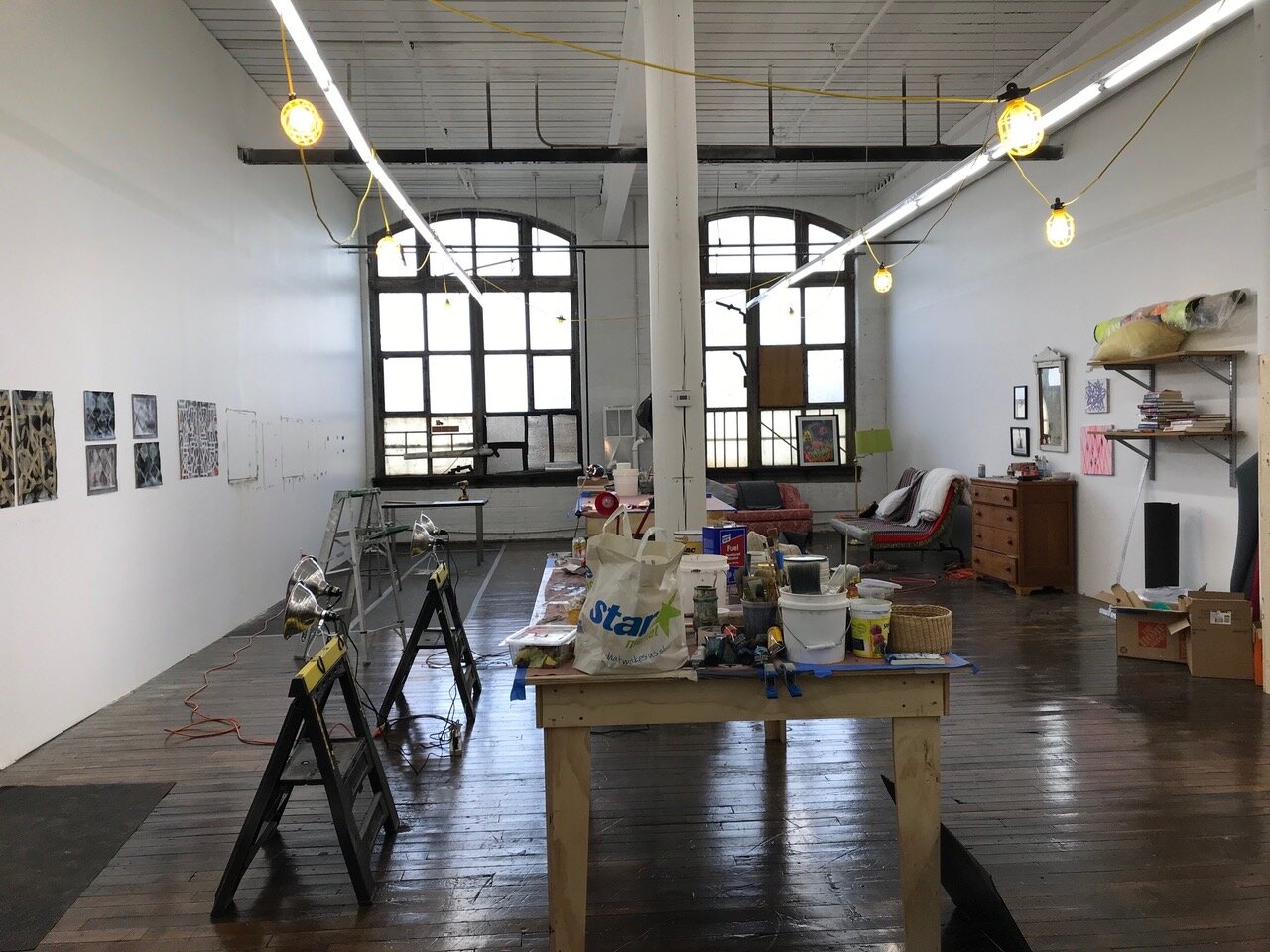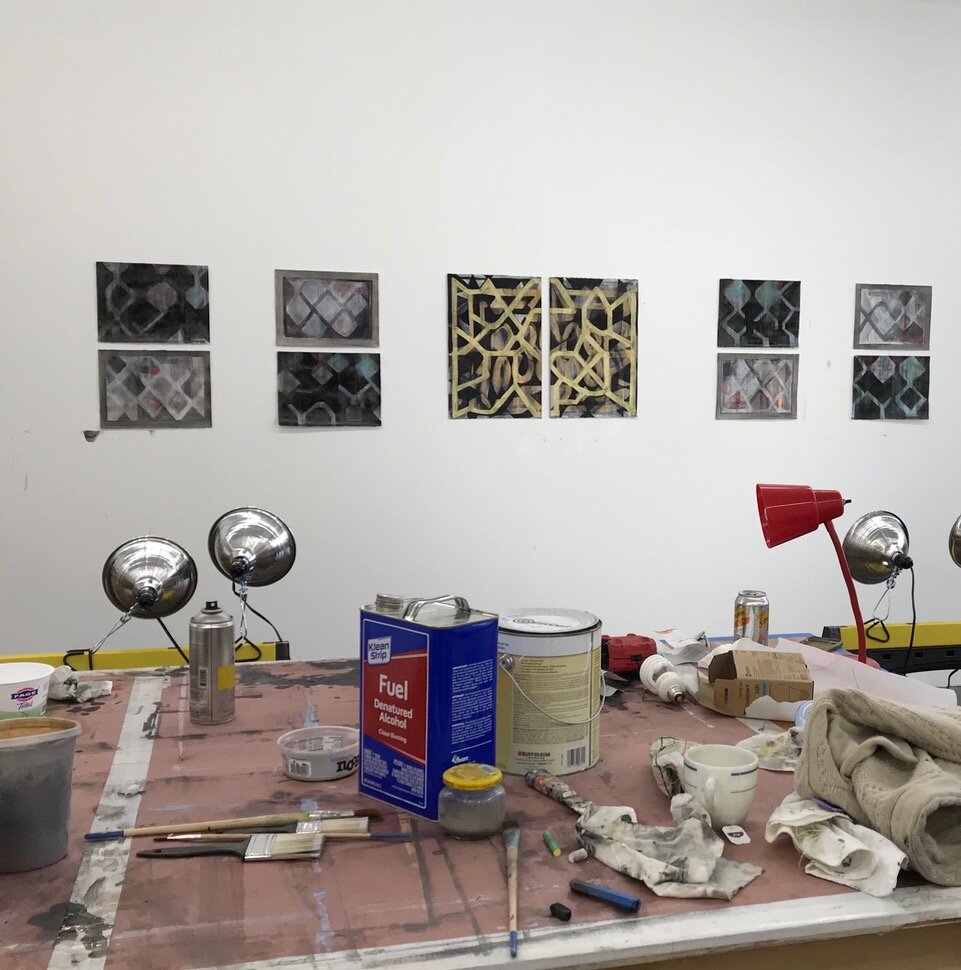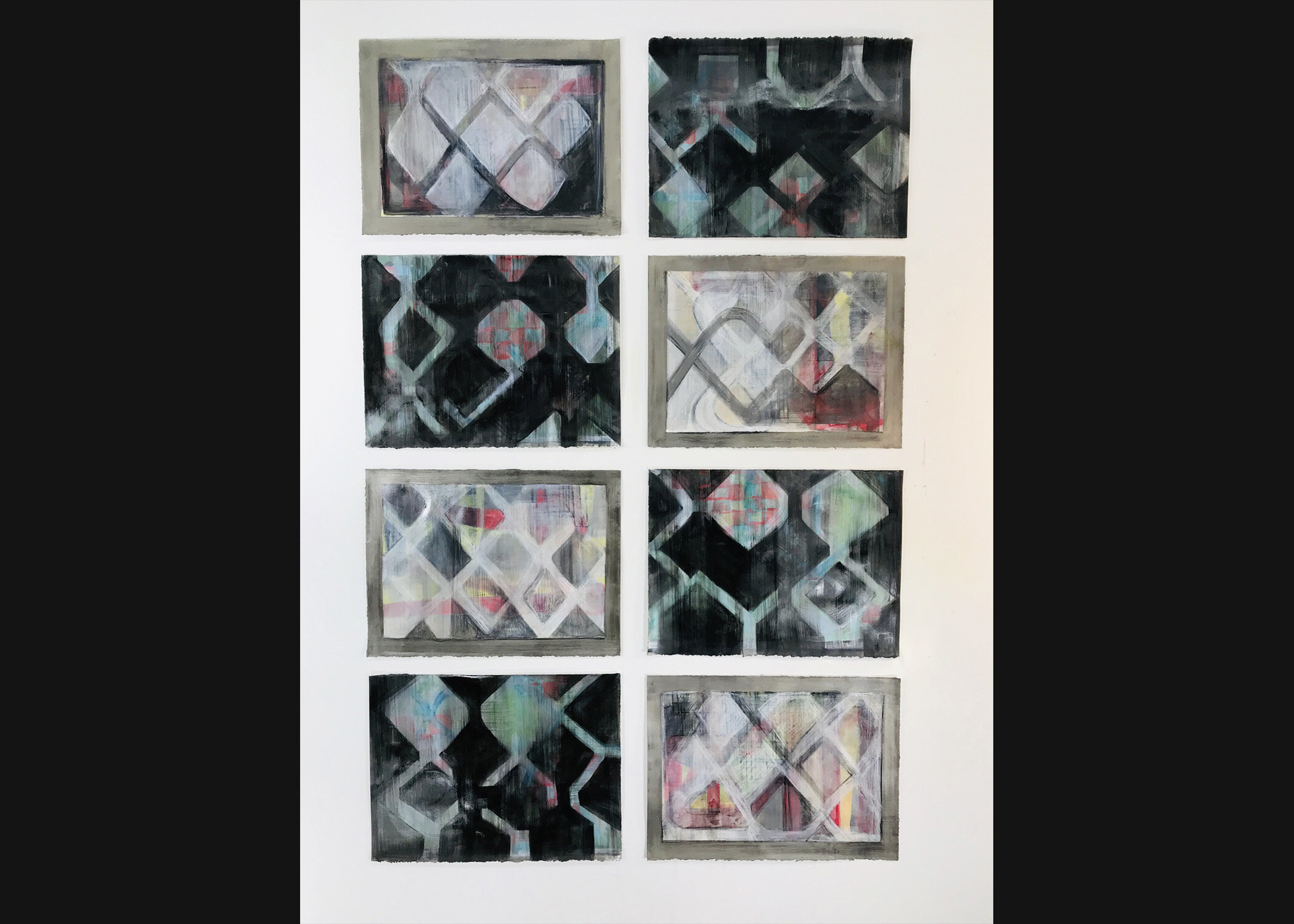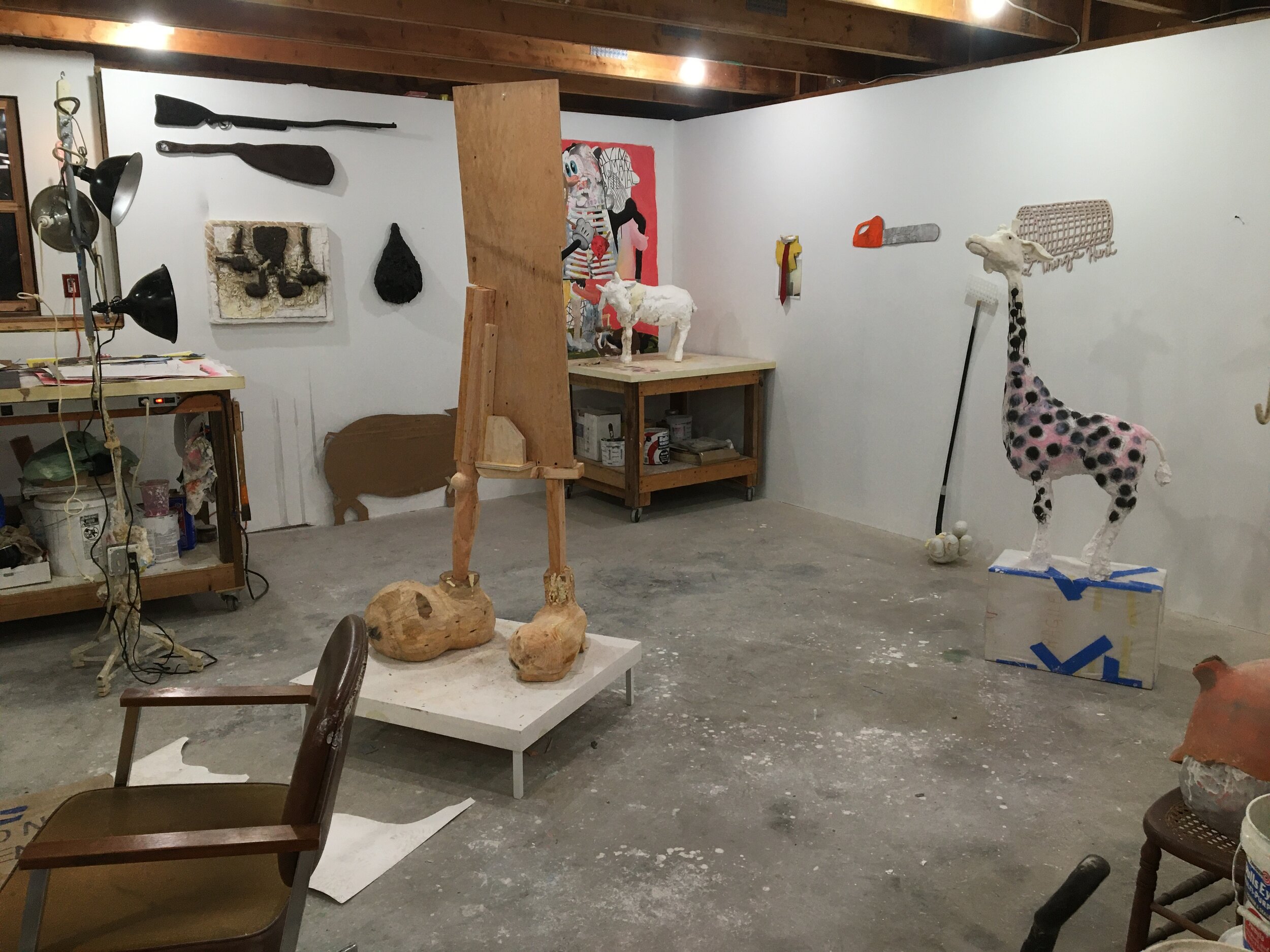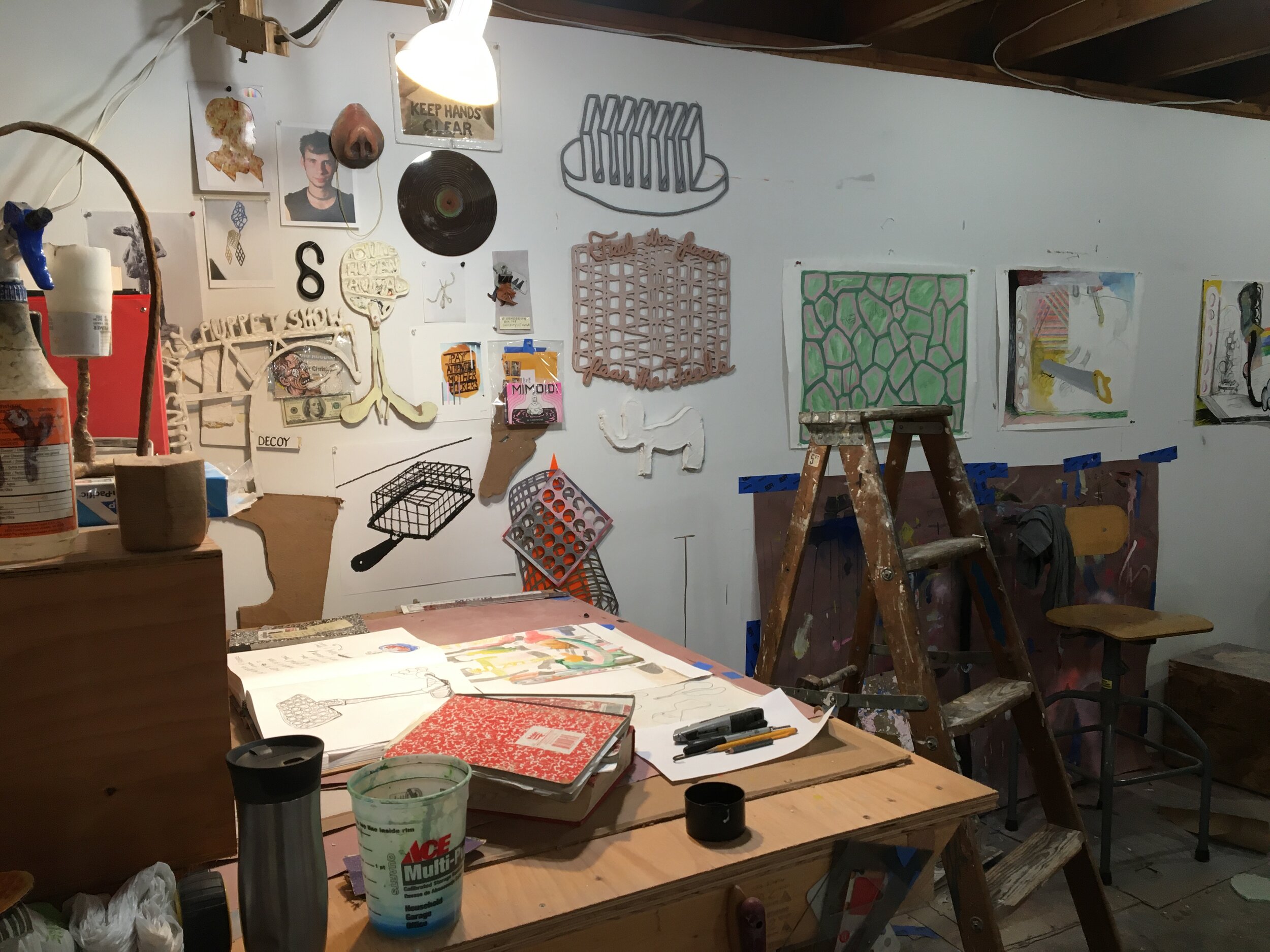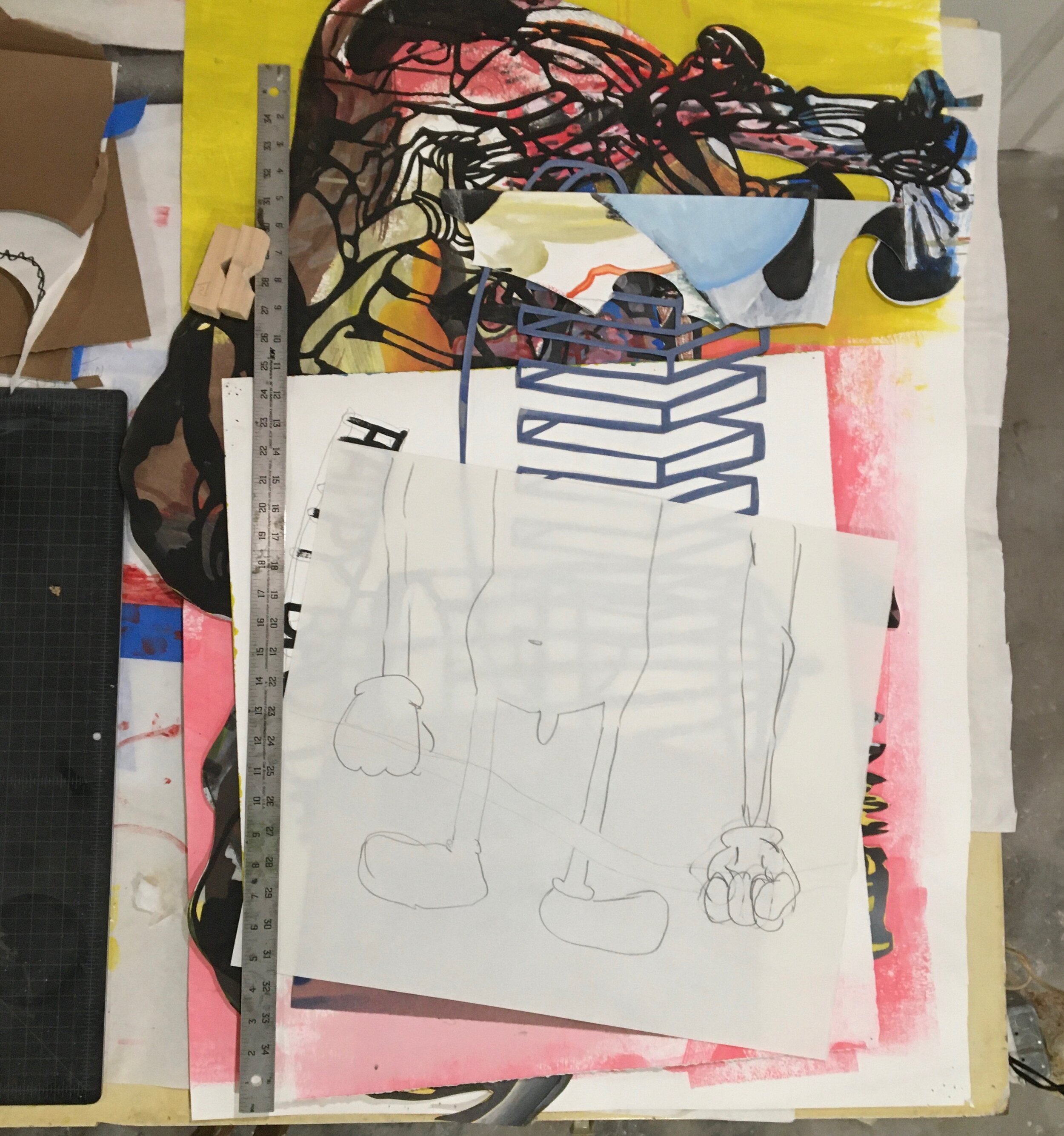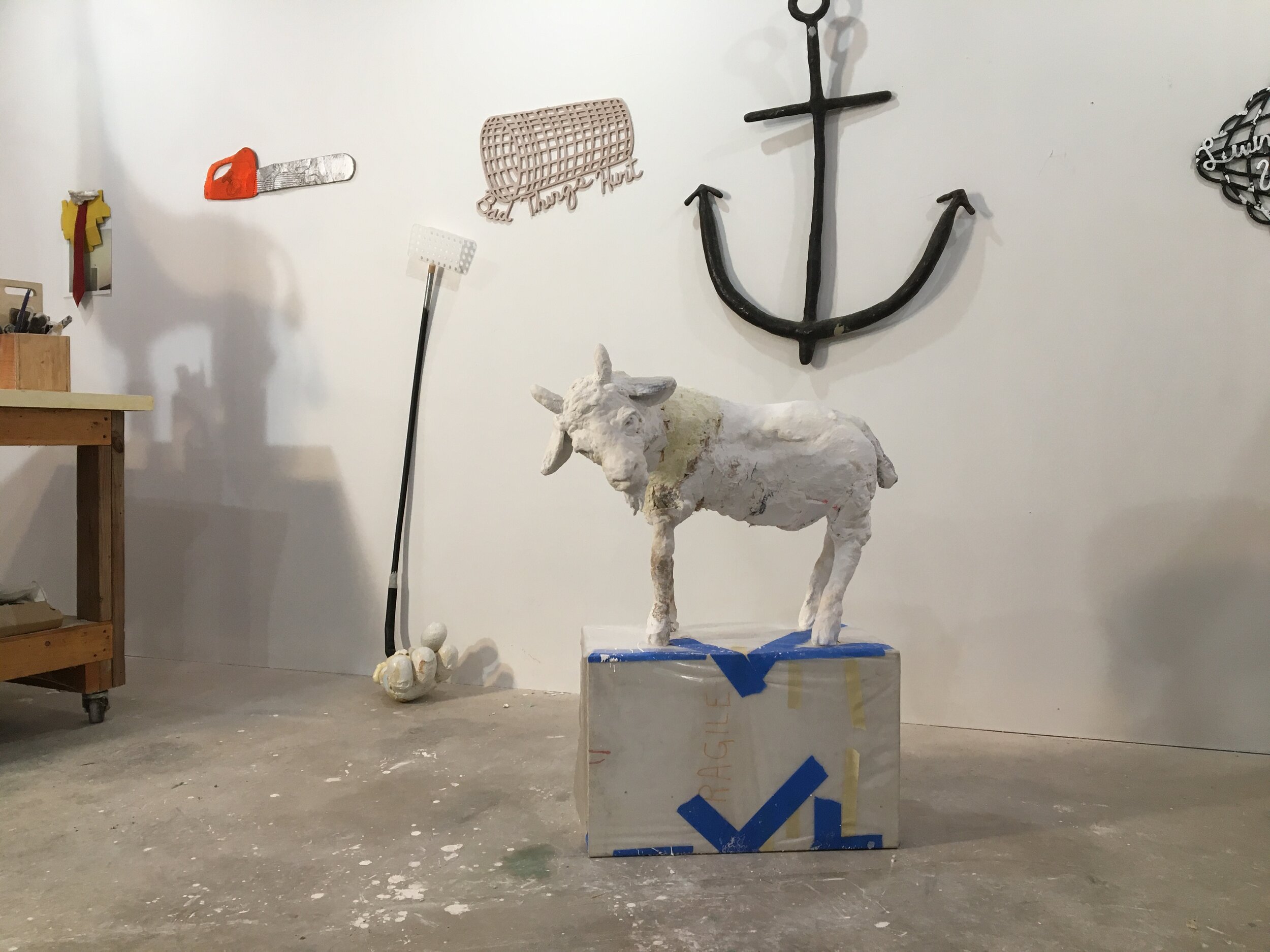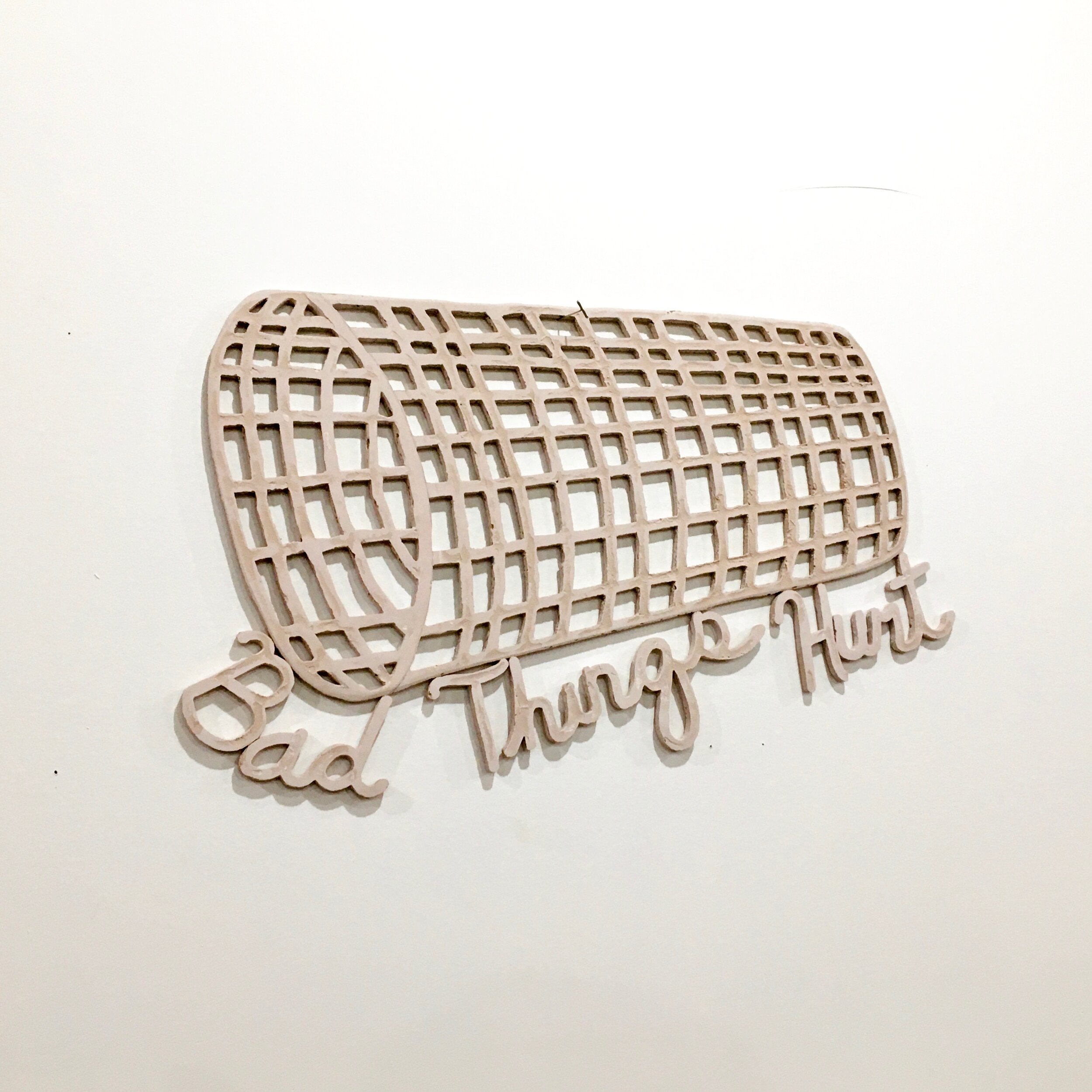VERY is excited to present our In The Studio series. We’ve gathered a number of artists who have generously agreed to share their art-making spaces with us through images and insights on their process, progress, failures, and philosophies. We hope you enjoy.
If you would like to receive In The Studio updates by email, click here.
IN THE STUDIO: Deborah Davidson
August 3, 2025
In my studio practice, I am informed by ineffable ideas – especially language (and related text, voice, sound), history, memory. What I want to do with the work is impossible; I want mute objects to speak. The process itself becomes a way to visualize this unattainable goal and therefore is the way the practice propels itself – so that the subsequent projects attempt to complete the previous ones. With the work over the past five years, I am interested in making manifest what I see as my interior life. The drawings made of color pencil on paper, are about things disappearing, about things ending.
The paradox of making and negating occurs at the same time. They reference objects whose mass and weight are suggested, somehow adhering to the force of gravity. They appear to be drawings of sculptural objects, the pencil is akin to thread, intensely woven; spun around themselves, measured, mysterious. The drawings are unravelling, dissipating, and at the same time somehow re-assembling and re-defining themselves. These pieces speak to the fraying of our lives as we have known them to be. But they also speak of possibility, and diversity, the richness of poetic reassembly.
-Deborah Davidson
For more on Deborah read her interview with Napkin Poetry Review:
https://www.napkinpoetryreview.org/interview-with-deborah-davidson
photography: Julia Featheringill
IN THE STUDIO: Leah Giberson
June 28, 2023
Palm Springs continues to be a subject and place I return to frequently. I would never want to live there, but the location continues to fascinate me with its meticulously manicured mid-century scenes built at the base of a rugged mountain range and abutting a vast expanse of desert. It also sits above multiple fault lines-- including the giant San Andreas. The tension between constructed comforts and uncontrollable natural forces exists in spades in Palm Springs and is at the root of most of my work.
The majority of these new pieces began with photos I've taken, though I've eliminated geographic details which would tether the work to a specific place. By contrast, I dive deep into the minutia of the human-made objects, unearthing clues in the distorted reflections, looming shadows and doors left ajar while wondering what might lie beyond our view. Painting allows me to distill the underlying image to what feels essential, all while pushing and pulling to create depth in the flatness, light in the shadows, and shine in the reflections.
- Leah Giberson
IN THE STUDIO: Kevin Foley
October 26, 2022
Growing up around and now working for my grandfather’s asphalt paving company has given me an intimate look at an occupation that is often seen by outsiders as an inconvenience, yet it is integral to everyday travel.
This selection is mostly from the past few months with the exception of the small trailer sculpture and the pile of half-inch stone. Some of these photos show the quieter moments that can happen throughout the workday, while others show the spaces involved in this kind of work. All of which are about exploring and familiarizing myself with this world and the people who exist within it.
I photograph almost exclusively in black and white because it is how I have trained myself to see form and as Robert Frank said, “Black and white are the colors of photography”.
- Kevin Foley
IN THE STUDIO: Audrey Goldstein
October 4, 2022
I’ve been working on these pieces in mixed media for about 16 months. It takes a long time to gain any understanding of where the work is taking me. I’m realizing these works are a type of landscape; a felt, internalized landscape that does not rely on observed scenery. They are intuitive landscapes that explore the inseparability between our bodies and land. For example, in “Mustard Sweater”, I’ve unraveled a sweater and used the kinked, dangling yarns to suggest broken landmasses or cracks in ice. The sweater’s color becomes the color of dirt, of rivulets that cascade down the surface of the piece before transforming into a linear depiction of a floor plan.
- Audrey Goldstein
*Hover cursor over images to display work titles
IN THE STUDIO: Cheryl Schainfeld
May 24, 2022
At the present time, I’m working on three different bodies of work both in my studio and in plein air. The first is a series on paper that I started in 2011 called Bodies Disrupted. I’m fascinated with and find beauty in the grotesque; the scars and the wrinkles of lives well lived. Artists such as Wengechi Mutu, Frank Auerbach, Francis Bacon and many others inspire me. My process begins with a 3D reference model on my computer where I abstract the model by twisting, stretching and scaling the various limbs and torsos. I then print a black outline of the final figure onto handmade Japanese paper and add layers of acrylic, gouache and India ink as well as collage. Using flicking, spraying and dripping techniques also adds to the uncertainty and excitement of the process.
The second series of work are random portraits from memory I paint in watercolor on paper receipts from coffee shops, grocery stores and gas stations. I love the spontaneity of making these and carry a portable watercolor set with me so I can paint them wherever I am. The third works of art I’m creating are larger abstracted paintings with accompanying video animations. I love working on a large scale where my whole body is involved in the process. Most of all I feel really grateful to be creating as well as being part of a wonderful arts community.
-Cheryl Schainfeld
IN THE STUDIO: Charles Suggs
May 3, 2021
In March 2020, I was fully engaged in my second year of graduate school. Suddenly the Covid-19 pandemic forced me and my cohort to abandon our Boston University studios. Adapting my one-bedroom apartment into a painting studio, I switched to acrylic paints and water-based inks instead of oil-based material. With no access to an etching press, I made an oversized gel plate consisting of Walmart brand gelatin and lots of vegetable glycerin. These adaptations were necessary for me to continue making art, and now they are part of my everyday work process. Currently, I'm making monotypes from the homemade gel plate using water-based Akua intaglio inks.
I also make drawings using the smoke from a candle, a process pioneered by South African artist, Diane Victor. This technique allows for expressive drawings that are, at the same time, very delicate.
I am also exploring a project about two instances I had with police in Savannah, GA, in the 1980s. Right now, it is in the thumbnail stage, mapping out the narrative. I haven't decided yet whether it will be an animation, graphic novel, or an entirely different method.
- Charles Suggs
IN THE STUDIO: Ellen Rich
March 9, 2020
A year ago, as the Covid warnings and the political climate became increasingly intense, I sought refuge in my beloved studio of thirty-two years. It was eerily quiet in the big building, but it wasn't frightening. It felt safe. I began this work shown here to reassure myself.
My approach to making work is intuitive and explorative with the goal of creating a piece that speaks with emotion to the viewer. Playing with abstract shapes and high key color to make art that comforts is as valid as any other. I love working with the infinite color choices, the additive action: putting down a shape, covering it, altering it with another shape, working, re-working, obsessing, making it better (or worse), adding but rarely subtracting until it feels right. The sometimes-rough edges and the unfinished, messy bits that result look a lot like real life.
-Ellen Rich
IN THE STUDIO: Lauren Karjala
August 28, 2020
In 2013, I made my first portrait, a painting of my brother called “A New Beat”. It drew many comparisons to Alice Neel’s work which led to what I consider a kinship with her. Despite Neel’s often inaccurate proportions, strange, often muddy colors, and heavy contour, her work is able to access an inexplicable likeness of the sitter, something that goes beyond shape-making, color and value. Somehow, she captures their essence.
This is something I seek in my own work. I have found that if I allow it to flow through me, rather than attempt to force it, the likeness occurs. I often feel more like a witness than a creator. I generally work quickly, painting in short bursts of two or three hours and then let it sit for weeks, sometimes months. I tend to apply paint very directly and as close to the final color as I can get; but lately I have been attempting to incorporate translucent layers that build to the final result.
Perhaps surprisingly, my work has been most influenced by the music of Joni Mitchell. I come from a family of musicians and most of my early creative education occurred within music. I’m profoundly moved by Mitchell’s fearless exploration of her own voice as an artist – often using untraditional tunings and surprising chord structures in order to create the exact emotion she attempts to convey in each song. Her lyrics paint a deeply vulnerable and revealing portrait of even her most painful life experiences, so much so that her friend Kris Kristofferson allegedly said to her, “Oh Joni, save something for yourself.” The vulnerability in her work inspires me to be vulnerable as well, to use my voice to process my own experiences as well as find solidarity with others.
- Lauren Karjala
IN THE STUDIO: Tammi Jane Meehan
july 28, 2020
It is difficult for me to write about my work. I have disdain for writing about the visual experience. The first few months of the year before the pandemic hit was a veritable renaissance for my work. I had not accessed a large space for making art in over 15 years. When I first moved into the space in October, I found mangled tubes of paint from Pearl Art & Craft and Utrecht that I had bought decades ago. In the excavation and purging process, I found pigments I bought at Magasin Sennelier in 1995. I finally started working on canvas again which generated an explosion of new work. I established a regular tempo for creating, but once lock down began my mental health counseling practice boomed and the rush of new artistic endeavors came to a halt.
I view my studio as a place of solitude. It is a personal space where I can access a peaceful mindset. It is a nice break from the intense work of mental health counseling, especially now. I channel stream of consciousness visions and use the tools at my fingertips to create visceral and often cartoon-like pieces. I work on multiple canvases, wood or board at once with ink, acrylics, dry pigment, encaustic and oil paint. I like to keep it immediate and fresh. I sometimes leave a work for months without making a mark. I just sit and look at it or walk by and look at it or take a photo and look at it or just turn it around to face the wall. I relish the idea of discovery, irony and humor within the safety, simplicity and familiarity of a 2-D field.
-Tammi Jane Meehan
IN THE STUDIO: TenseOne
July 14 2020
What we do as writers is not street art. Graffiti is more hardcore and has rules to its existence. A street artist may come with the intention of stenciling or gluing an object with some politically motivated objective. As a graffiti writer, you write your name, take a picture and leave. Politics from time to time may influence a graffiti writer, but it’s seldom. In my personal work, my objective is to tell a subliminal story through shape and color.
During this time of social distancing and desolation my creativity has driven me to explore abandoned places. Under normal circumstances, writers have to be very discreet about entering and exiting places where we generally choose to paint. It’s important to stay out of the eyes of officials and anyone who looks like a vigilante. My latest exploration has led me to a state-owned property that was once a hospital for those considered to be ‘mentally challenged.’ What interests me the most about the place is the variety of surfaces, the old-style layout, and the silence. I’m moved and intrigued by the architecture. I get a less-is-more feeling that comes over me when painting abandoned places; a balance between creating something subtle and new and preserving what once was.
-TenseOne
IN THE STUDIO: Tory Fair
june 30, 2020
In the last few months of adjusting to the pandemic, I’ve focused on work that has developed from an intergenerational dialogue with Mary Miss that I began two years ago. Talking with Miss in her studio has inspired me to steward some of the seeds that she planted as a sculptor in the 1970s. I am guided by her priorities: “Breathing space, human scale, and first-hand experience.” Sculpture has the ability to give back and empower these fundamental rights.
Miss’ early sculptures have inspired me to get out of the studio and work directly on site. I have been focused on adapting and reimagining one sculpture in particular, Portable Window, that Miss made in 1968. The sculpture is essentially a big plywood wheel with handles and a rectangular window in the center that frames a view. I have made a few variations out of reclaimed wood that I roll around my neighborhood, and as we moved into quarantine, a few smaller versions that I roll around my house.
The videos you see are capturing glimpses of what the sculpture is, in a sense, framing. On a recent walk with family, we rolled Portable Window along with us. We rolled by closed stores. We rolled across Mass Ave, barely any cars. And when we made it to Spy Pond, we carefully rolled it, slowly, through the water. This slow flipping is how I feel right now. Observing calm, and even beautiful in moments, but then seamlessly moving to disorienting and dizzy, a rupturing of the frame. Uncertainty. The turning of the wheel, the spinning of the landscape, the rotation of the earth. And then again, another day. It is a slow but essential turn to reframe our day to day.
-Tory Fair
IN THE STUDIO: John Axon
june 3, 2020
For over 10 years, my studio was inside the hard drives of my computers. I began to transition to a physical space in 2012 after I started using models and employing photographers to produce source images for my work. I have used a dedicated studio space for the past two years, but since the start of the pandemic, I have transported my studio into the finished basement of my house.
Initially, the raw photos of the models were the building blocks for images I made in Photoshop that I digitally cropped, manipulated, flipped, and mirrored to create two-dimensional flesh entities. The bodies in this work are objectified, not in a sexual way, as this expression usually connotes, but as objects that lose their person.
In an attempt to give the images a more three-dimensional feel, I experimented with projecting them onto objects (and eventually other bodies) and photographing the projections. I also added some of my pattern-based digital art to the projections and patterned fabric to the photoshoot setting.
Most recently, I have introduced architectural imagery into the projections. I began using my own body and a remote shutter to determine which images would work best for a shoot with a model or multiple models. After the pandemic began, the restrictions eliminated the option of bringing in models and photographers, so I began shooting with projections on my body.
What began as some tests has led to a new body of work that has moved away from the original objectified, anonymous flesh shapes to a much more personal series. I was reluctant, initially, about the self-centered nature of self-portraiture and the idea of displaying myself in a private or intimate way. It has also been difficult as I am fairly uncomfortable in front of the camera and dealing with the physical challenges that modeling presents. I am not nearly as flexible as I once was, and don't have the experience to understand how to create and maintain the variety of poses that accomplished models have cultivated over time.
-John Axon
IN THE STUDIO: Candice Smith Corby
May 25, 2020
Joy is super important for me in the studio. More complicated than its cousin happiness, joy includes satisfaction, resolve, and comic relief from one’s darkness. There is an absurdity to the act of painting— almost an act of magic that often cracks me up while I work. It feels like there are fewer rules with these new paintings; except for being true and trying to keep them fresh and effortless.
Earlier in the fall I decided to return to oil paint after a long time and start a new series of paintings: a few of my favorite things. The series is about the sharing of gifts. The objects in the paintings are not only from intimate exchanges, but also often mark a time of deep longing. Although some of these belongings are ephemeral or seemingly insignificant—some of them more monumental than others—all rise to the occasion.
Years ago, I discovered the short story “Solid Objects” by Virginia Woolf about a man whose life is transformed by the discovery of a lump of glass he finds while walking on the beach. He completely rearranges his life around the admiration of this “pretty stone” and gives up a successful life of politics. This quote from “Solid Objects” has stayed with me for many years: “Looked at again and again half consciously by a mind thinking of something else, any object mixes itself so profoundly with the stuff of thought that it loses its actual form and recomposes itself a little differently in an ideal shape which haunts the brain when we least expect it.”
The objects that I have recently been painting are more than what they are. By what things are placed next to each other, how color is intensified, and how the touch of paint sits on the canvas, the mundane becomes divine.
-Candice Smith Corby
IN THE STUDIO: Elaine Buckholtz
May 13, 2020
I use the studio as a place to expand my optical curiosity. I am fascinated with the notion of mediating vision and how this relates to theories of perception, and ultimately the relationship between living and dying. My studio is a fluid space, moving from the inside to outside and back inside again. I travel often, which has led me to the format of photography as a way to mark time en route. The studio is a place of contemplation and discovery; experimentation and alchemy. I've followed my interest in perception to literature on Natural History, Philosophy, and Media Theory as well as the lives of other artists and thinkers who question aesthetics and materiality. All of this in relation to music makes everything come alive for me. Music, for me, is the elixir of life.
I come into my artistic life through the magnetism of seeing. There is a consistent potential for revelation in the act of noticing. During this pandemic, I am trying to keep in the rhythm of my body, spirit, and mind. Walking is a way to engage with the world. I don’t think of myself as having a studio practice because my work tends to be site specific, a response to a site and a situation. So, while I am in lockdown I like to wander, instigate and discover in an elemental state of curiosity. I like to think about alchemy and not knowing, whether it be imagistic or impressionistic. I like to discover the relationship between form and wonder.
-Elaine Buckholtz
IN THE STUDIO: Isabel Riley
May 5, 2020
These paintings are about sorting and sifting through layers of darkness and light. “Sticking it out”, “Keeping up” and focusing one’s mind on what is VITAL. Each day in the studio is an opportunity to peel back the persistent veils of doubt to reveal buoyancy and fresh spirits, gratitude and luck.
-Isabel Riley
IN THE STUDIO: Arthur Henderson
April 27, 2020
The studio is a sacred place for me. I’m very uncomfortable sharing these images. The studio is a place of freedom and, more often than not, failure– a workshop temple where I’m the Pungent Shaman. There may be some failure on display here but I wouldn’t know yet. Apologies all around – I took these shots, April 21 2020, during the height of the Covid-19 pandemic.
You can see a few bodies of work happening simultaneously. The anti-motivational text based pieces, the trophy beasts – vulnerable innocents and pathetic fallacies, headless (so far) male figures in relief holding on to their limp implements of irrigation. Themes of failure and impotence abound. I'm beginning to believe I'm not an optimist...
-Arthur Henderson








